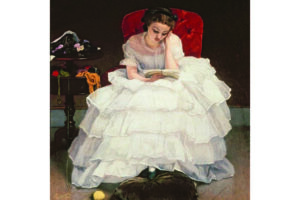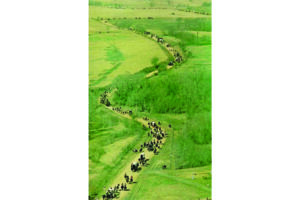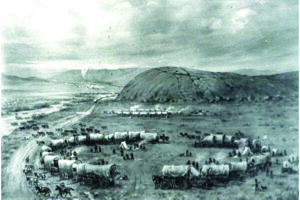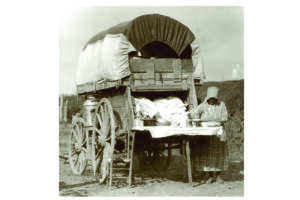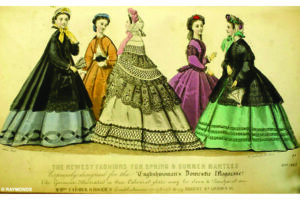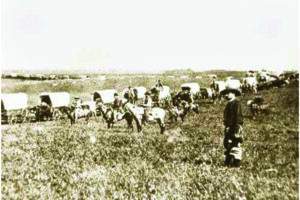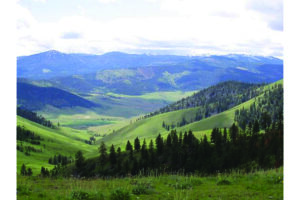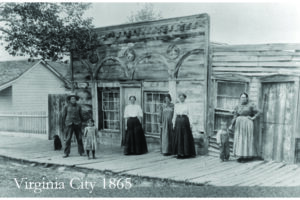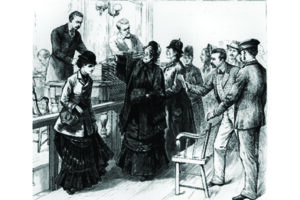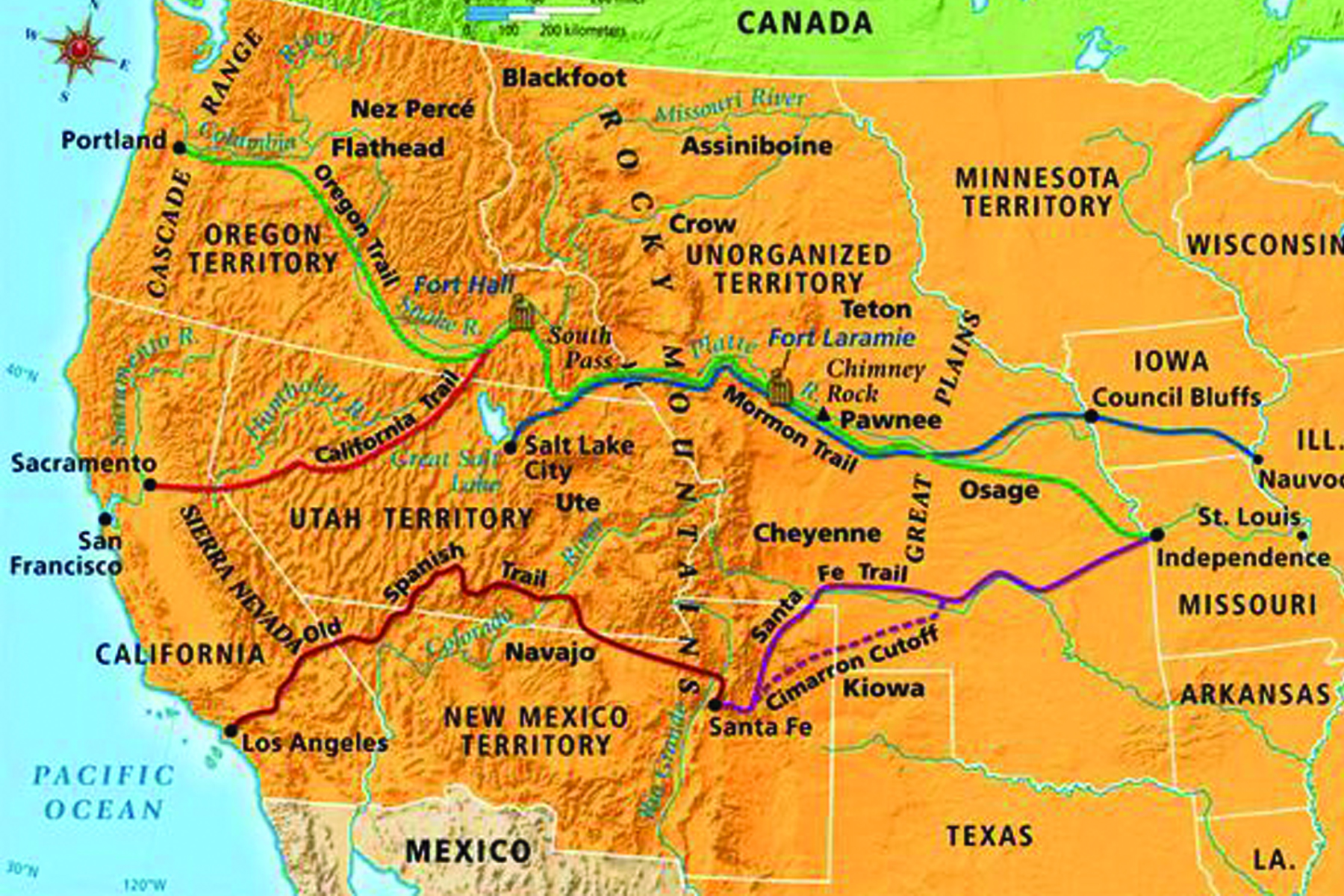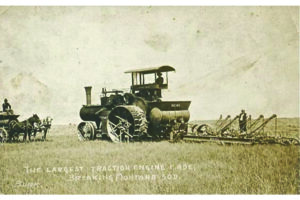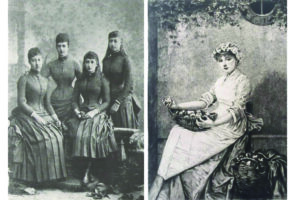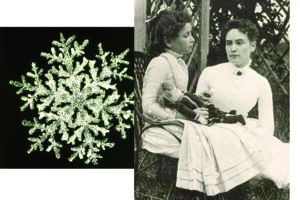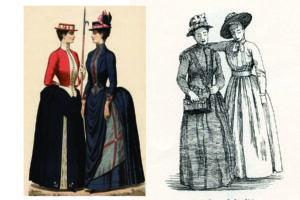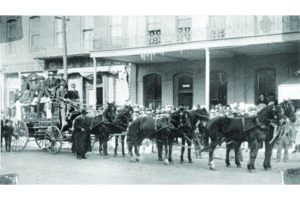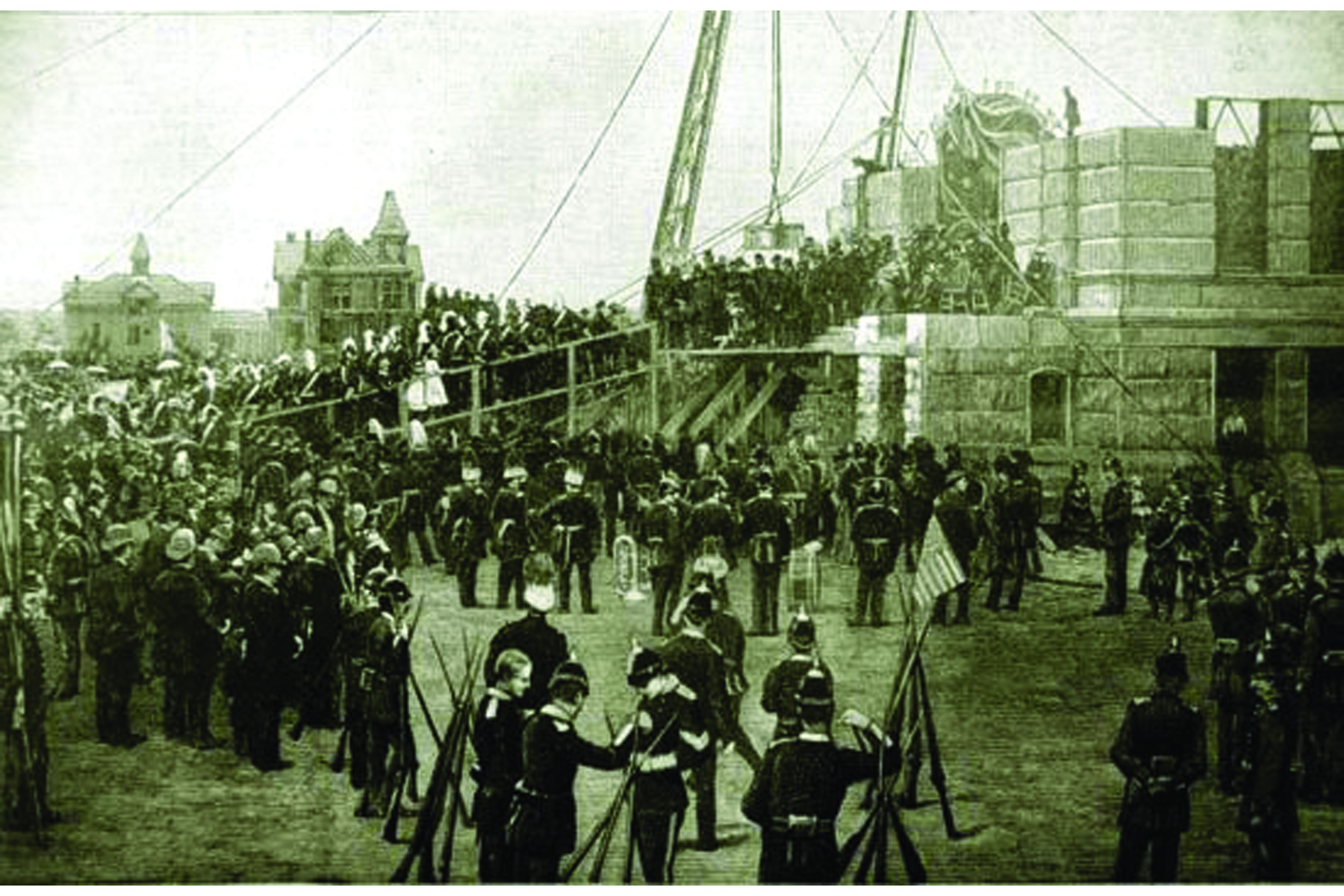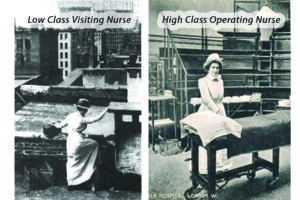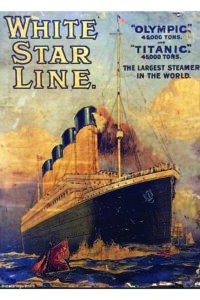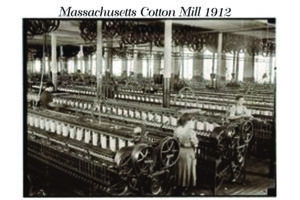
Emigration in America in Brief
Westward Expansion & Changes 1765-1912
in the Roles of Women through Fashion Eras
Excerpts from a “Buffalo Gals” Fashion Show
INTRO
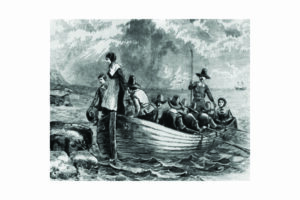
Historians say, “Americans have always had itching feet.” The continued search for a better life has driven people to write their own chapters in the story of America with their footprints.
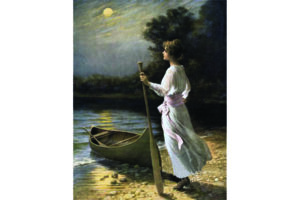
Itchy Feet
The original colonists were by our definition the first pioneers, because they left a whole culture behind to head for the unknown.
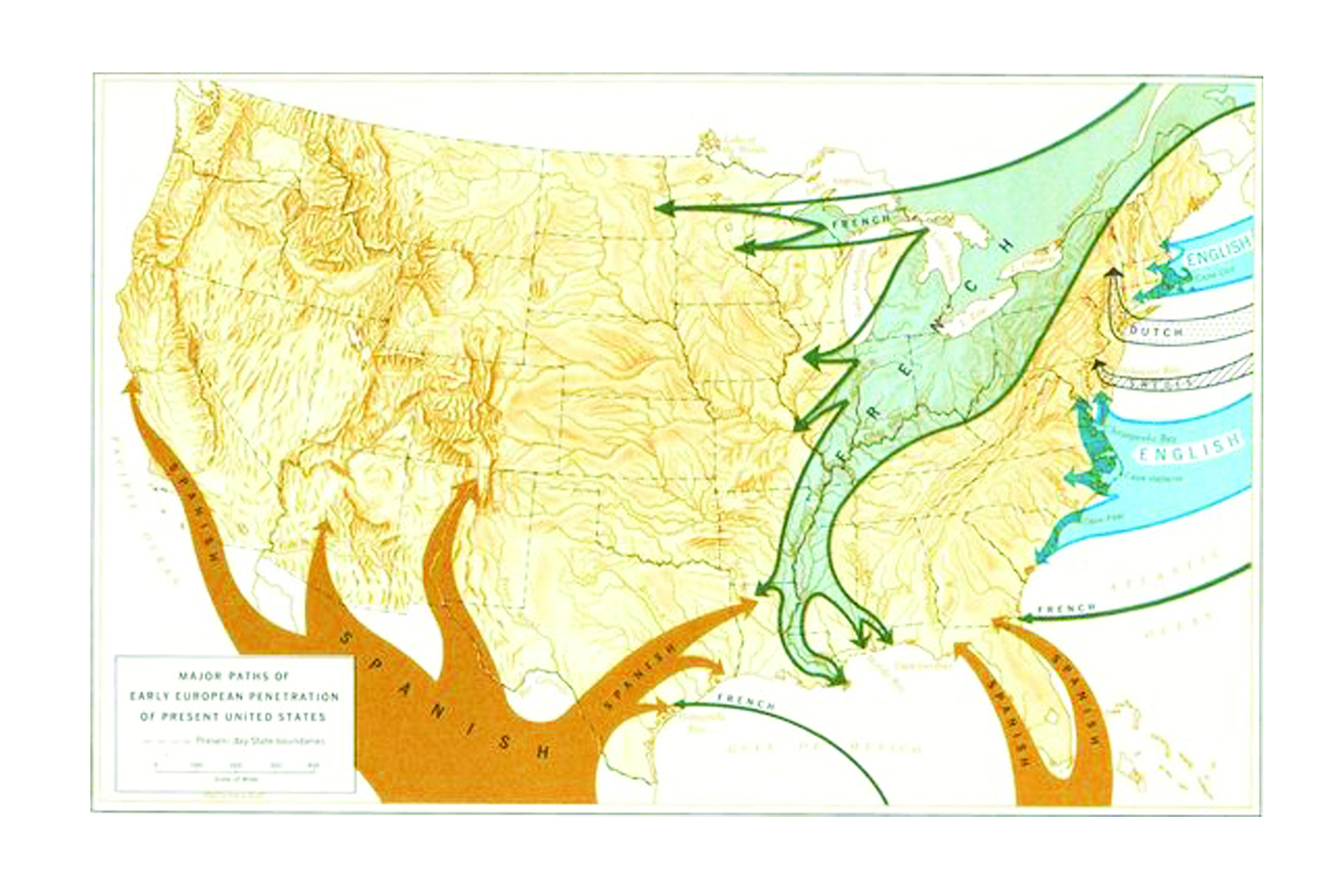
Map of original emigration to the Colonies
Their children were pioneers too, as they moved away from the safety of established communities to settle in new places; some in search of religious freedom, and many looking for better or greater land holdings.
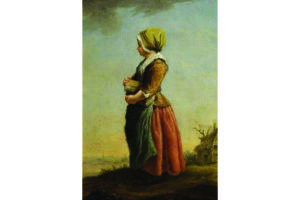
1700’s Colonial Woman on hill
Then came their grandchildren who wanted to build a COUNTRY out of their land. Into a predominantly English culture living in the original 13 colonies on the eastern US coast, came people from all over the world escaping strife back home who would mix and marry into the existing population as they looked for a new place to live in freedom.
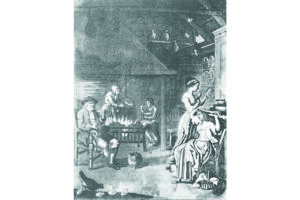
1740’s Scottish settlers in the new Colonies at home
1765
Carol lived in what was called America’s “Years of Abundance,” While England danced the minuet, a strong economic and cultural America was working to supplant English ways.
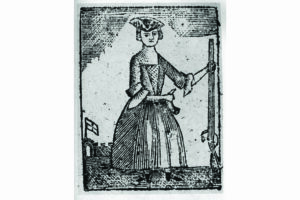
Revolutionary Woman
Roles were limited to house and home for women, but they had begun to influence policy and decisions and ran farms and businesses – when the men were gone.
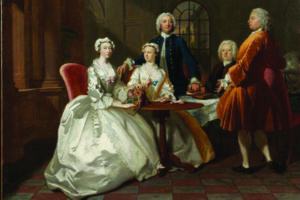
Colonial Family
Women’s independence was taking root despite the fact they were almost constantly pregnant with 12 per year average, making life expectancy 56 years old.
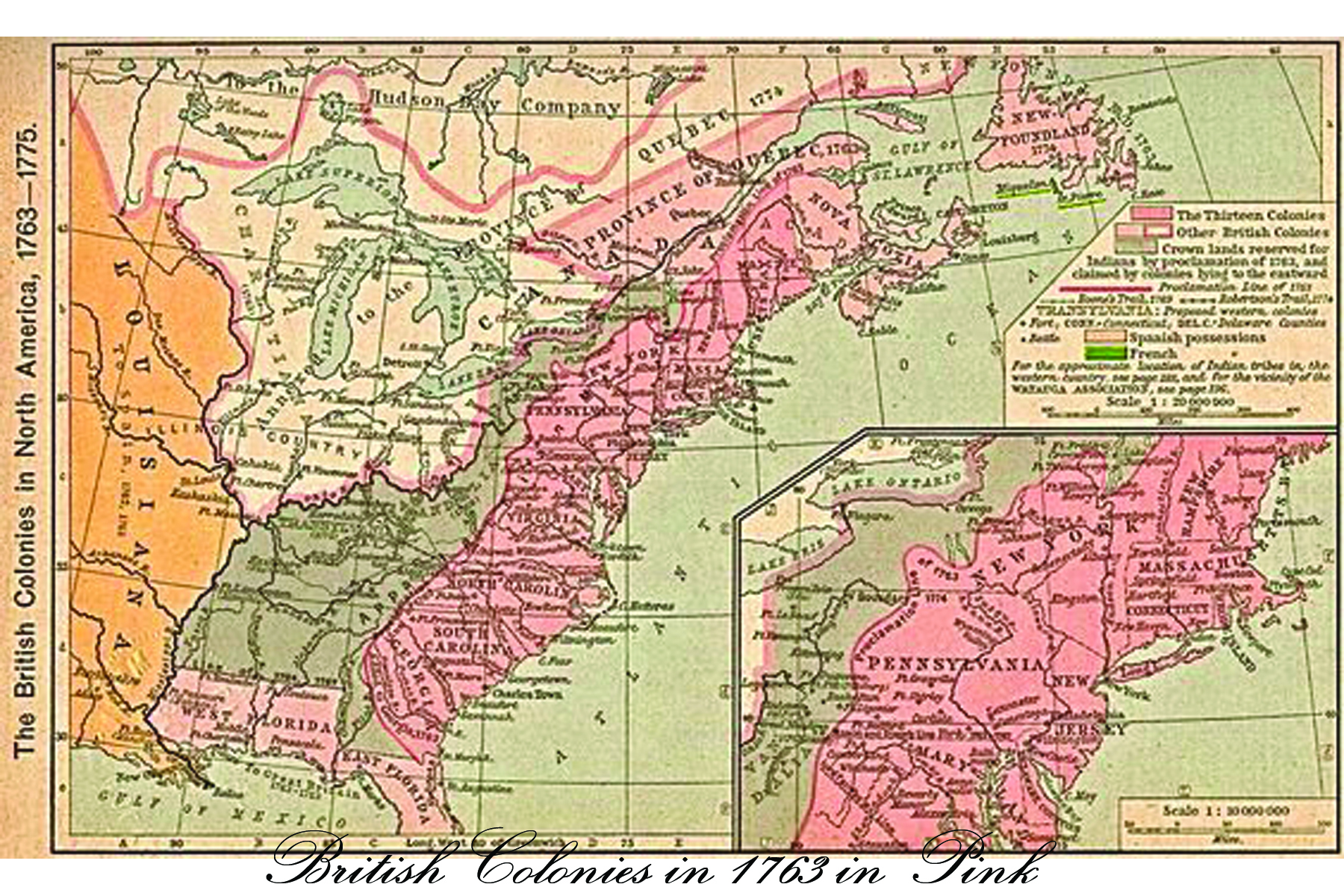
1763 English holdings map – British Colonies in the New America
America had become a “melting pot” of those who had settled already and those coming to find a new world that was away from Court and its dictates. The American “Spirit of Independence” embraced individualism and a new way of living.
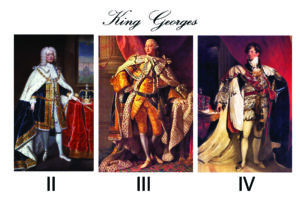
King Georges of England
This fashion era was called “Georgian” for 3 King Georges. The English copied the French, and the French copied the English Georges.
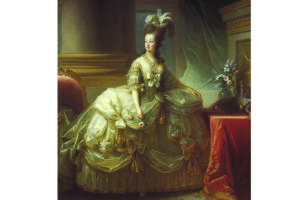
Marie Antionette
– and all followed Marie Antoinette of France who had hair that rose up 36″, skirts 8′ wide, breasts spilling over her bodice , and every part covered with tassels, ruffles, lace, and flowers.
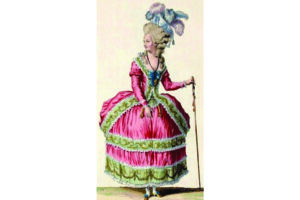
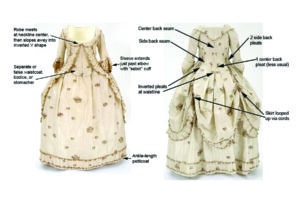
Fashion in the Colonies followed fashion in England which followed French fashion.
A common real life emigration pattern had parents who came in the 1720’s-1740’s, whose children fought in the Revolutionary War and whose grandchildren would head West to pension lands near today’s Chicago or St. Louis. They established churches in the backwoods of Kentucky that would eventually serve congregations in Cheyenne, Wyoming.
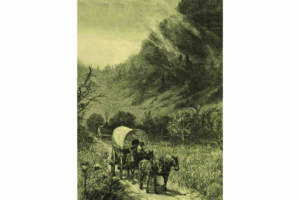
Wilderness Trail to Kentucky
1790
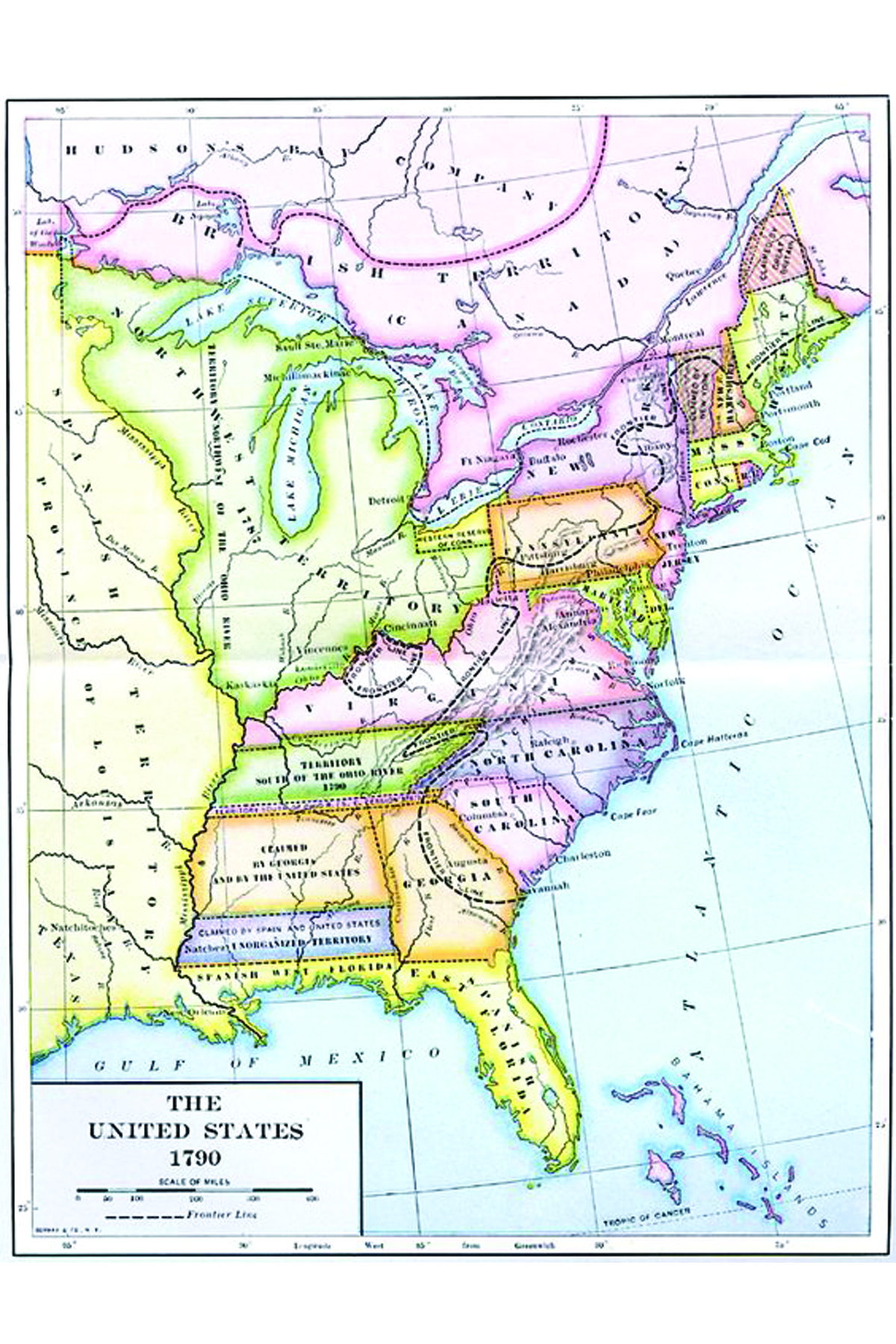
1790 US Map
Moving further west meant moving TOWARDS where ever land wasn’t classified or already settled. People like Daniel Boone, a symbol of westward expansion, were telling their wives it was safe to move as far west as Kentucky.
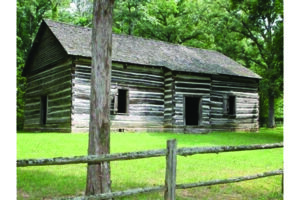
Mulkey meeting house where Hannah Boone is buried
Living in a cabin away from society with men gone for years at a time, and losing children to Indian attacks took its toll on women. Hannah was typical of those who left the wilderness to live in a small town when pioneering with backwoodsmen didn’t work out.
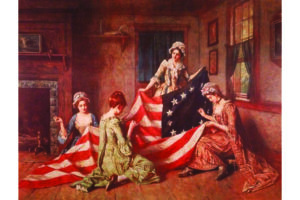
Betsy Ross sews flag
The Revolutionary War ended in 1783, but American patriots knew independence would not be won with just a war, but would always be a process in the works.
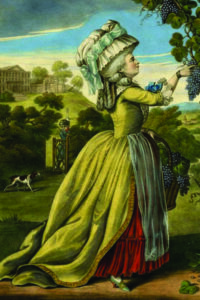
Seamstress 1790
Women reached for their own independence, although not openly yet. They became secretly involved in all operations of the new country from writing literature under men’s pen names to running family businesses.
1790 marked the end of the Colonial/Georgian Fashion Period (because it was the end of the Georges).
1805
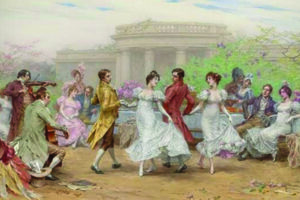
Independence Day
The main purpose of a daughter in 1805 was to marry well for political or financial gain, although she was the one who made sure indentured servants and slaves got Xmas gifts, medical care, and education.”
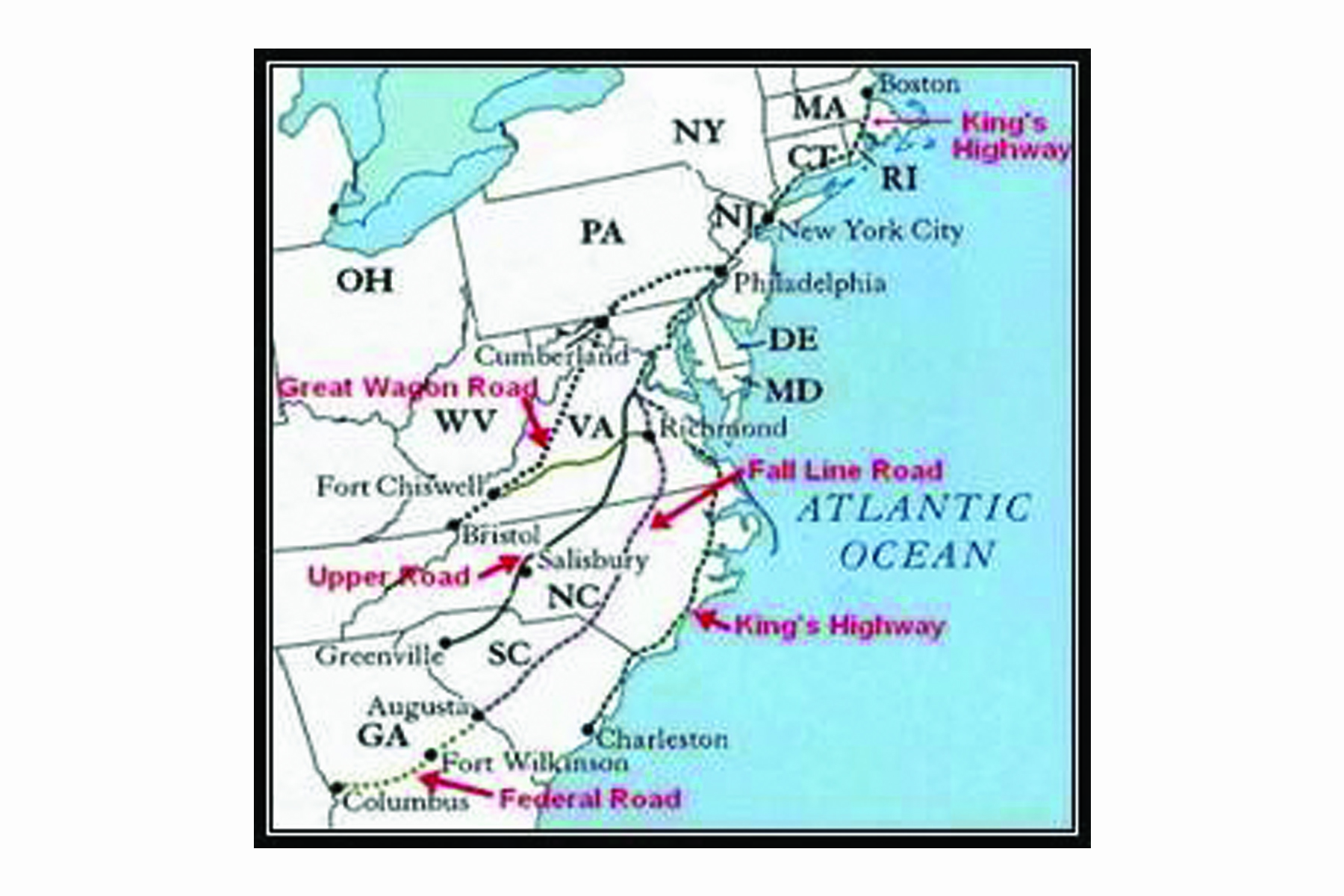
Roadways 1804
It got easier to go westward, as there were extensive roadways by 1803. The first railroad tracks were laid, and steam – ships, locomotives, and printing presses – opened minds and migration westward.
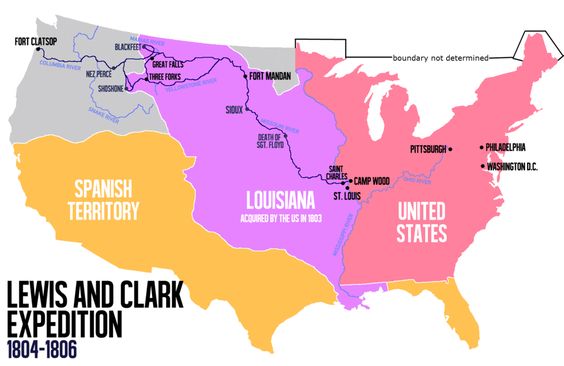
Discovery Corps Map
Lewis and Clark’s “Discovery Corps” introduced what would become the western territories.
1805 was a time of trade and profit in America. After 20 years of independence, America had the highest standard of living anywhere in the world because
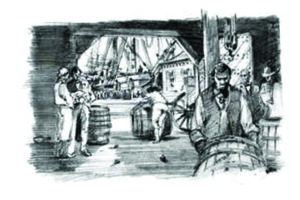
Merchant trade
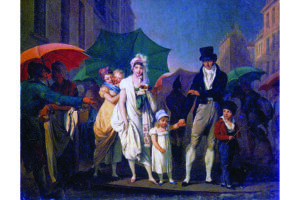
Family goes to town
Americans were self-sufficient innovators and suppliers to war torn countries overseas. America’s middle class continued to be strong and growing; made of tradesmen, merchants, farmer/planters, and industrialists.
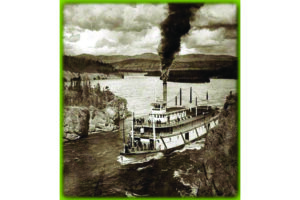
Steamboat on the Ohio
A prospering America sought to exploit westerly resources to serve an increasingly industrialized and growing population. Men who had already built wealth trading raw materials were intent to profit from newly accessible ores, timber, and land.
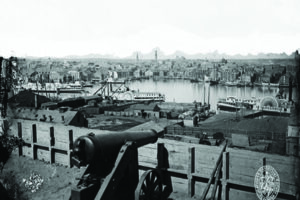
Baltimore 1804
Merchant families traded raw goods like tobacco, cotton, and pig iron for finished items like English furniture and fabric. They would later sell cannonballs to both sides in the War of 1812.
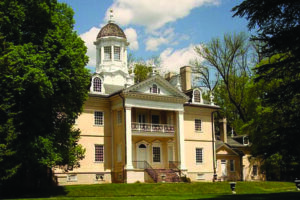
Ridgely Hall outside of Baltimore
The home life of a young woman of means included luxuries of American products PLUS world imports. It was a brief time in America where a young woman was pretty much left to do as she wished.
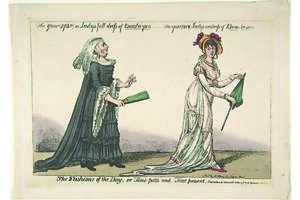
1790 fashion becomes 1805 fashion reluctantly
It was the Empire Age of fashion called the Regency Era named for the English king who had a “Regent” rule in his stead. The French Revolution and rise of Napoleon Bonaparte built new regimes with new attitudes and societal structures which directly affected fashion.
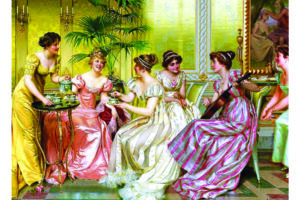
Day in the life of a merchant’s daughter 1804
The story of 1805 is a happy one of a flourishing young United States with wealth and vigorous trade – a brief time of peace and comfort for real young American heiresses like w Betsy Patterson & Louisiana purchase Betsy Patterson of Baltimore whose fathers were investing in Wyoming timber; who would marry impoverished French royals like Napoleon’s little brother who had relatives in the new Louisiana territory.
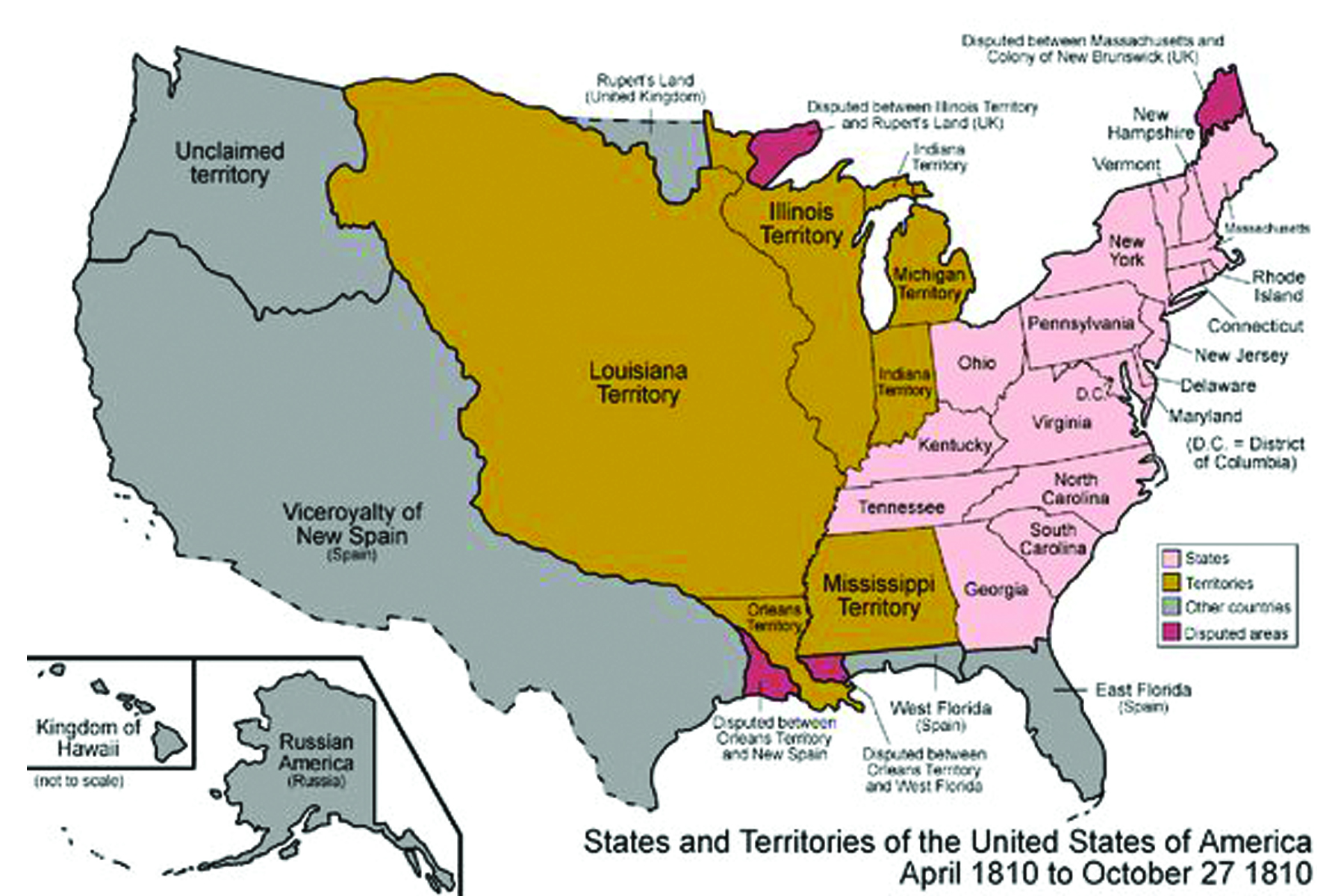
Louisiana Territory est 1804, settled 1810
1810
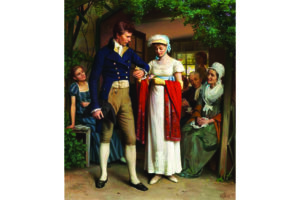
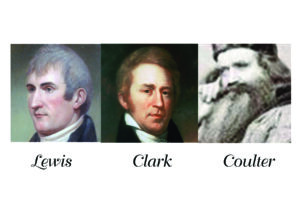
The 1808 wedding of William Clark of the Lewis & Clark Expedition took place in the city of St. Louis where mapmaker John Coulter from the “Discovery Corps” was in attendance, looking to collect his pay from the expedition. Lewis, now the governor of the Territory, and Jean Baptiste, the son of Sacajewea who had both accompanied them on the Corps (though Jean Baptiste as a newborn baby) were there too.
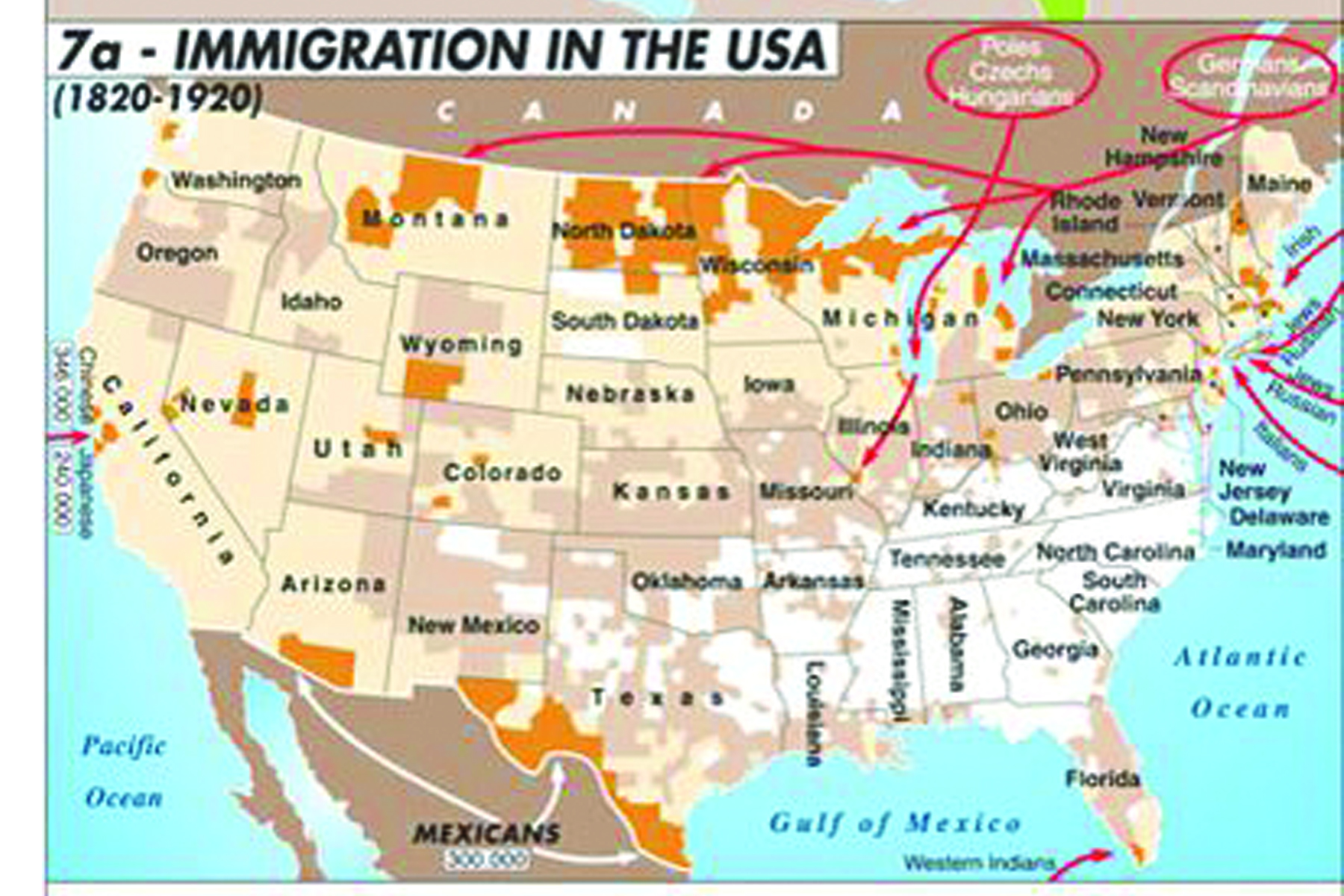
Immigration really got going in 1820 in the US
As the 19th century progressed, settlement was made in “jumps” from the now expanding eastern colonies towards the Midwest. In particular, southwest Missouri became a key stop before making a bigger leap westward.
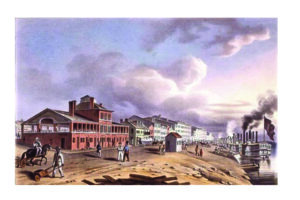
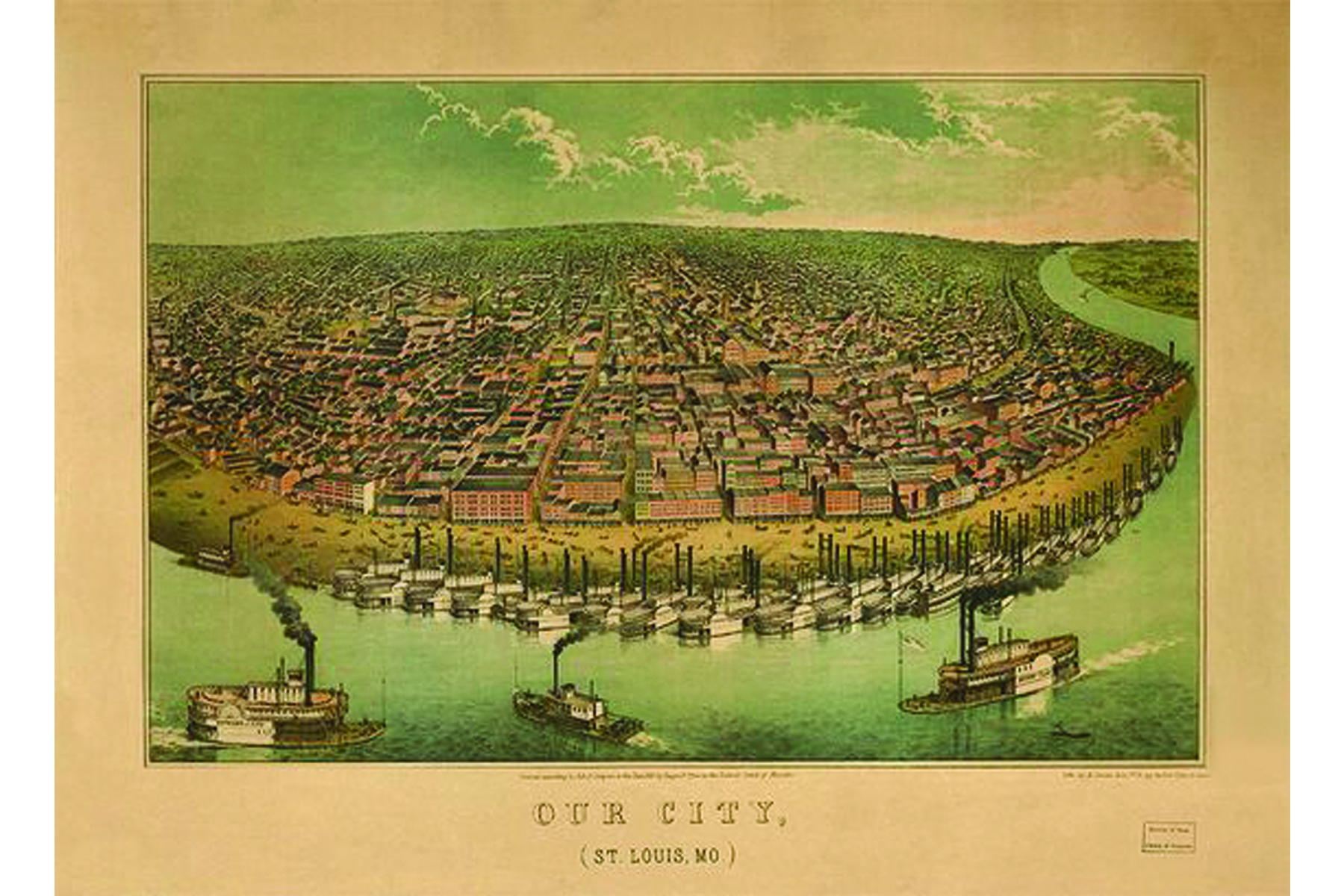
St. Louis in the early 1800’s
St. Louis, previously only a rough French settlement for trappers and traders, took on a new role as a staging point. Within the Louisiana Territory purchased from France in 1804, it was populated by generations of French joined by aristocratic Germans and English.
Royal immigrants who, due to their birth order, could not inherit back home, enjoyed high class standing in Missouri. American women of wealth married these nobles.
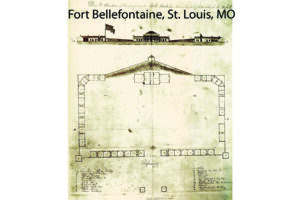
Fort Bellefontaine St. Louis
Pioneers who had already moved to Kentucky, Tennessee, and Virginia, were on the move again to exploit fur, timber, and ore in the Missouri region. Some were returning from the West to trap, mine, and log, or perhaps because their wives made them return to society.
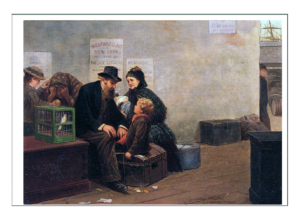
Immigrants to America arrive by ship 1810
It was still the Regency Era with the French in charge of world fashion which would last until Queen Victoria took over the English throne in 1837. Napoleon’s second wife Marie Louise let him dress her up with the help of his little sister Caroline
.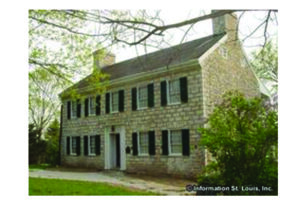
Final home of Daniel Boone and family completed 1809 St. Louis, Missouri
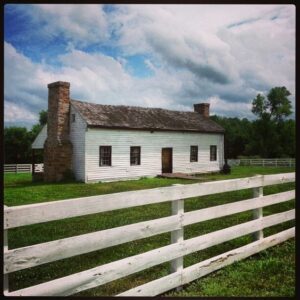
Daniel Boone’s son had a farm just outside St. Louis
By 1810 the St Louis population would explode 228% with additional working class people coming directly from England, Ireland, and Germany.
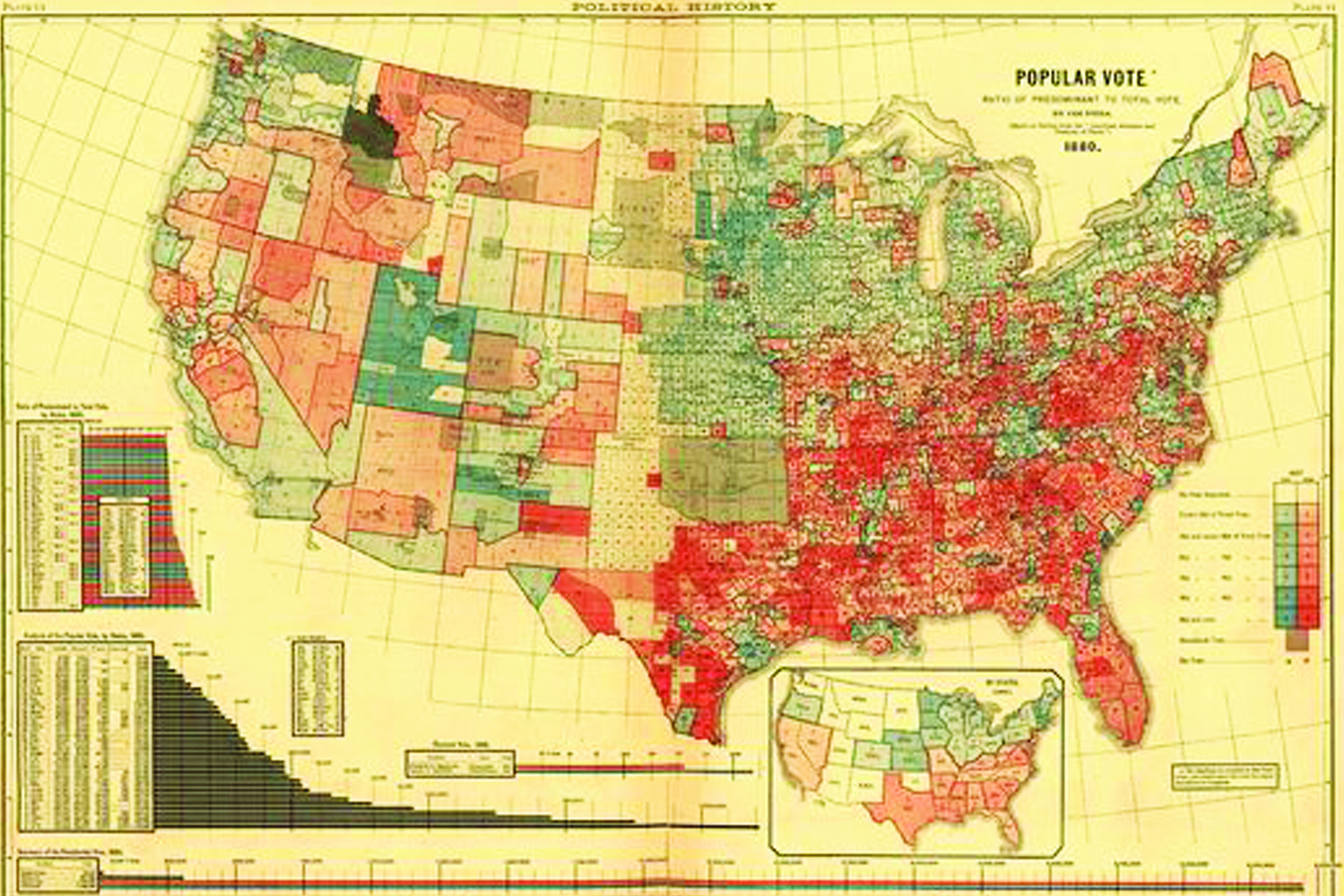
The 1840’s Voting Population
1856
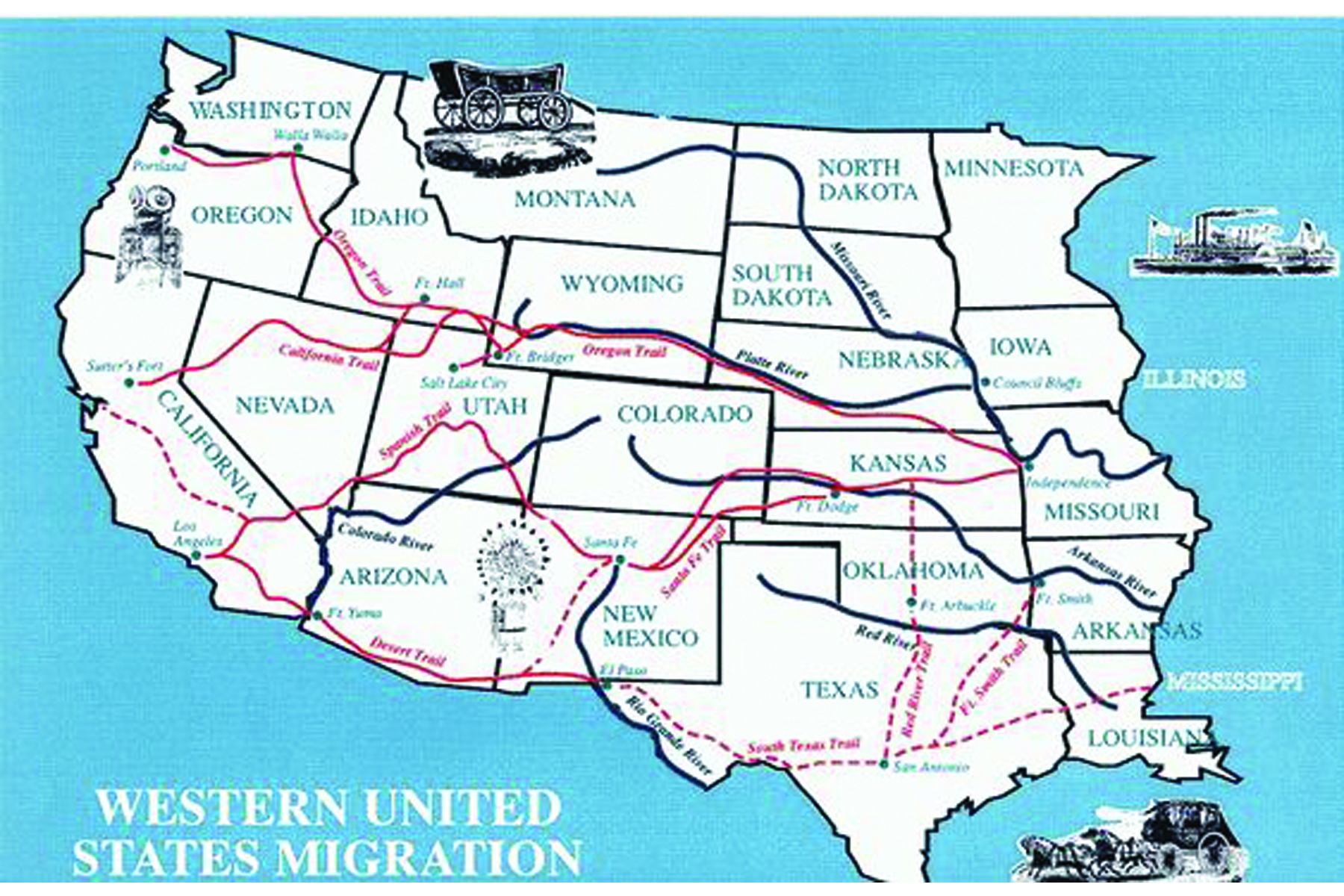
Western Migration patterns
In the next 40 years, 70% of St. Louis immigrants would come from Kentucky, Tennessee, or Virginia, to escape – or for some men – run to – the rumblings of War.
When the nation’s population doubled in 1825, the lure of better and cheaper lands along with completion of the Erie Canal had pioneers going west via water routes. With expanding railroad lines as far west as the Mississippi River, emigration expanded quickly to include Minnesota, Michigan, Indiana, Illinois, and Iowa.
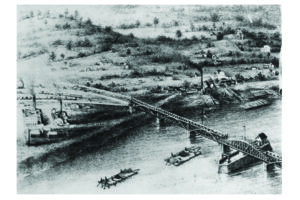
First real bridge over the Mississippi, Davenport, IA
The first jump westward was often a small one preceding a big one to come. Women and entire extended families followed their men who were often gone for months at a time.
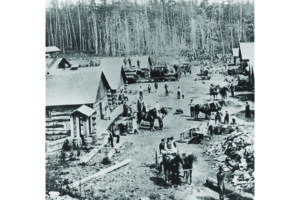
1856 Minnesota Logging Camp
Needing to support their families, entrepreneurial women opened restaurants and laundries to serve the working men at lumber camps and mines,
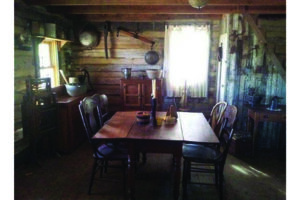
Inside a logger’s cook’s cabin 1850’s
“swishing her hoops and long skirts around her bare little cabin at alarming speed, cleaning fish and wild game to feed the men,” according to one lumberman’s diary.
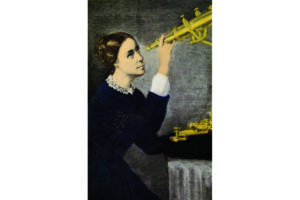
Looking at stars
It was a time of change for women when new laws allowed them to keep their own property, and in the agricultural west, women were considered equal partners with their husbands.
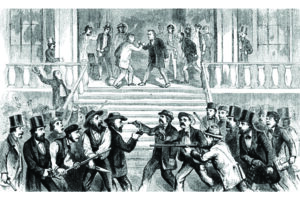
Bleeding Kansas
Women’s temperance and suffrage movements were growing, but these were quickly overshadowed by conflict between pro and anti-slavery factions in a country headed for civil war.
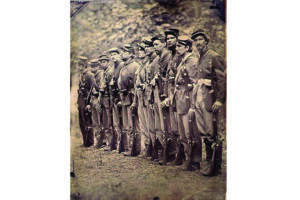
Missouri Regiment gathers to head east at the onset of the Civil War
This was the early VICTORIAN ERA, when fashion was dictated by Queen Victoria of England.
Woman reading
It was taboo to remain single, as most Americans assumed there was a natural order where the ideal woman was obedient and subservient to ALL men around her, not just her husband.
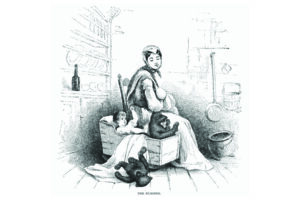
Bears as pets in the house
… except at night when awakened by bears getting into the food supplies… which would require Sary to ask the loggers to buy staples when they floated the logs downstream.
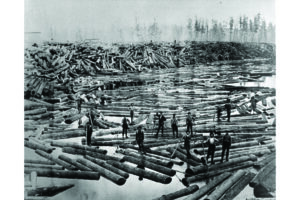
Floating Logs
They would bring back flour and sugar along with tales of hundreds of wagons crossing the Platte River in Nebraska…
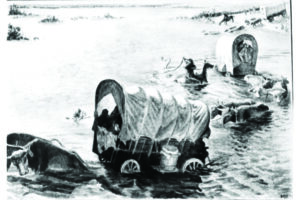
Wagons crossing the Platte
…and when the man of the house said so, the family would load one of those wagons, and head west to places like Deadwood Gulch, South Dakota, to start yet again.
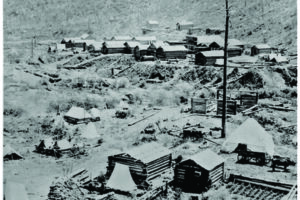
1876 Deadwood Gulch Logging Camp
1865
1865 was the peak of travel on trails west as pioneers headed for what would become the Dakotas, Wyoming, Montana, Oregon, California, and Utah.
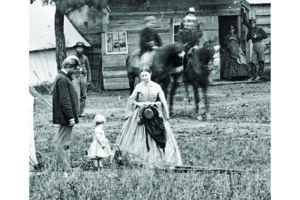
Shawls and Soldiers – after the War
These “movers” were largely made of people who had emigrated from Europe and the British Isles, or from the east side of America, because they believed land ownership was the single most important distinction between poverty and success.
Wagons on the Trail – Re-enactment
Some left homes devastated by the Civil War and some sought fortunes in gold mines of Montana. Fathers dragged grown daughters in hopes of finding good husbands, and a few thought it would be a “nice summer picnic.”
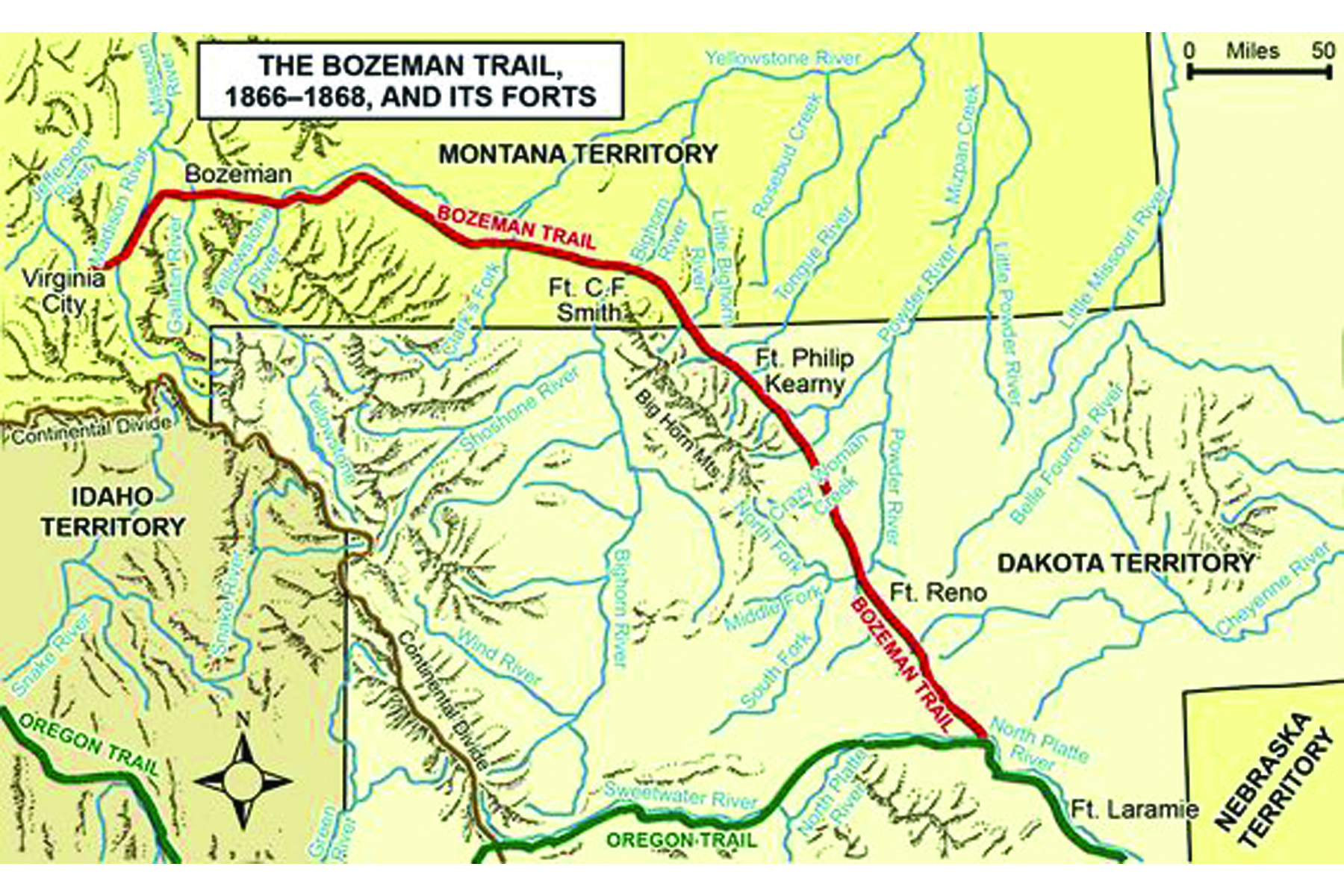
Bozeman Trail map
The new overland Bozeman Trail or “Road to Montana” was intended to be a direct route from the Oregon Trail to Virginia City.
Corral outside Devil’s Tower, Wyoming
3500 traveled it with 1 in 5 being a woman or child. Indians killed about 50, but drownings, accidents with firearms, and “mountain fever” claimed more. They traveled in “trains” of wagons accompanied by soldiers. Made half of freight and half emigrants, they formed defensive oval “corrals” on stopping.
Cooking on the Trail
Most women on the trails already had “itchy feet” and were part of that restless segment of society that had already migrated once. They knew how to cook for 12 over a campfire, and how to keep infants clean when water was scarce.
1865 High Fashion Plate
This was the Mid Victorian Fashion Era…
Boredom was a problem when they built new homes far away from society where women would be left alone for weeks during roundups or when the men went mining.
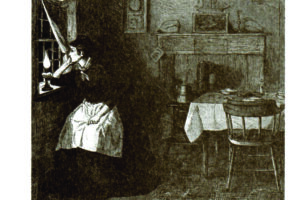
Boredom on the trail and once established at the end of the trail was one of the worst dangers for women Homesteaders and Pioneers
Coming and going on the Bozeman
Near the end of their journey, pioneers on the Bozeman would meet 100’s of dispirited miners heading in the opposite direction. With this huge “reverse migration” and the new freight lines running back and forth u Virginia city at last, it was hard to tell who was coming or going.
Montana, the Destination for Many
Virginia City, Mining & Homesteading, Destination for most
First women in the nation to vote legally, Wyoming 1869, another destination
1868-72
A woman begins as wife, mother, and daughter. When she picks up everything and travels from Scotland to America to find a better life, she is an immigrant.
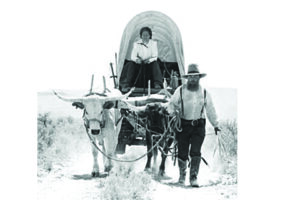
Covered Wagon
When she marries a man without ever seeing him, she becomes a “mail order bride”, and when she packs up again to travel on foot for 2 years, she is a “pioneer”.
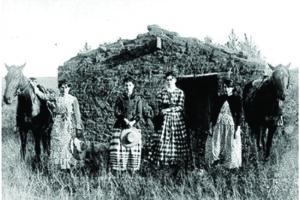
Dugout on the Prairie – REAL type of Little House on the Prairie
At the end of the trail she becomes a “settler”, and when she puts down roots and adds to generations through her children, they are Americans.
Trails West
The Homestead Act called like a siren to landless men to hurry West to prove up land. Promises of paradise with towering trees, lush valleys, and rich soils saw over 500,000 people travel the 2000 miles called the Oregon Trail.
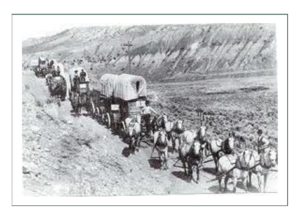
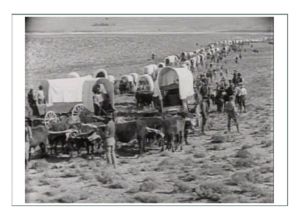
On the Oregon Trail in Wyoming
Congress offered 160 acres of land to men, with another 160 for wives. Travel – and weddings – suddenly boomed as men grabbed women from the east and hurried to the west.
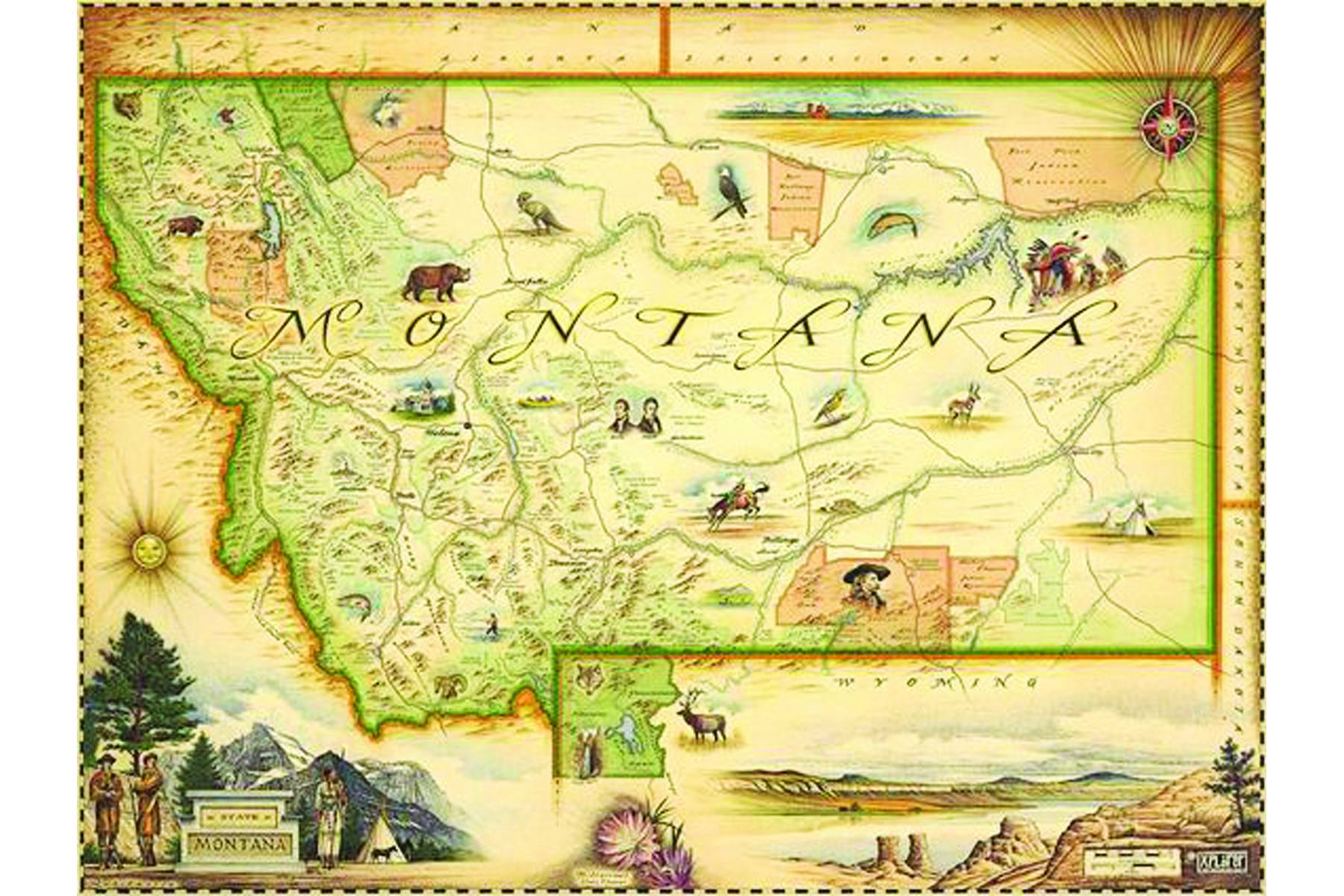
Montana 1860’s
Montana, advertised as the “Treasure State” became the most heavily homesteaded place. Early homesteaders settled in Madison, Gallatin, and Bitterroot Valleys. There, by selectively irrigating and protecting crops against frost, they produced fine harvests to feed the mining camps.
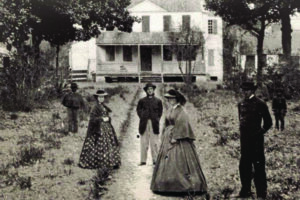
Leaving home
They knew it would be difficult, but these homesteaders understood with land ownership came independence, stability, and opportunity that the vast majority of Americans at the time craved.
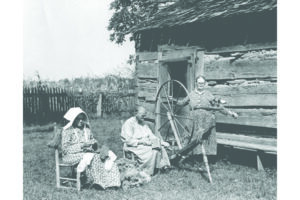
Working by cabin
The life of a homesteading woman was almost all work. They ran the house and were responsible for children, made their own fabrics, soap, and candles, worked in the fields and gardens, and processed all the food for people and animals.
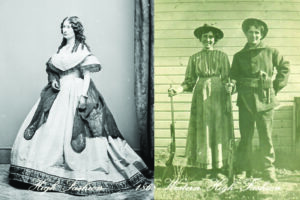
East and West (Keene and gun women)
They aimed for high fashion, but interpretation varied greatly by women’s access to goods. Clothing for a scout like Calamity Jane was a lot different than for highly paid actress Dora Hand.
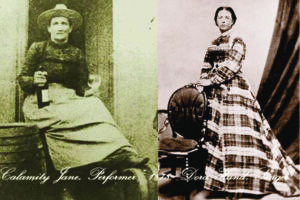
Calamity Jane and Dora Hand
Fashion was still initiated by Victoria of England whose favorite polka dots and plaids used for sportswear out east, was high fashion in the west.
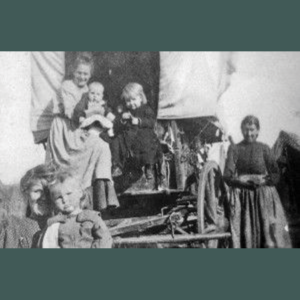
Women still dressed like Victoria
When the railroads were built in SW Wyoming, Homesteaders could bring in the equipment, like tractors, they needed to settle the area. Farmers thrived in supplying food to the gold miners at first, and later moved to the more fertile valleys to feed urban populations to the east by shipping food products on the same railroads that brought their supplies.
Both are cut generously to allow comfortable movement for working in the field or dancing to celebrate the completion of the transcontinental railroad…
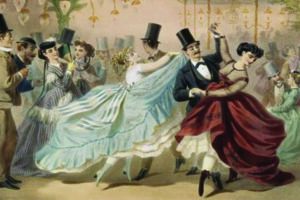
Dancing in the East – West on the train in only a few weeks
… which brought steam tractors and steel plows to provide for more efficient farming to meet the needs of a growing market feeding huge now industrialized populations.
Farming the Yellowstone River Valley in Montana, Glendive tractor
Having the railroad nearby meant Montana homesteaders could move to irrigated bottomlands, although by 1900, the eastern 2/3rds of Montana v Big Sky Montana would still be wide open public land, although that would soon change.
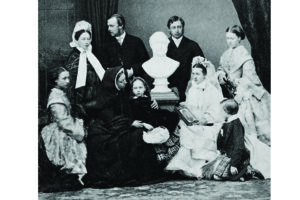
Queen Victoria and children mourn her husband’s passing
Because Prince Albert died in 1861, Victorian fashion changed from that date forward regardless of whether you were on a wagon train, or in a ballroom in Philadelphia.
1874
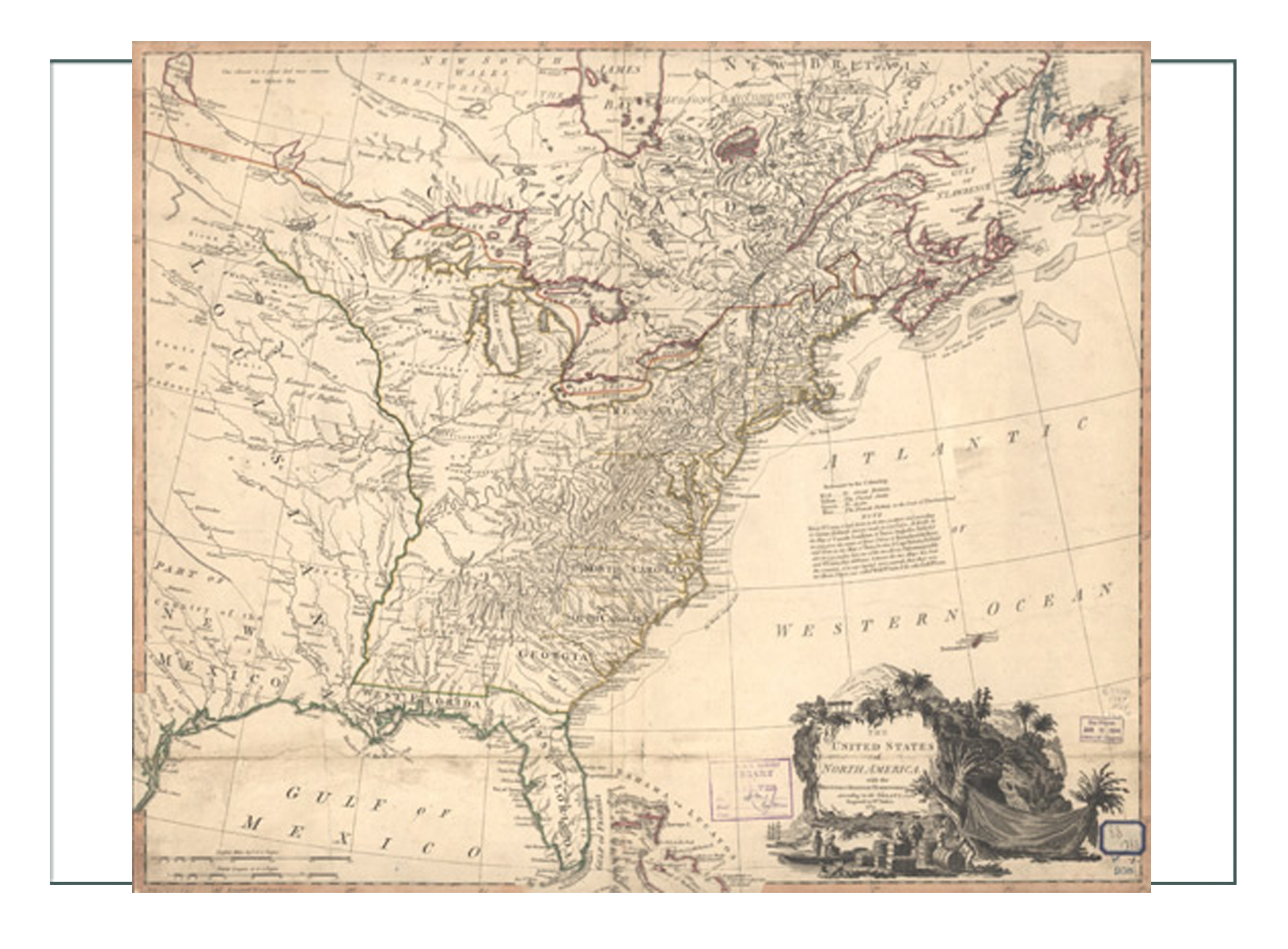
America in 1874
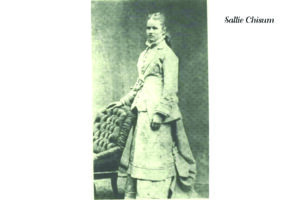
Wealthy rancher, Sallie Chisholm managed her father’s holdings in the west, and still remained fashionable on or off a horse (she rode sidesaddle)
It was a time of huge economic change in America due to mass production and the growth of industry and industrial magnates. A generation had come to the resource rich southwest and established empires with flourishing farms and ranches.
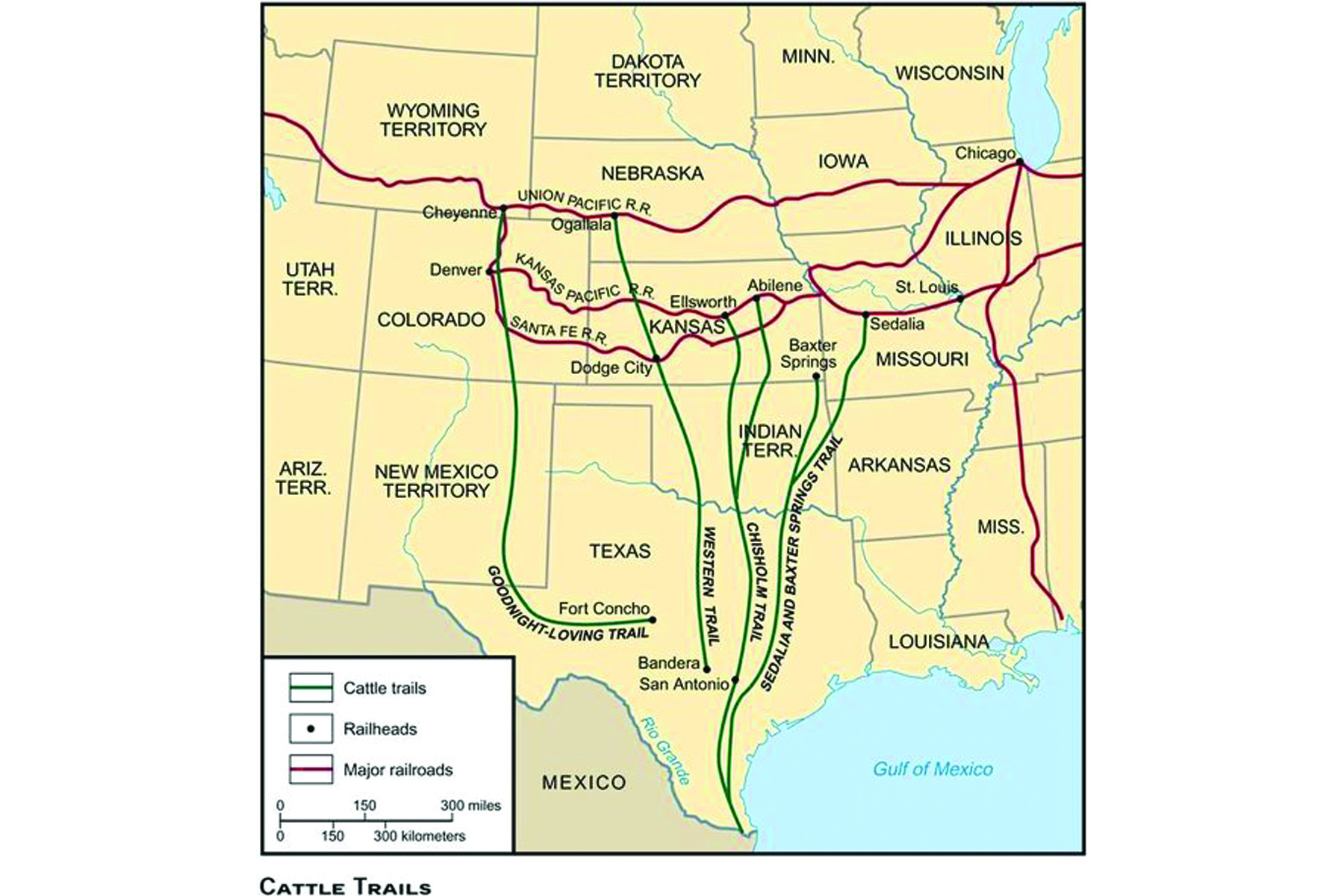
Cattle trails
Their children were taking over; embracing technologies and techniques to build upon the success of their fathers. New migration patterns arose as cattle trails became well traveled roads north to connect with the east-west railroads.
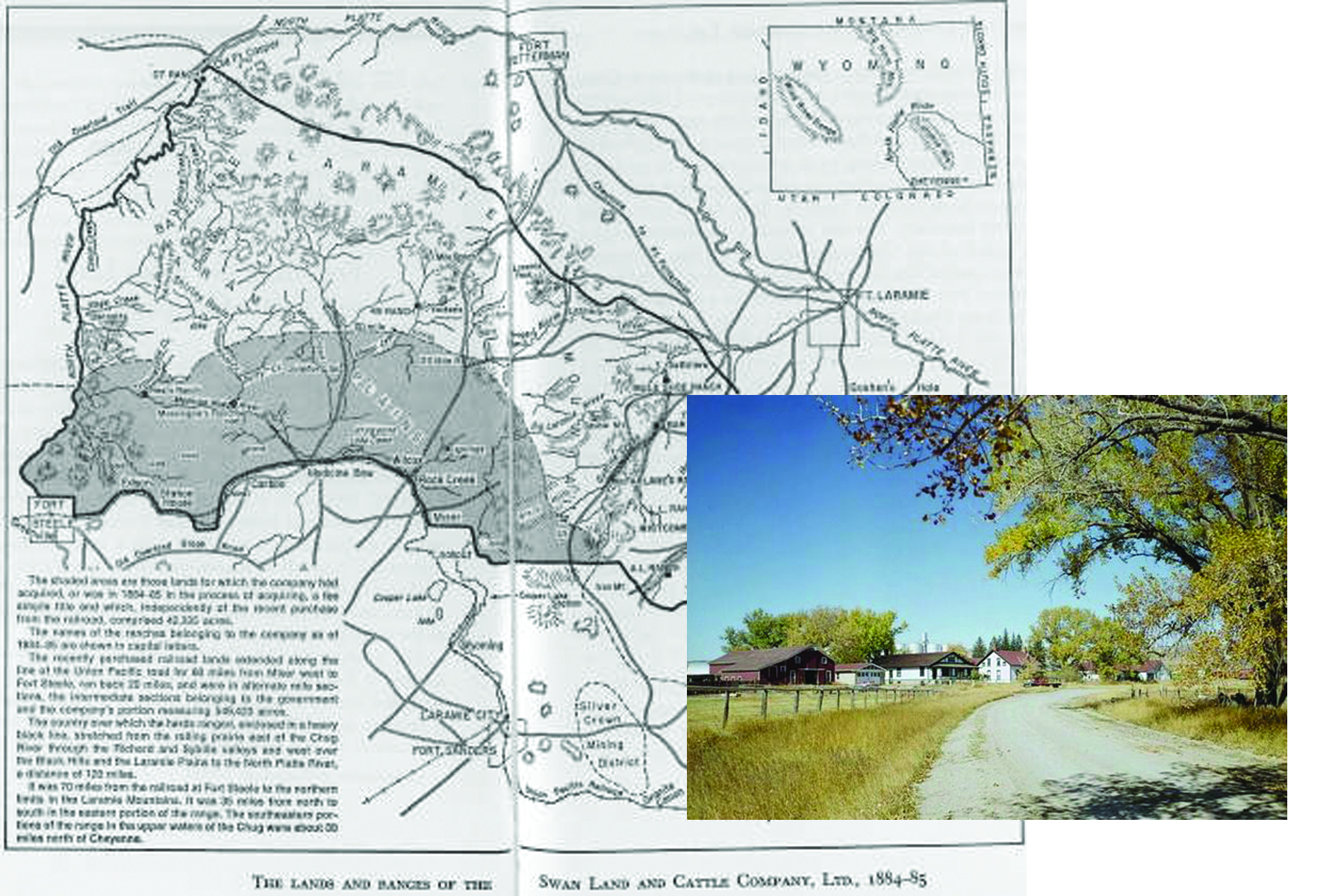
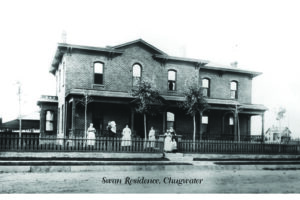
Swan Land and Cattle Company Chugwater, Wyoming
Foreign investors realized the potential in the American cattle “companies” like the “Swan” in Wyoming which was said to have land as big as Connecticut, and so many head you could not count them.
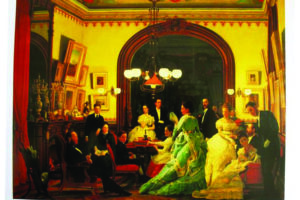
Vanderbilts at home
Successful ranchers lived the “More is More” philosophy in what was “The Gilded Age” where in the West it was not unusual to find a woman running a ranch or holding office.
Like the Vanderbilts of the east, the daughters of wealthy ranchers were typical of the “Gilded” side seen in the East; those grown wealthy on expansion of industrialization and new techniques in a strong business climate.
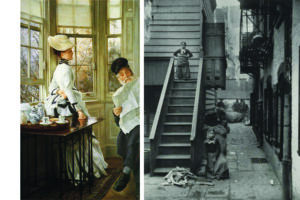
Rich and poor
There was also a rising middle class made of the new professions of engineers and middle managers.
The “Ungilded side” was largely newly arrived unskilled Europeans wanting to take wages back home. They lived isolated together in poverty without attempting to assimilate into American society.
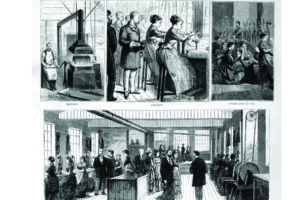
Pen factory
Investors from France and England in particular put money in oil, steel, sugar, farming, and ranching, using the unskilled immigrants to run operations because new mechanization processes did not require skilled labor.
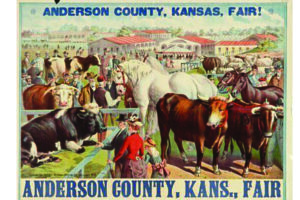
County Fair
Western women played an important role as survival demanded working alongside men in managing large spreads. They had help from innovations like washing machines and the “Scientific Housekeeping” concept which taught Home Economics and cookery methods like canning. The County Fair started at this time.
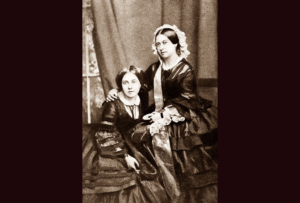
Queen Victoria of England with firstborn child, Victoria “Vicky” in the 1860s
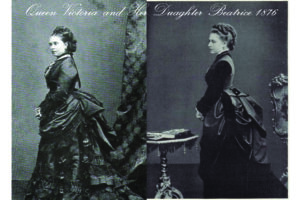
Victoria’s Daughters leading fashion by 1876
This was still the Victorian era, but the Queen’s daughters had taken the lead. The ideal silhouette was long in front with fullness in the back created by a variety of mechanical contraptions called bustles.
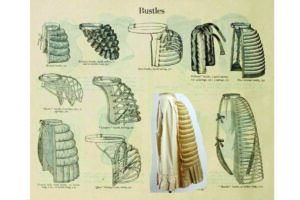
There were many types of bustles
Utterly feminine in appearance, educated in etiquette and the fine arts, the rancher was a deceptively very powerful, wealthy, and influential woman of the New West…
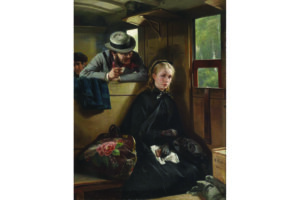
Bugging her on the Train
…who was not to be messed with when she was trying to calculate her capital gains riding the train to Chugwater to meet the Swan brothers.
1879
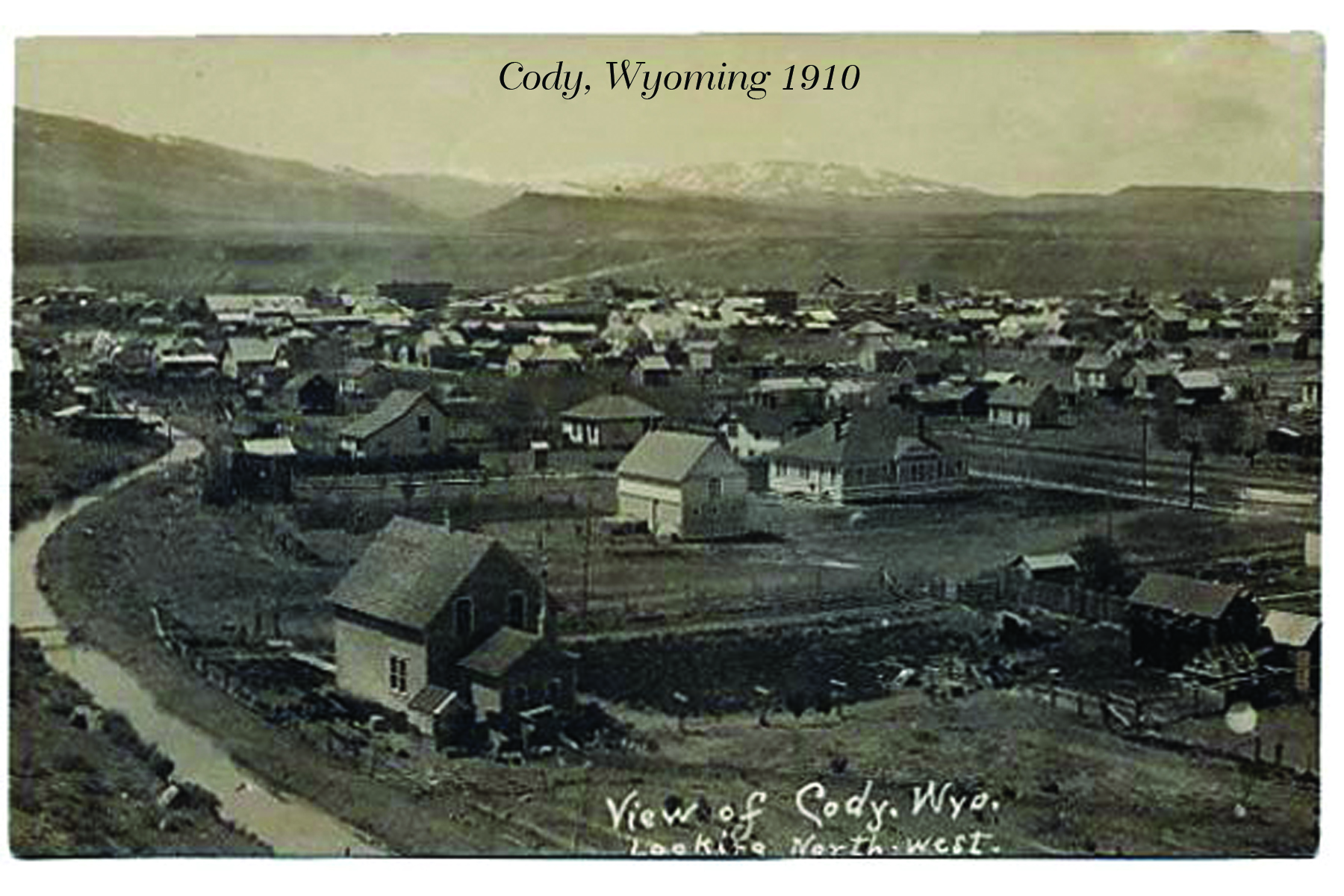
The Houxs moved to Cody later in their adult lives
Life in the New West had advantages for women. Previously restricted by social norms, they were now free to make their own decisions. They were the driving force behind powerful men. Pioneering now meant breaking into the world of politics and business.
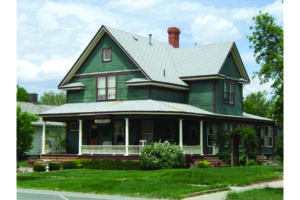
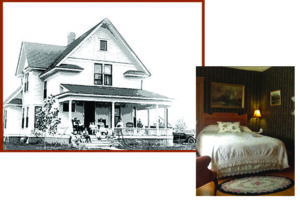
Houx house today as a Bed & Breakfast
Moving on meant “moving up”; out of a cabin into a beautiful house as in the case of “Augusta” who married young and followed her man as they left his family farm in Missouri and ended up in Cody, Wyoming where Frank and friends planned development of the town.
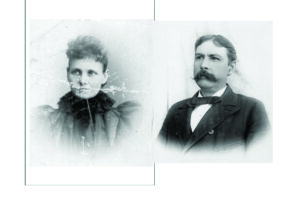
Augusta and Frank
Augusta’s goal in life would have been to be a good wife who was the social representative of her husband, and who raised her children to be model citizens. How she dressed and behaved in public would have been very important.
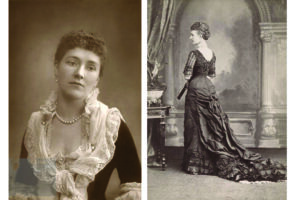
Princess of Windsor and Alexandria, Princess of Russia
It was the Victorian “Cult of Beauty” with the Queen and her friends like the Princesses of Windsor and Russia, dictating to the world what to wear. The goal was to appear healthy and round but not fat.
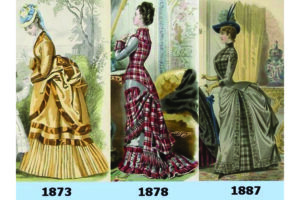
3 bustle eras
There were 3 bustle eras, with 1879 called “natural form” because the line of the clothes was more important than structures.
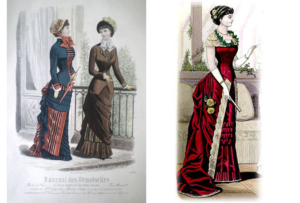
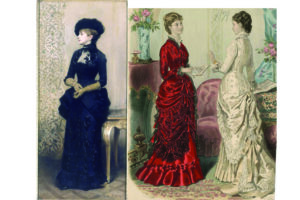
Fashion plates from magazines 1878-80, a brief time between 2 bustle eras
Information and undergarments came from catalogs and women’s magazines, but the difficult to fit bodice and skirts had to be made in the West by a dressmaker who was often a prostitute who sewed by day and plied her trade at night.
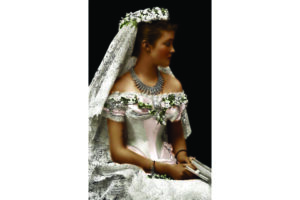
Luise of Prussia’s bodice
High fashion had severely tight fit with restrictive corsetry, tight sleeves, and a high neckline which gave a very modest and even prudish look, yet with the torso so molded to the body, a woman’s shape could hardly go unnoticed, indirectly creating the most revealing and sensuous look yet in history.
Pioneers to the world of Ranching like Augusta Houx were following dreams that they might contribute to something outside the home. A great number of western women were educated, and pursued professions reserved only for men back east.
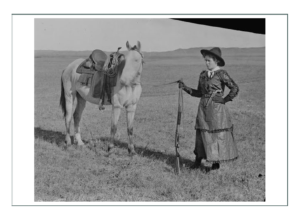
1889 Rancher
They became business partners who built the operational, educational, and governmental structures of new towns like Cody and Cheyenne.
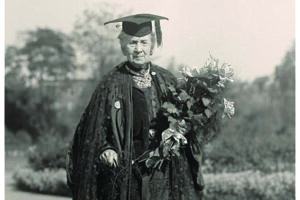
Belva Lockwood portrait 1884
The new pioneer woman was not only physically mobile as she moved from place to place with her man, but was UPWARDLY mobile like Belva Lockwood who would run for US President in 1884 who said “I cannot vote, but you can vote for ME”.
1883
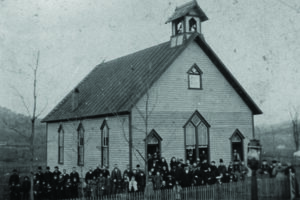
Church in Paw Paw, Michigan
There came to be more reasons than land ownership to move West. Droughts and the downfall of the agricultural south in the Reformation ’70’s had people moving to cities.
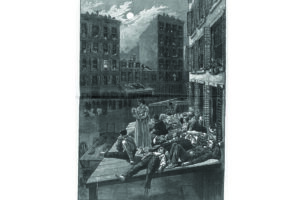
City tenement
Finding those crowded, and that their skills did not suit, these pioneers looked further west just to survive. Politics and social restrictions against certain racial groups had a confused population coming and going; not sure where they wanted to be.
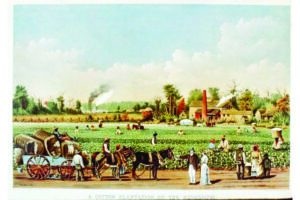
Cotton 1884 in the South
Many wanted to start anew in the west with no idea what they would do. Some knew farming or ranching from managing Alabama and Carolina estates for employers, and thought they could do it on their own in Montana and Wyoming.
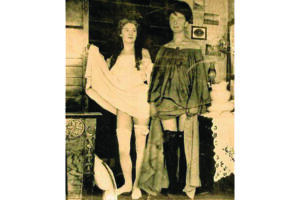
1880’s Prostitutes
To places like Sundance, Wyoming came a new kind of “pioneer” – immigrants escaping discovery, cast outs from regular society, and the lawless – robbers, rustlers, gamblers, and madames. On their tails came the “good guys” – the lawmen and the preachers.
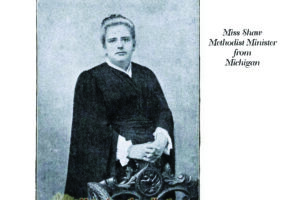
Beautiful Preacher Miss Shaw
1881 to 87 is called the “Cult of “Beauty”. It was the peak of Queen Victoria’s reign over the world of fashion. America was building skyscrapers and fountain pens as they developed worker’s rights and educational policies.
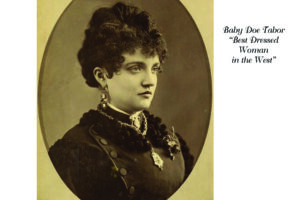
Baby Doe Tabor “best dressed in the west”
Western women were resourceful and creative, because those in remote regions didn’t have easy access to goods like their eastern sisters who could buy most anything now from a store.
Strong character and a “function first” attitude prevailed in work and fashion. But – just as women across the country were rising in power by their merits…
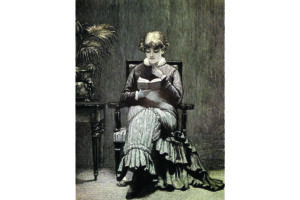
Reading woman
…there rose the concept of the “Ideal Woman”. She was a frail and utterly “feminine” heroine with tiny hands and feet who pleased her man at all times because she was calm and humble.
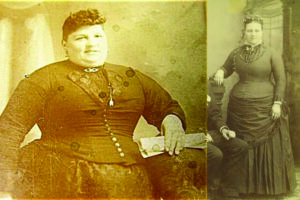
Large women
HOWEVER, the strong, capable, outspoken, and voluptuous woman pushed the Ideal Woman off her pedestal as the decade progressed.
With a giant bustle in back, and lots and lots of fabric and trim, the empowered woman now worked outside the home and was literally “big and powerful”.
Women of the American West had to be resourceful to cope with the harsh conditions, lawlessness, & homes with few amenities. Most lived quiet lives focused on family and church…
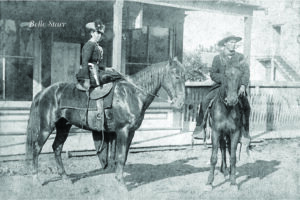
Belle Starr, outlaw
…but many made lives for themselves apart from “dignified society” doing whatever they could to survive. Those western pioneers took to the gun and horseback as readily as any man, t stole a mule
while others just TOOK THE GUN and THE HORSE.
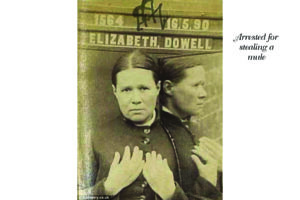
Elizabeth Dowell, convicted for stealing a mule
1885
Picture a world where the train blows its whistle so you can set your watch by it, and your neighbors bring their daughters to sew in the parlor on a hot summer afternoon while the boys go swimming.
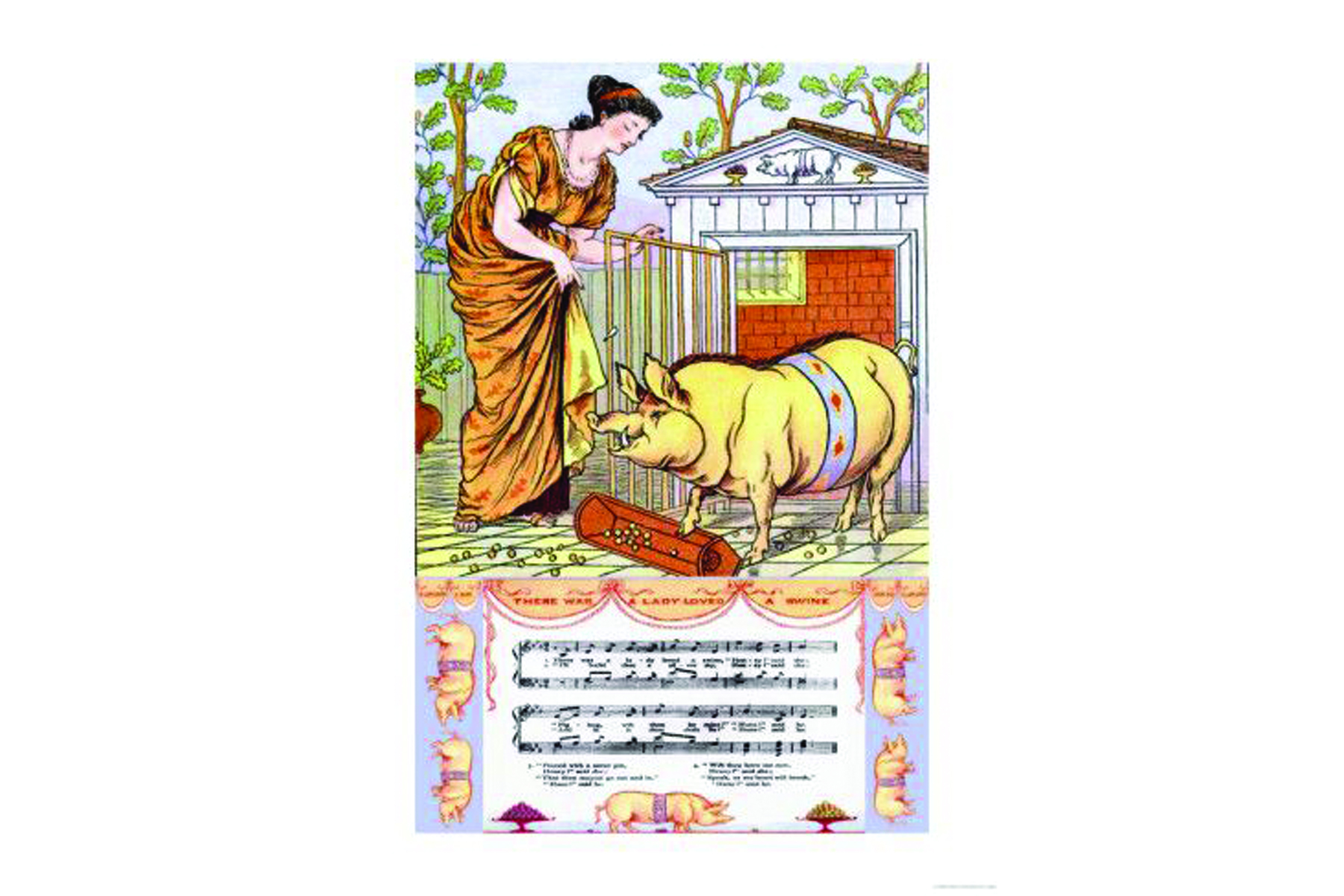
Sheet Music “woman who loved a pig”
Trains brought scandalous music, salesmen, hobos, and tales of cowboys. They took away daughters to shoe factory jobs in the city.
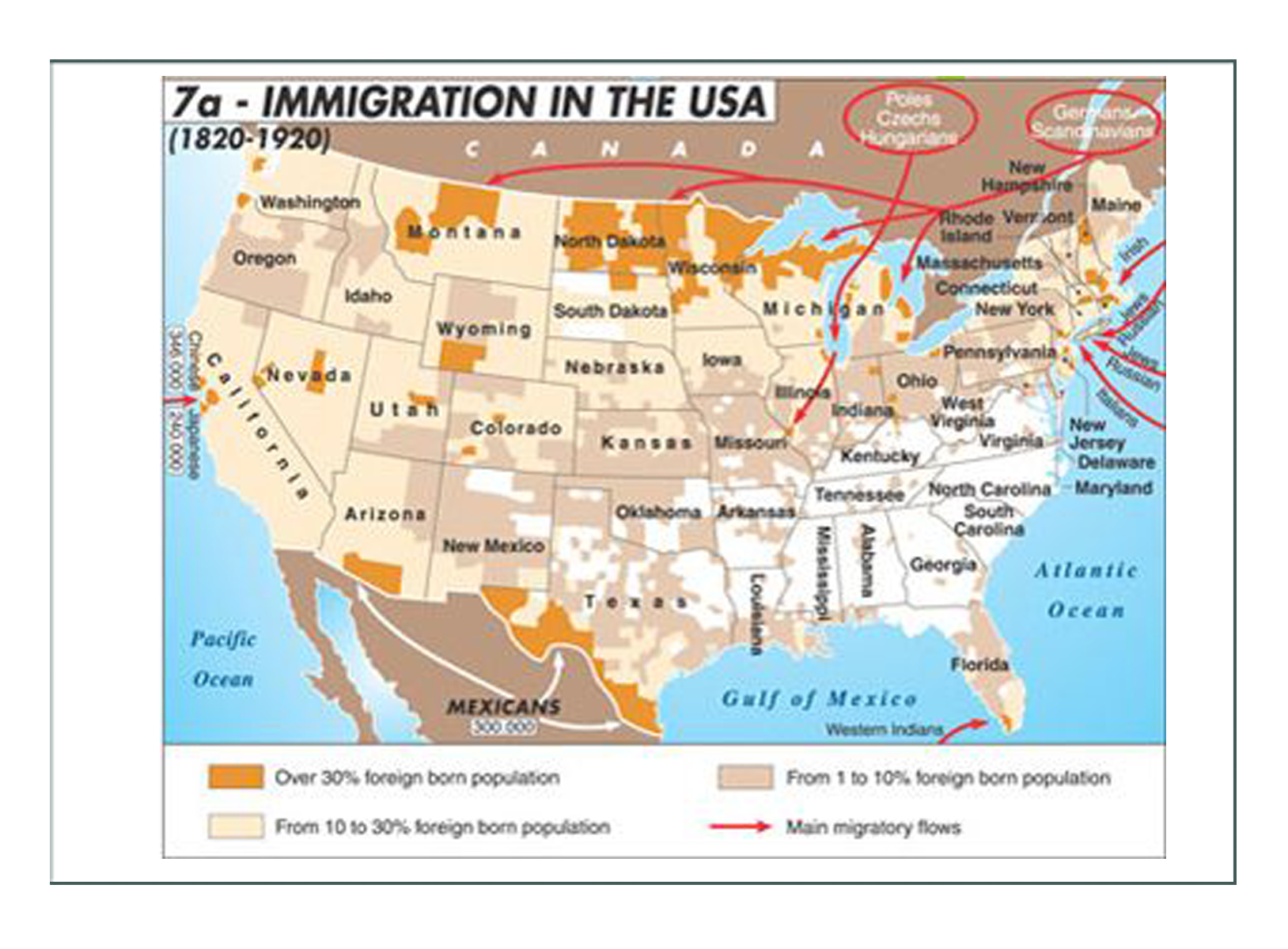
Immigration Map to America
Steam powered ships replaced sailing ships which resulted in lower fares and faster trips for immigrants. Farming developments in Europe and Russia yielded a surplus of labor, so young people without jobs there flooded into the US.
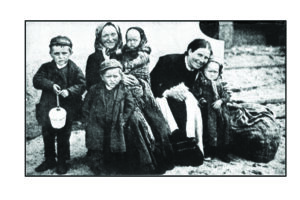
Irish immigrants 1885
Italians, Greeks, Hungarians, Poles, and others speaking Slavic languages made up the bulk of this migration with 4 million Jews among them.
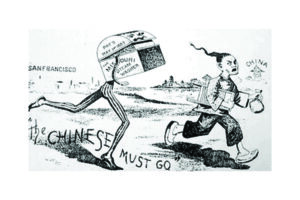
Chinese racism
Some immigrants did not assimilate easily into American society. Chinese men, hired as temporary labor to build the railroads in the ’70’s, ended up staying, and were discriminated against.
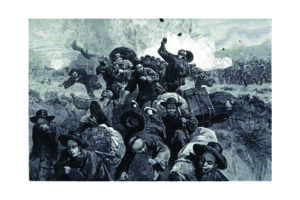
Rock Springs Massacre
Violence like in Rock Springs, Wyoming between British and Swedish immigrants vs. Chinese, and the trafficking of Chinese women for prostitution, were becoming such a problem that new laws were passed to control immigration.
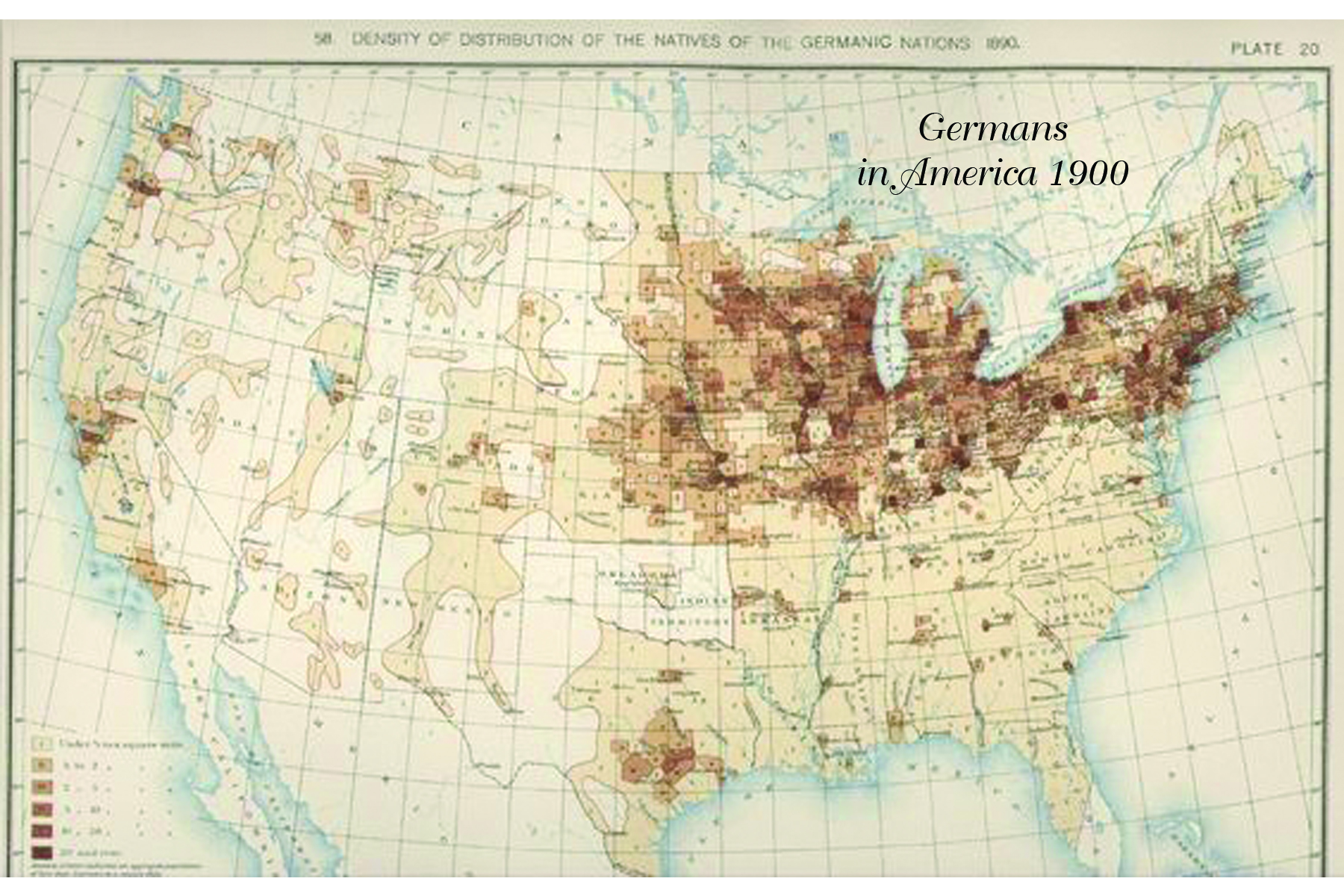
Germans in America map
In the mid 1880’s another huge wave of immigrants from Ireland, Sweden, and Germany came to join those who were already prospering. They settled predominantly in Wisconsin, Minnesota, Illinois, and Iowa near train and transportation lines, and developed specialized agricultural products like…
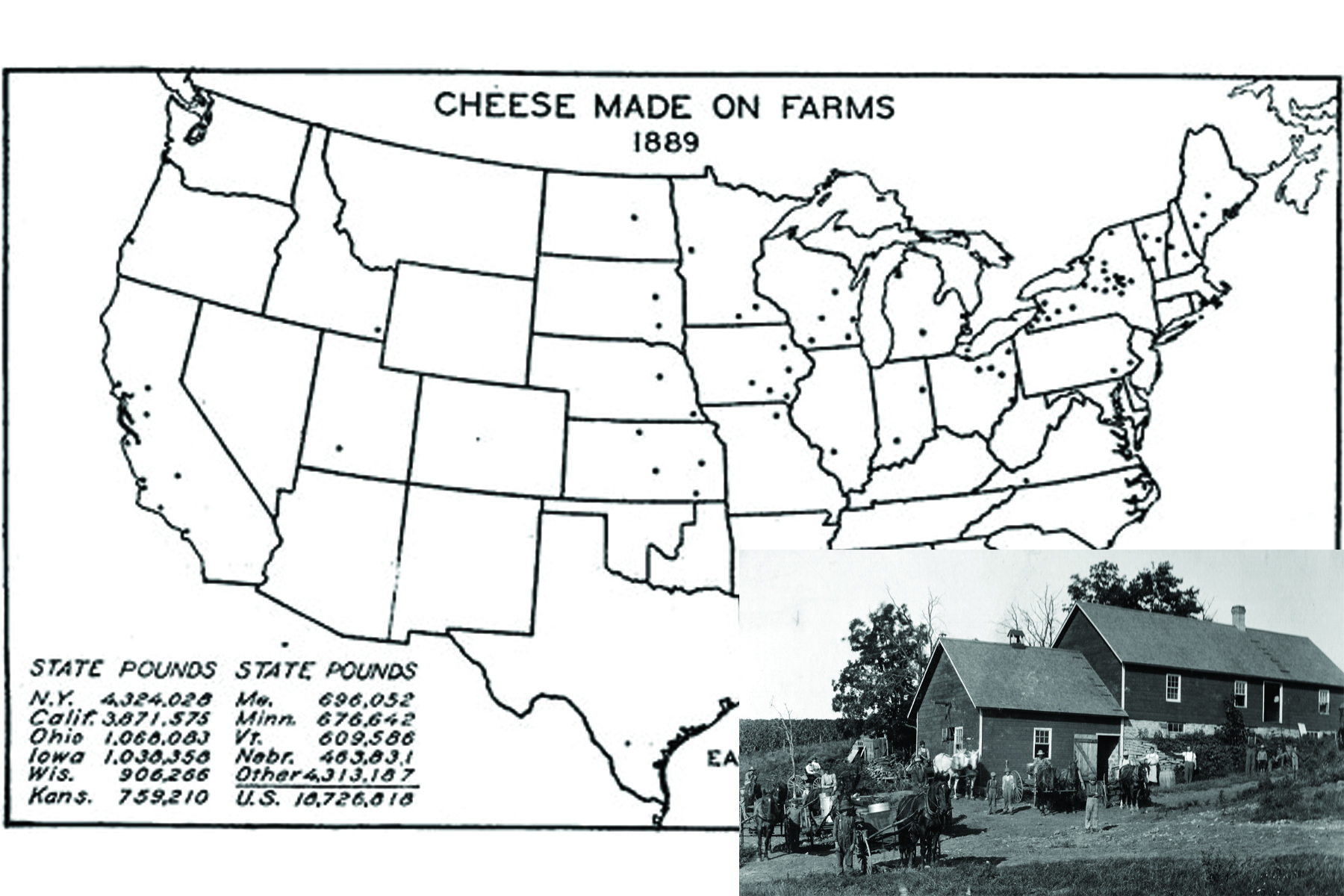
1889 Cheese production and the Midwest
…cheese to serve growing populations in nearby cities. Germans were especially successful because they were able to produce high yields from prairie land that others had abandoned.
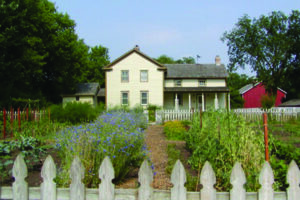
Volkening farm house, Schaumberg, Illinois
They worked the deep soils into a 3-crop rotation that allowed large yields on small plots. “Success” meant surplus and profit, which also yielded leisure – for men at least. Women still worked all the time.
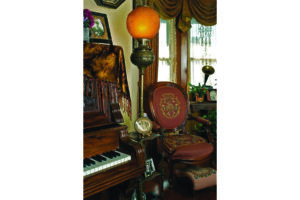
Parlor
New inventions like “carpet sweepers” and glass butter churns made the farm wife’s life easier, but they resisted indoor plumbing and forced heating that was now common in city homes.
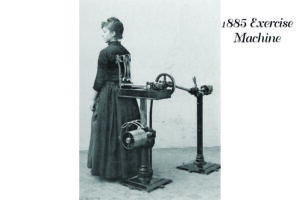
Exercise machine 1885
It was a time when men and women were equal in that NO one could figure out how to work the new gadgets! We call it “late Victorian,” although many women in rural America really didn’t care about England.
Royals vs apple seller
They wanted to be fashionable though, so they looked to their Eastern sisters who told them to wear feathers, ribbons, and corsets. Farm women wore a modified version of high fashion of the day,
and the “butter n egg” money was happily spent on hats.
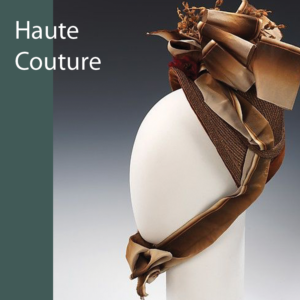
1885 High Fashion Bonnet
Successful Midwestern farmers also invested in lands managed by others further west, but their biggest export was their daughters – who took the train to Chicago looking for work, and were hired by Wyoming ranchers who came to the city to sell their cattle and “buy” German domestics to take home to their mothers for Mother’s Day!
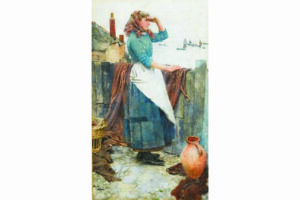
German Farmer’s Daughters left home to work in cities or ranches far away from their parents in the Midwest
1887
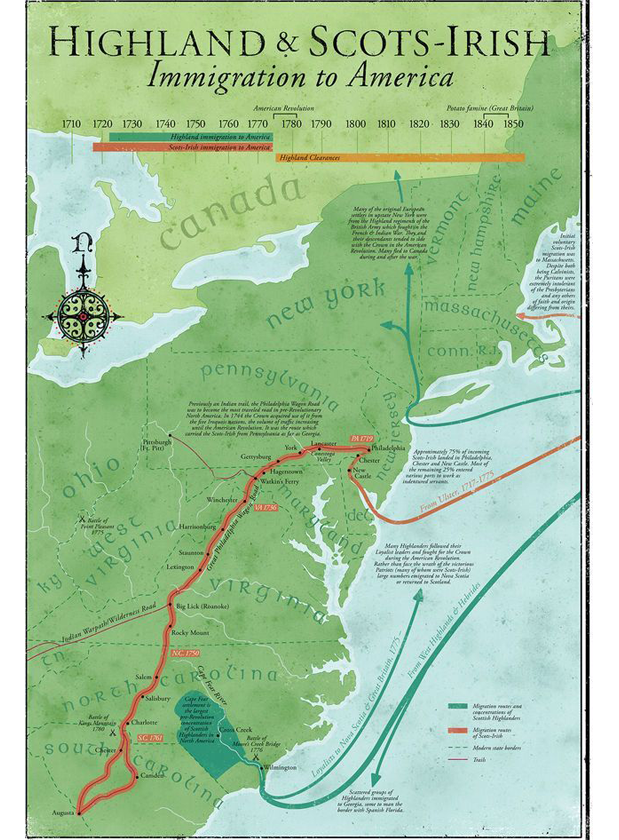
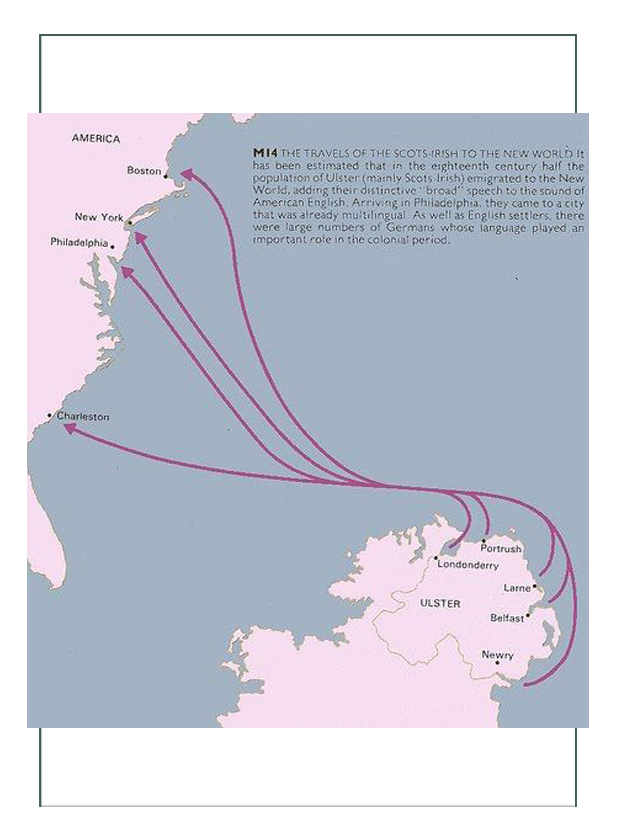
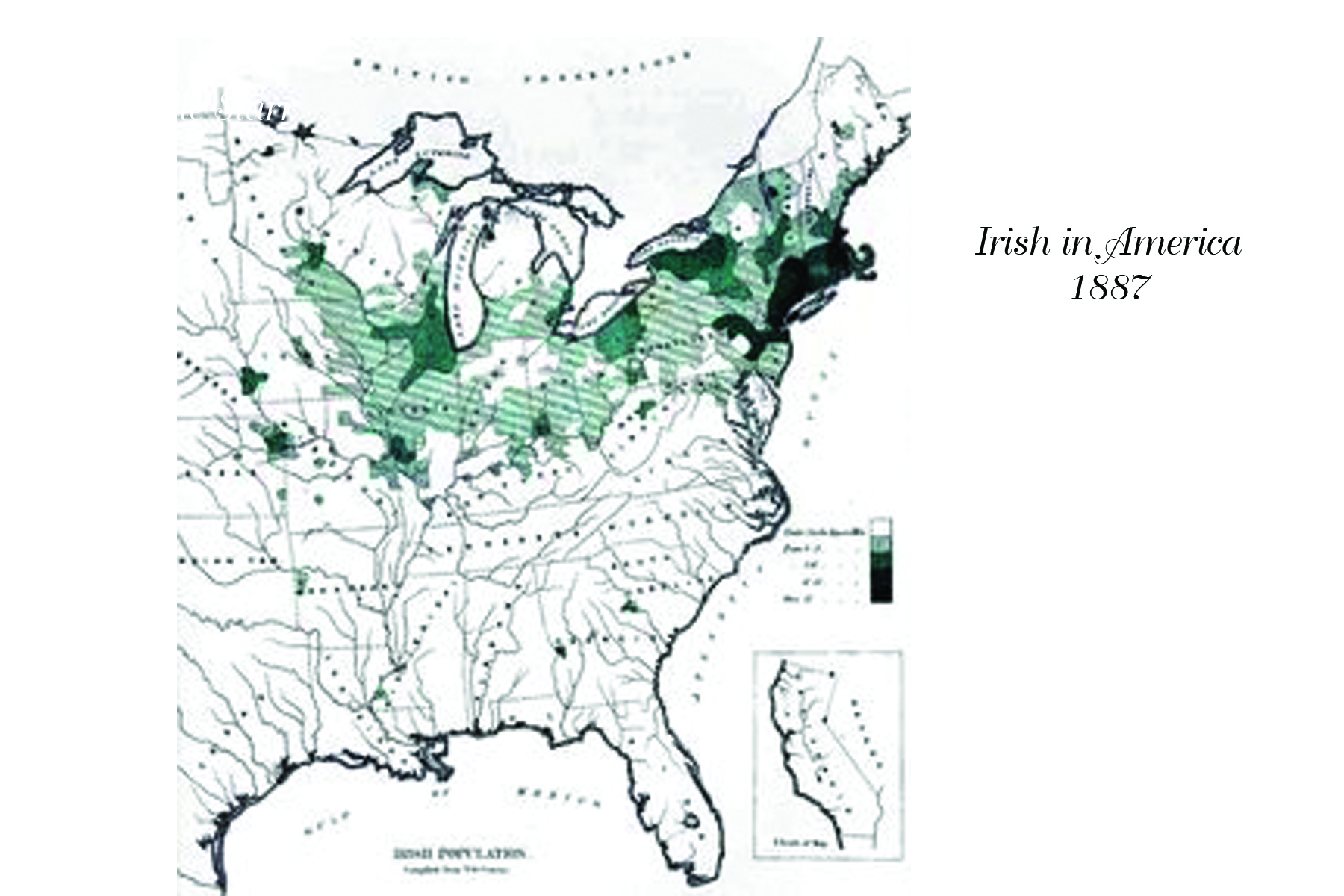
Much of Wyoming was still a wild and lawless place, but Indian uprisings had abated, and free acreage offered by Congress through the Homestead Act enticed young Americans.
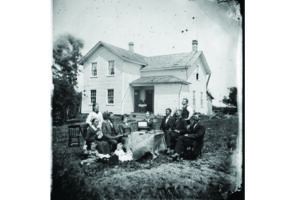
Irish Wisconsin Farm
Irish immigrants who had escaped the potato famine in the ’40’s were well established in the Midwestern US by ’87 with prosperous farms that would be handed down father to son.
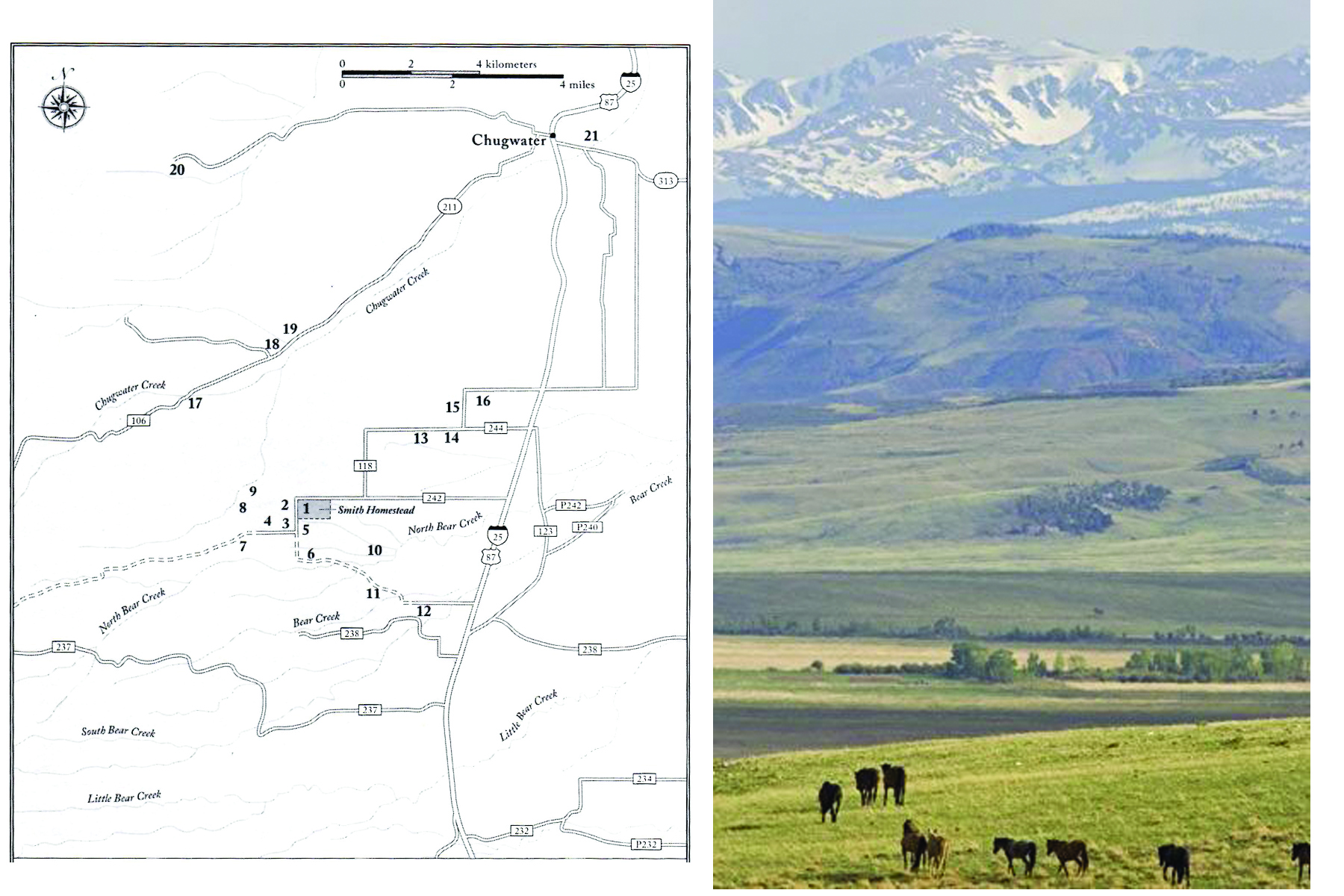
Chugwater
The problem was there was not enough farm for all the sons to inherit. The West looked attractive to these young educated adults who wanted to do what their grandfathers had done in creating a good life for themselves by their own efforts.
A new breed of pioneer emerged – those who went west to seek out land – not to live on it – but to make money off of it.
Snowflakes and Helen Keller
The time was called the “Years of Abundance” and America was increasing in size and world status: Pearl Harbor became a naval base, Anne Sullivan first taught Helen Keller, and the largest snowflake on record fell on Fort Koegh, Montana.
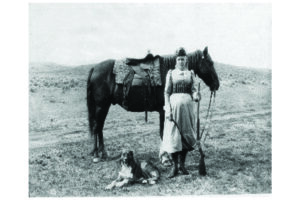
woman going to town with horse
The “Cult of Domesticity” assigned women a central, passive role where she was wife and mother; keeper of the household, and guardian of moral purity of all who came under the roof.
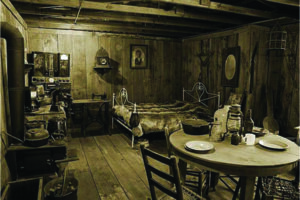
Inside a cabin
Home was to be a haven of comfort sheltered from the harsh realities of the working world, and yet at the same time, women were expected to be educated and reaching for more.
These educated women made up a large part of the Homesteaders, yet there was little use for an advanced degree on a homestead other than what was essentially long term camping.
High fashion vs Western Fashion of 1887
Homesteaders knew about Victoria and high fashion, but with so little social opportunity, western fashion had to focus almost entirely on function, so excesses of bustle, trims, and drapes were reduced or eliminated.
Ease in movement and the ability to dress oneself and store all clothes in a 10 by 10 shack meant clothes were generally looser, worn in layers, and used for multiple purposes.
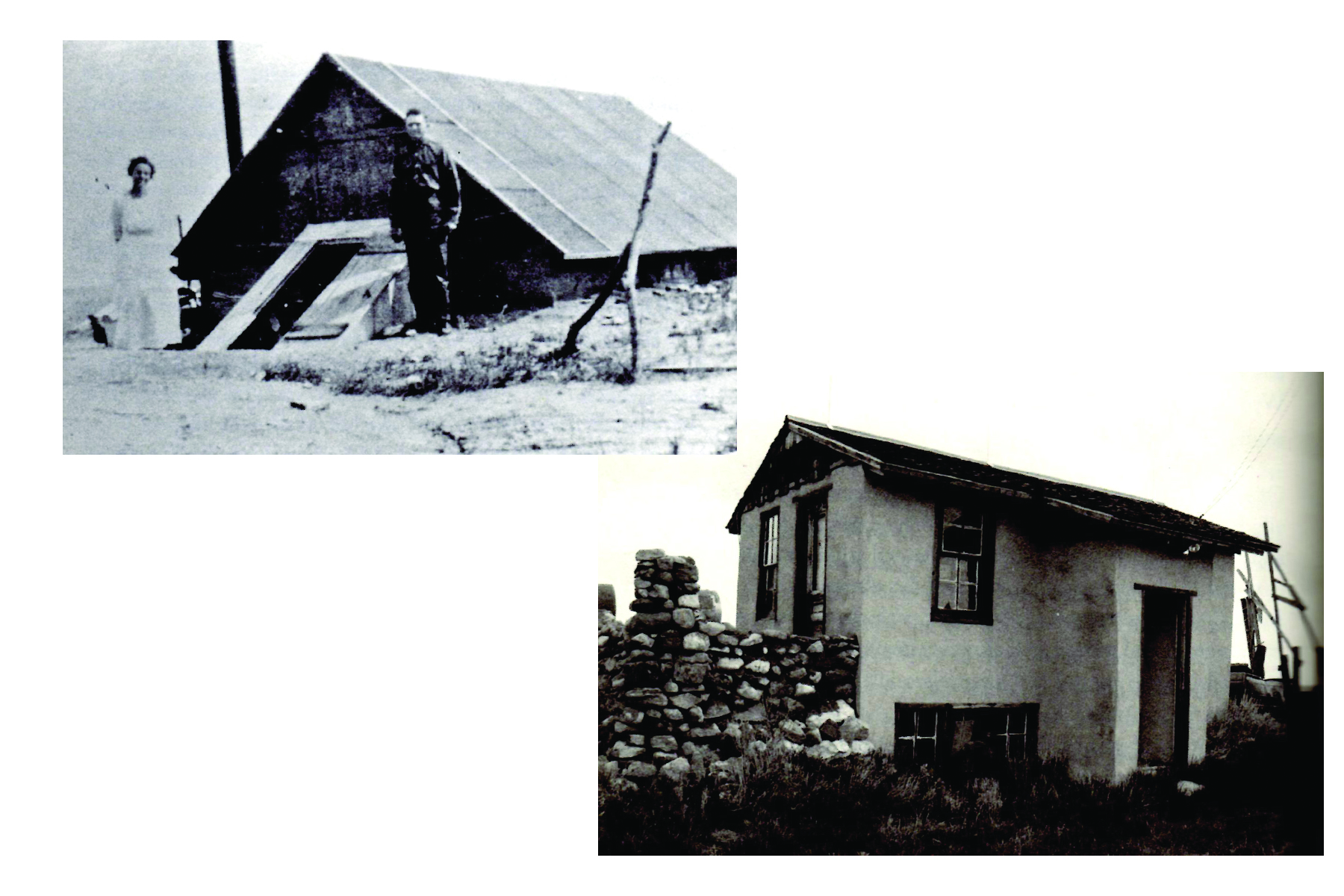
The real Chugwater Homestead of Laura Smith, Wyoming
The reality for women who homesteaded was running a household that included food processing, carrying water, knitting, reading 1 book, and the repetitive tedium of constant washing, repair, and r throwing a snowball vigilance in a world where the wind, rain, and record snowfalls made it all more difficult.
That didn’t mean it was all work though.
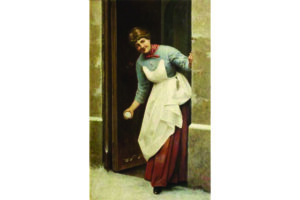
Snowballs after school
1895
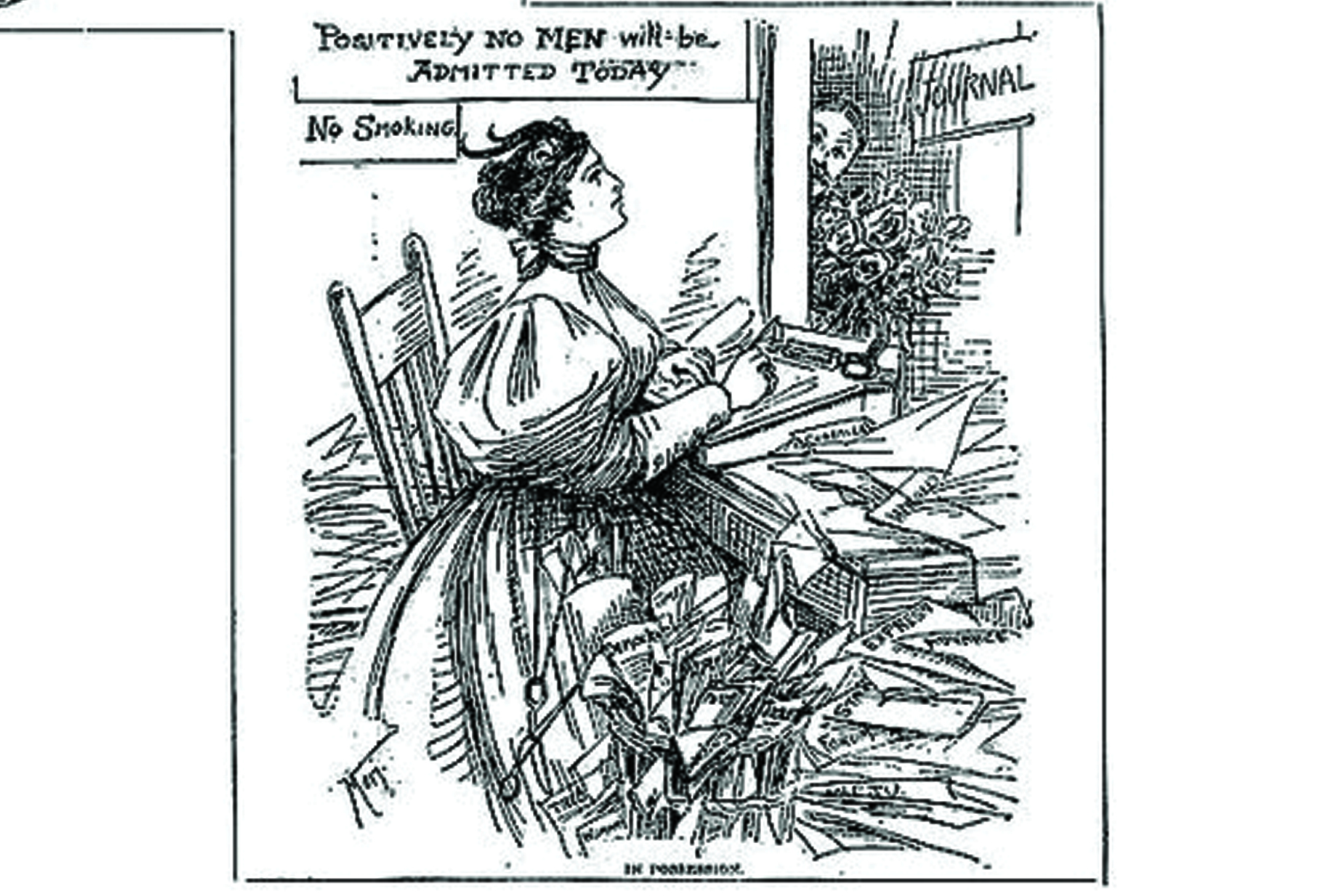
A western way of life and the Victorian Era were ending. The Indian lifestyles were nearly gone, and were depicted in Buffalo Bill’s Wild West Shows throughout the US and Europe.
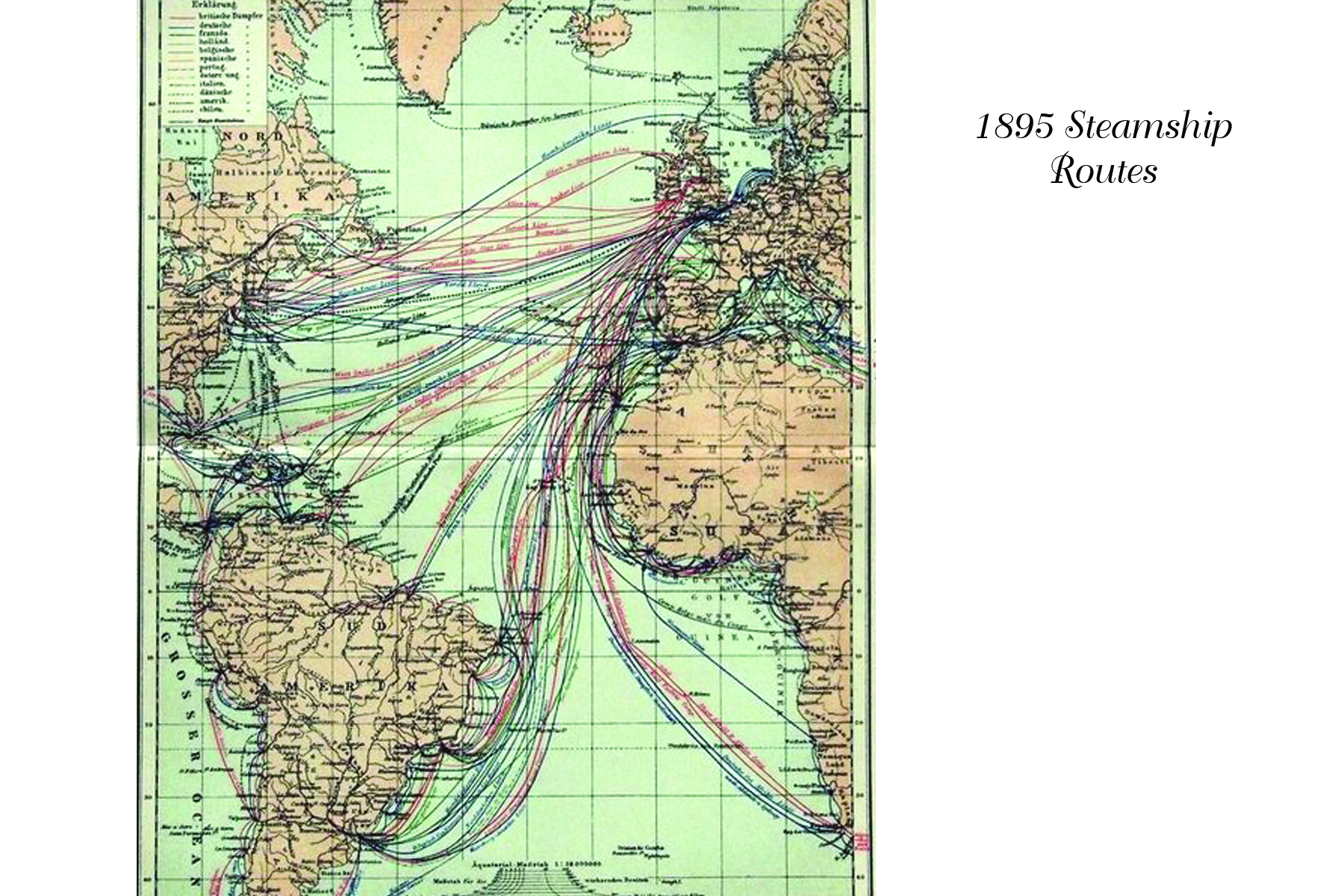
Steamship routes 1895
Women traveled alone, and Americans were coming and going all over the country – and the world – to work, play, invest, and learn. People came not only to settle, but to investigate or invest in the resources of the western US.
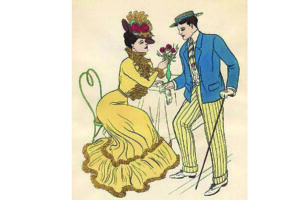
Naughty Nineties
This time was called the “Naughty Nineties” based on decadent art, literature, and society scandals. Strong women were taking control of their lives and were now fully engaged in a fast paced world of work, play, and power.
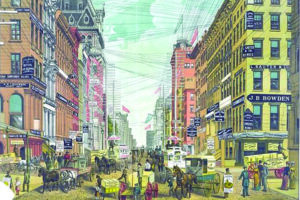
City
Science merged with industry so everything was bigger – ideas, ships, lights, and a “Bicycle Built for Two”. Women had expendable time to travel and see what others were doing because they had their own money.
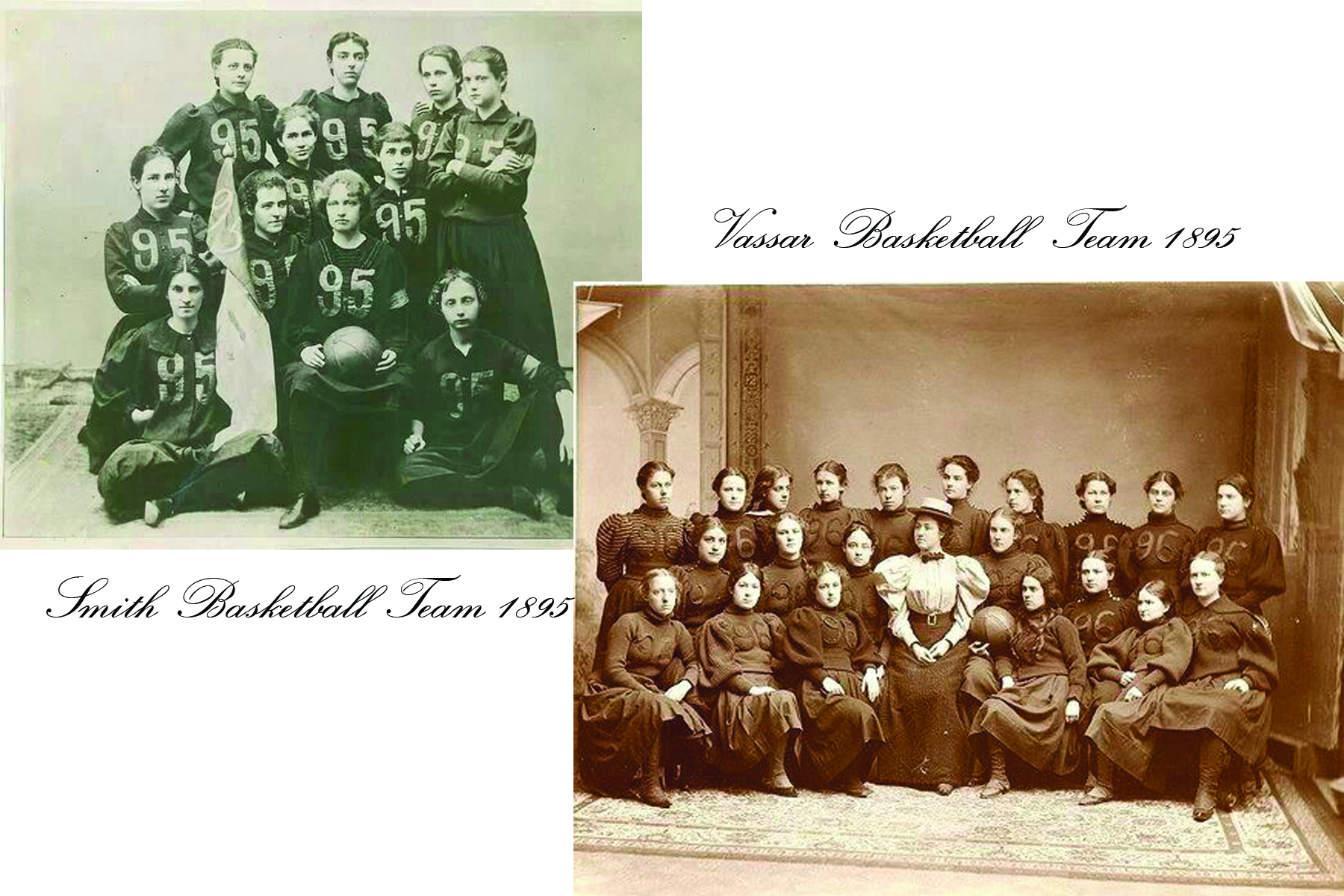
Basketball
While women were still wives in the home, they were becoming equals in the political arena, and proving themselves capable of competing in college sports the same as men (only half court).
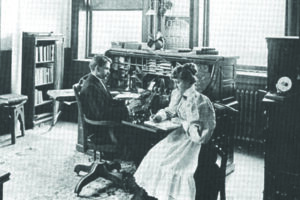
Working woman
Highly educated women began to work in offices and research, which led to the tailored “suit”, a no frills and somewhat masculine ensemble meant to blend into the male environment. Men hated it.
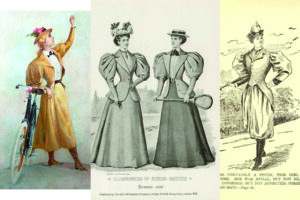
Sports clothes of 1895, predominantly cycling and tennis
Victoria still sat on the throne and made the fashion rules, although an industrial boom meant anyone could afford to wear whatever they liked due to cheap and available mass produced garments.
The year is characterized by elegant long lines, tiny waists, and BIG shoulders. Adding a tall collar, huge hat, and long train, and women looked CONFIDENT.
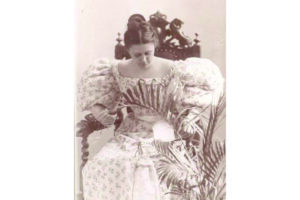
BIG sleeves
The whole country was open to possibility. Telephones, telegraphs, fast trains, and vast industries across the country meant a woman could t dance now dance one night in New York, and two nights later in Cheyenne.
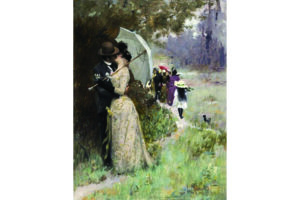
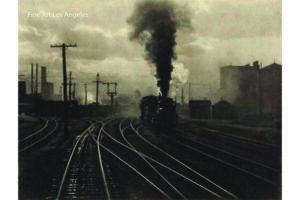
The Passion of Trains
“The Wild West” was becoming a curiosity to the world at the same time it was being “tamed” by government and culture.
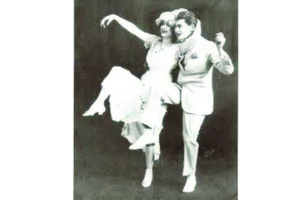
Dances like “The Tiger Rag” and “Drags” were very popular
1902
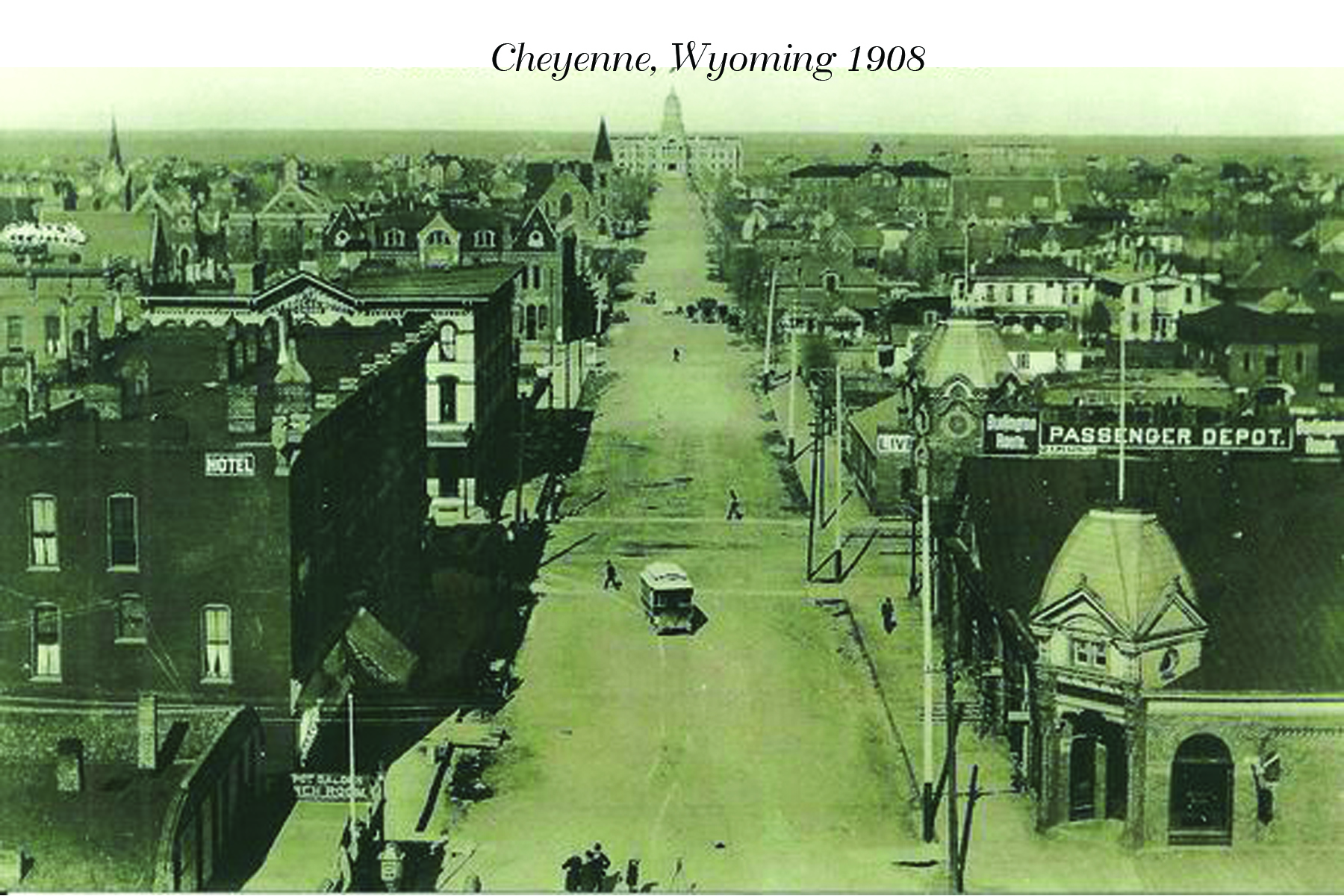
Cheyenne, first to have electric street cars because Thomas Edison vacationed there
The population of America had exploded, most of it in cities. The Wild of the West was being replaced by law and government, assisted by the latest technology of alternating current electricity for street lights, street cars, and the motor car.
Cheyenne to Deadwood stage
Cheyenne of 1902 had churches, a school, and 300 businesses in addition to its MANY saloons and cemeteries. It was a transportation, trade, arts, and government center of the west.
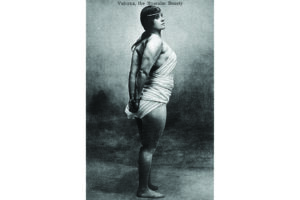
Body builder
The “New Woman” was an “Out of the House Woman” who was at last recognized as a thinking being who could offer more than being a social asset to a husband, although the dictate was still that the only truly successful woman was a wife and mother.
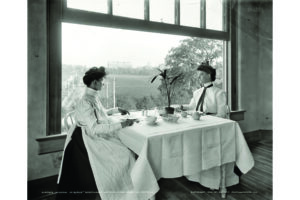
Working women on lunch break
With new employment opportunities, women were in the workplace, politics, sports, and organizations; outwardly stating their causes and working to help Indians, prisons, and orphans.
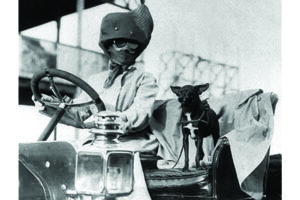
Auto racer
Technology, notably rail transportation, the typewriter, post office, gas, and electricity, made positive changes in the lives of women because these things gave them jobs, a way to get to them, and the ability to do work – on their own.
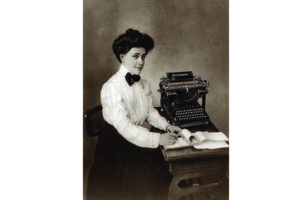
Typist, a top 5 Occupation
Women now commonly worked as governesses, shop assistants, and typists. Those with advanced education became teachers, secretaries, and office assistants.
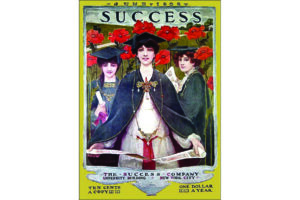
Magazine for grads
Unmarried women went to college and mixed with men in the workforce, although most still in subservient roles, but many became doctors, lawyers, and other professionals with equal status to men.
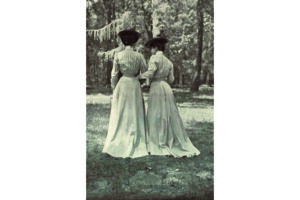
Gibson Girls turning backs
It was the Edwardian Era, but “true Edwardians” hated the concept of work. American women disagreed. High Fashion designers of France realized this and saw profit in creating functional fashion. They started with Edwardian style, mixed in some military, and came up with the “suit”.
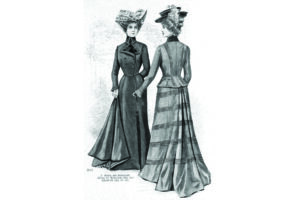
High fashion Plate of new suits 1902
First introduced for yachting by American company Redfern, designers improved fabrics and construction, and added the 3rd piece, the “blousewaist”, which had previously been only a contrasting center part of the bodice.
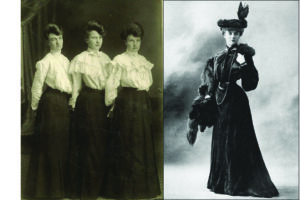
One vs two piece suits
A “suit” could be made from different fabrics, had layering for seasons, and was cheaply obtained from mass produced sources. Everyone could wear one, the difference between classes being the quality of materials, construction, and fit. Middle and upper classes wore all 3 parts; lower classes and rural women wore just the blousewaist and skirt.
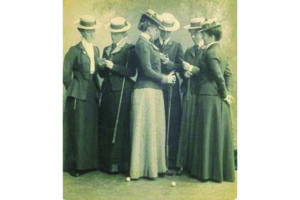
Collegiate golf team
In the rural West, a suit was simple, functional, and blended the lines between gender, class, and occupation.
Across the country many towns were being dominated by new factories and industries. Others like Cheyenne were becoming cultural and social centers. With improved railway v train and roadway systems, even single women could travel far from home and choose where she wanted to live and work alone.
Wyoming State Capital dedication, Cheyenne
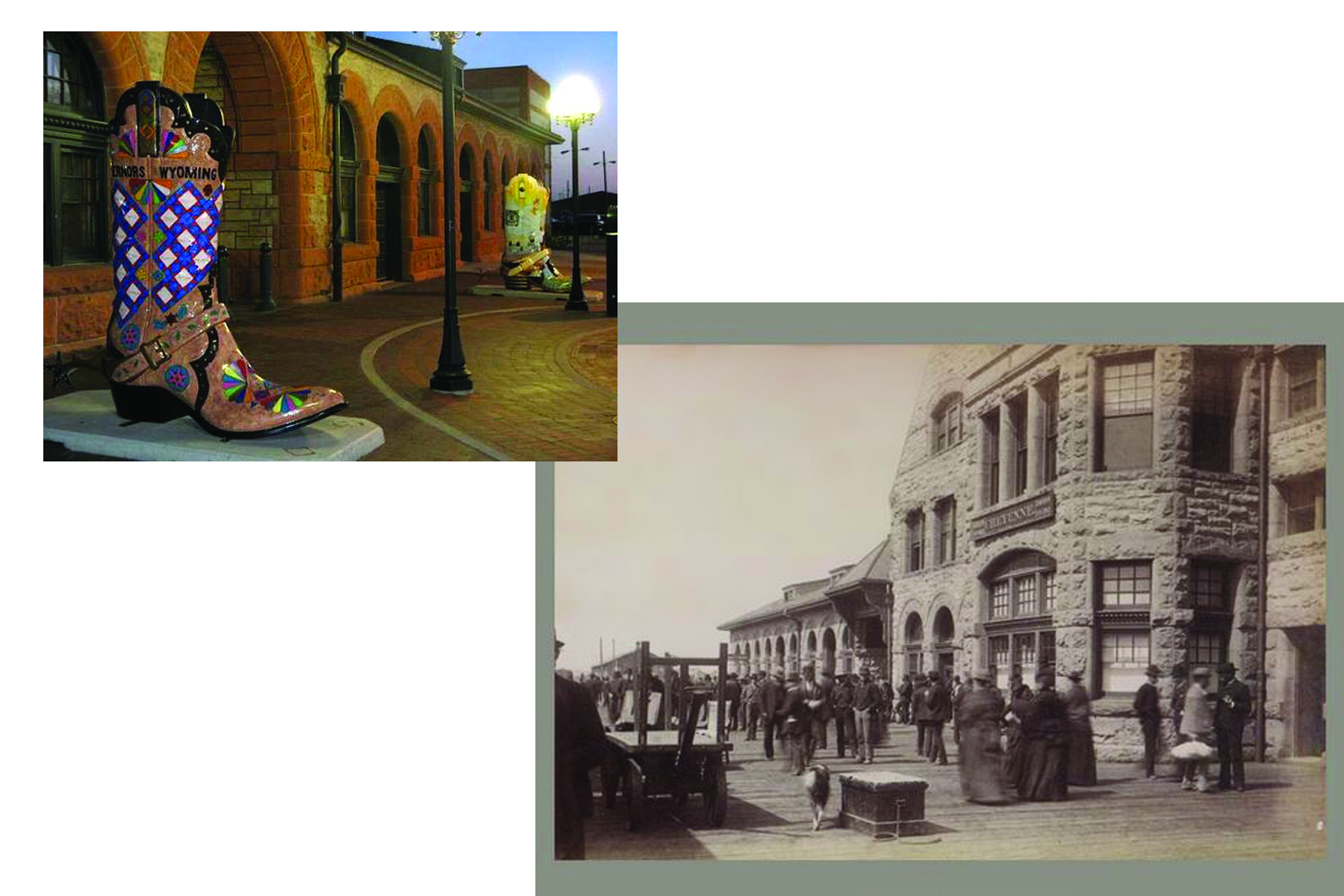
Railway Station Cheyenne, Wyoming 1902 and today
1903
The end of the Victorian Era meant “country became urban”. New machines, work methods, and an underpaid workforce including women and children made some people wealthy, and some very poor.
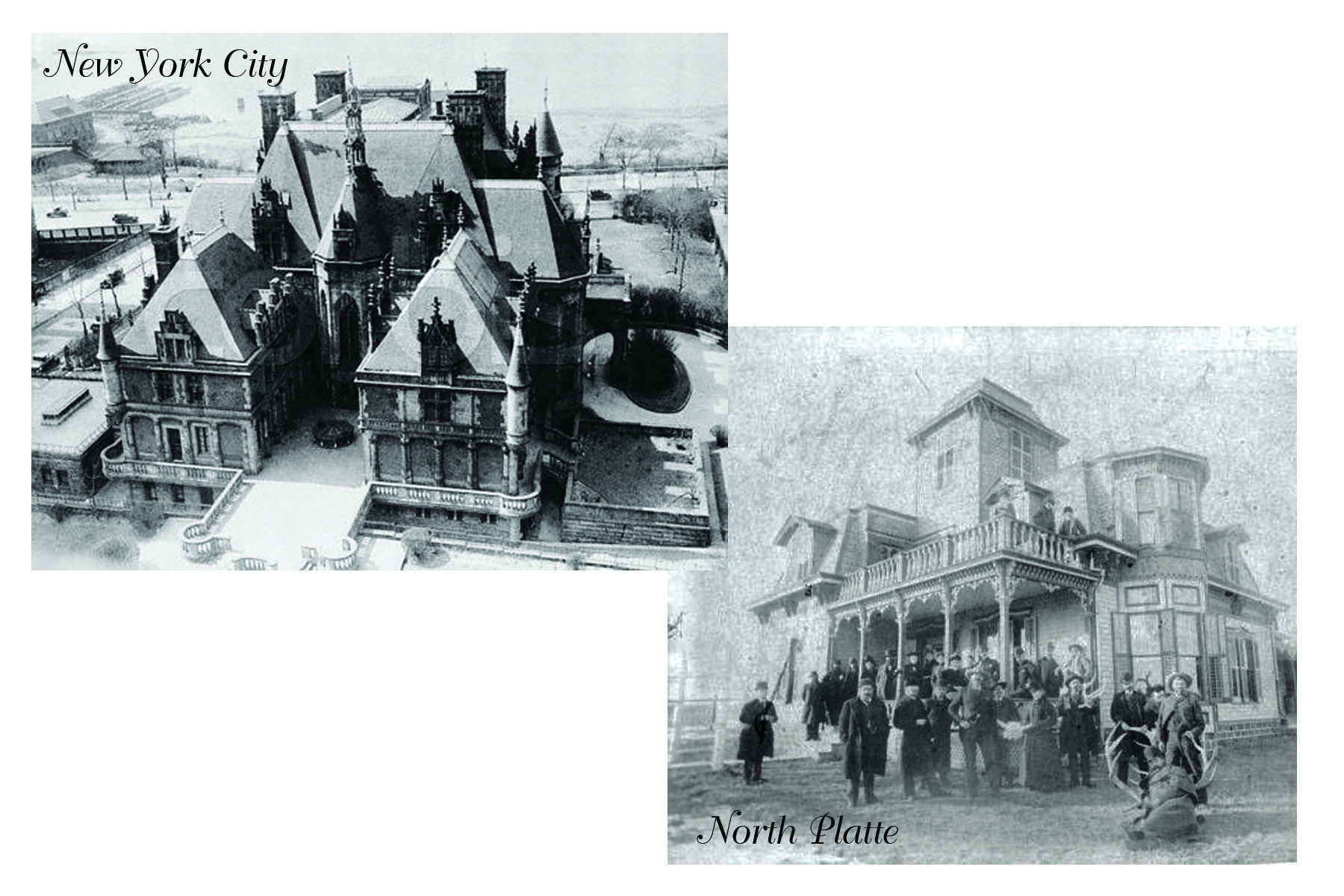
Estate houses
Americans rising in wealth wanted to display it. A wealthy American woman showed status by having a large house and many servants.
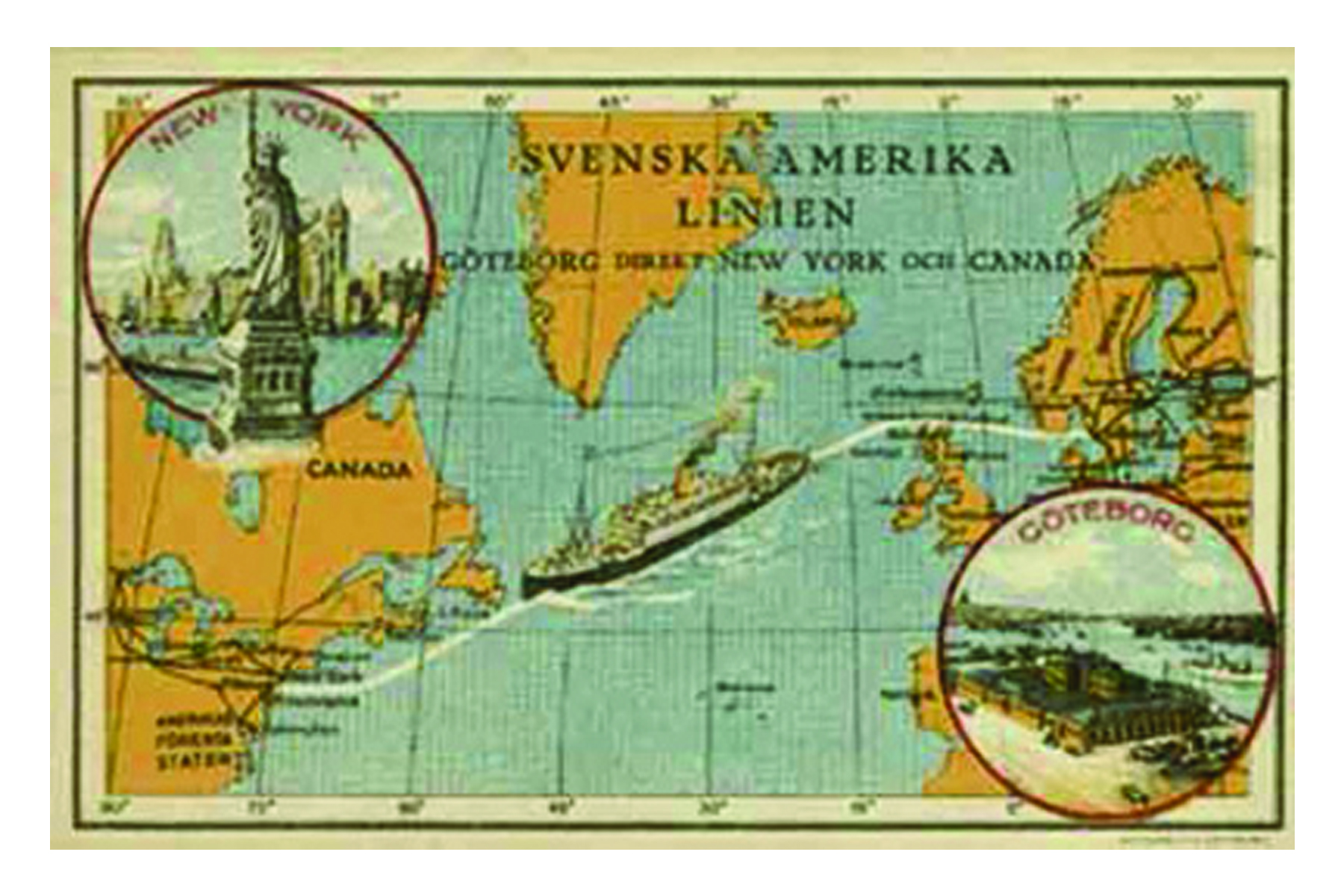 Swedes to America ship map
Swedes to America ship map
Young unmarried Swedish women came to the US for the specific purpose of becoming domestics. The lure of friends who already prospered due to their Swedish “dry farming” methods in Nebraska and Kansas called young Swedes to the Midwest.
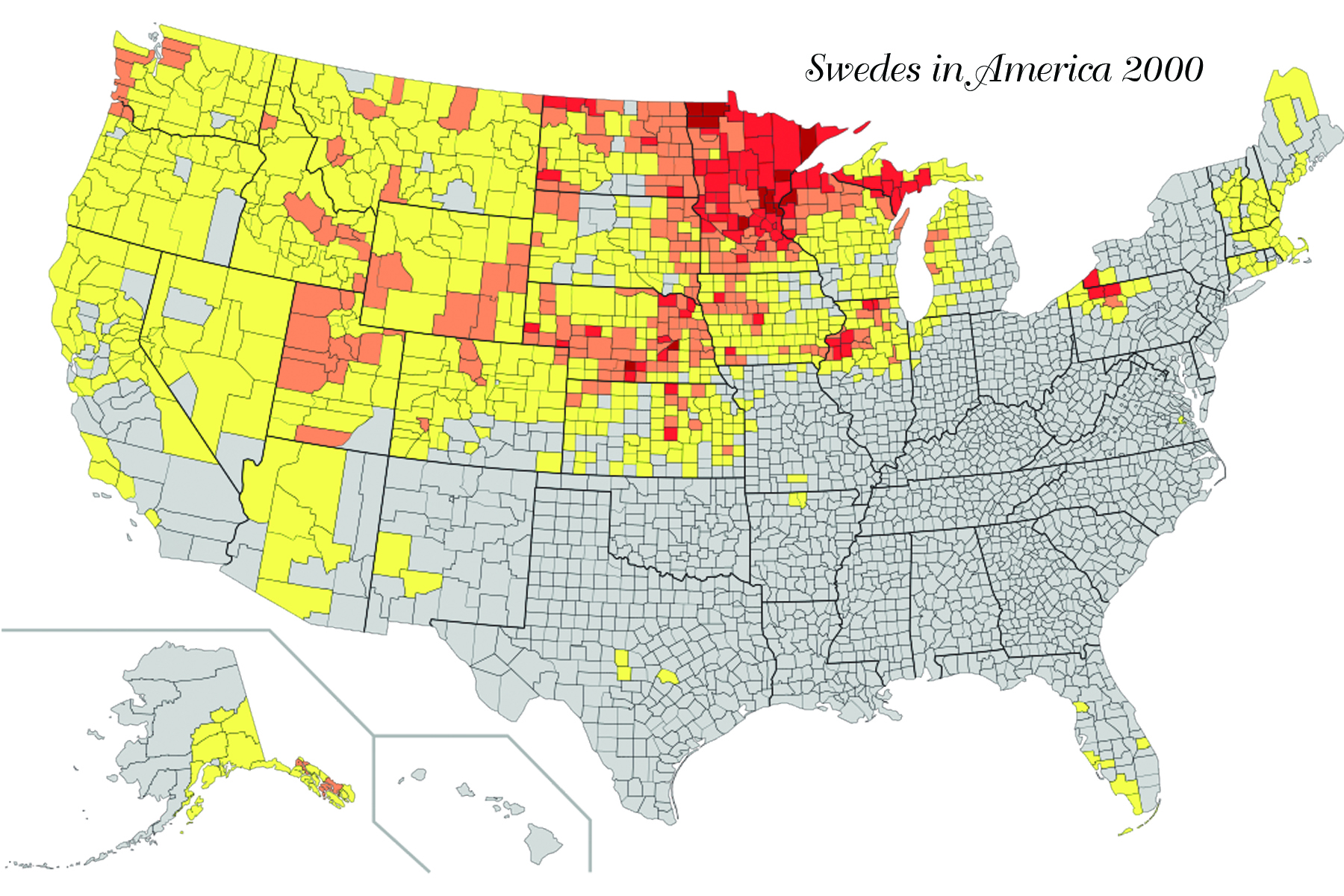
Swedes in America Map
Western ranchers traveled to trade centers like Chicago, Illinois and Ogallala, Nebraska to find Swedish domestics to work as maids or companions for a wife or mother.
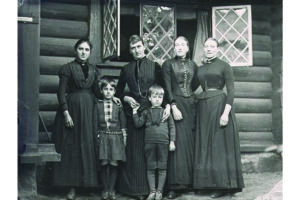
Swedish house servants in the West
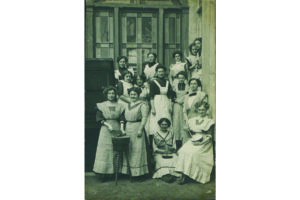
German house servants in the West
Swedish girls were much desired because they learned the language and behaviors quickly. They exemplified the era’s ideal of womanhood: elegant, sophisticated, hardworking, enterprising, and enthusiastic.
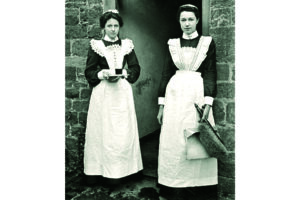
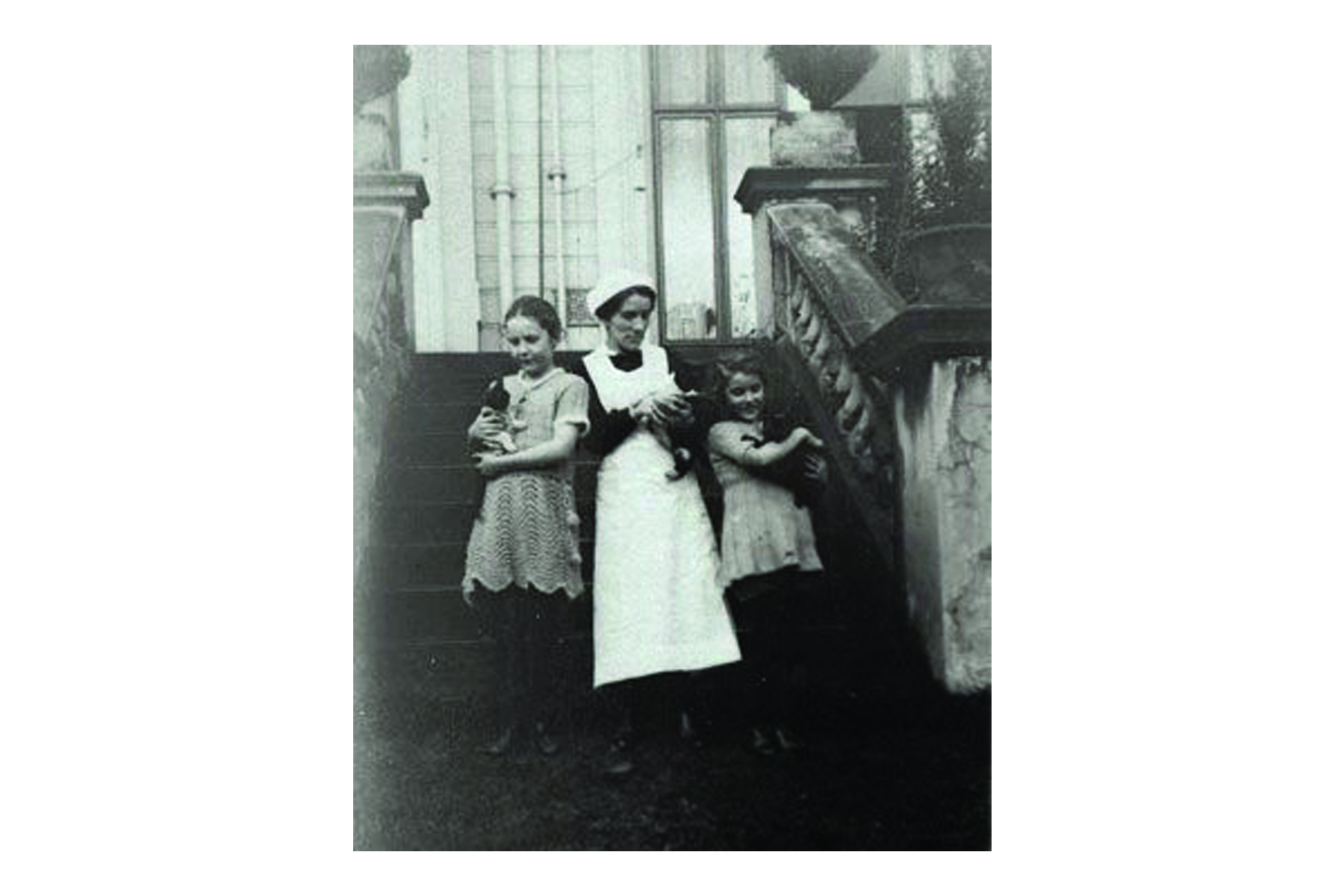
Swedish maids, A part of the Family
Employers took them to heart, and as adopted family, the employees mourned losses along with their employers. As an honorary member of the family, a maid would be required to follow the same social customs, although from a different pew in church, or different railroad car. She would be provided appropriate mourning and work apparel based on high fashion of the day.

Victoria’s family mourns Prince Albert
Women had grown up with Queen Victoria in her 64 year reign as she proved women could be leaders and mothers. At her death in 1901 her son, the new King Edward reintroduced the docile subservient woman who kept her home “a place of comfort away from stresses of an industrialized world”.
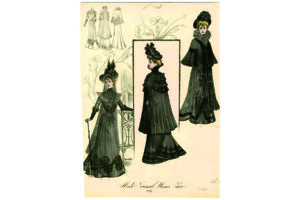
Mourning fashion of the day
Edwardian excessive frills clashed with Victorian mandates of functional and specific costumes for occasions. The result was highly complex mourning apparel.
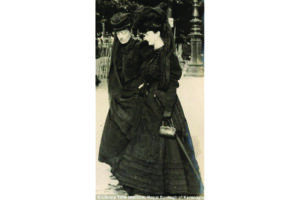
Full Mourning
Rules of mourning were many. The woman was the centerpiece, and the costume was designed to protect her from “inconsiderate comments and attitudes”. Full mourning lasted until one year and one day from the death of the loved one – all entirely in black, a full veil, and with only jet jewelry allowed.
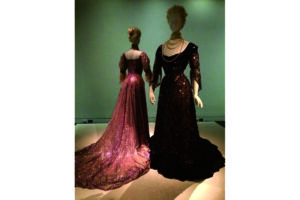
Half Mourning
Half Mourning started one year and two days from the death – with VERY subtle changes permitted – like a spot of white embroidery on a cuff or a mauve rosette on a hat. The next 6 months a woman could change the whole ensemble’s color to gray, mauve, or purple.
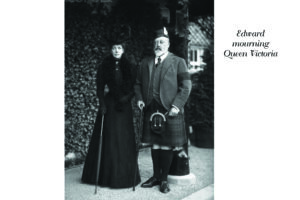
Son, now King Edward and wife mourn Victoria in 1901. Men only had to wear a black band for a month or two
Many like Victoria after the death of her beloved Albert wore mourning the rest of their lives. This was particularly common with large families like the Royals who seemed to always have someone dying. For them, black or purple armbands were acceptable instead of full dress.
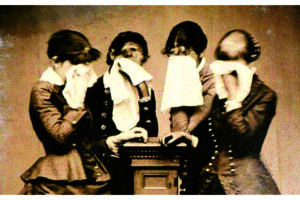
Staged photos
There were many rituals from making coffins with bells inside in case the dead was not really dead, to “post mortem photography” which propped up the dead on stands. Portraits of those left behind in exaggerated poses were popular too.
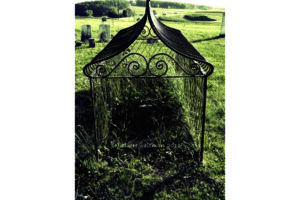
Fence on grave
Because graverobbers wanted cadavers to sell to science, wealthy people were buried in vaults while poor ones put metal fences or plants around graves that would show if anything had been disturbed.
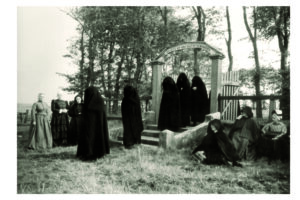
Professional mourners
The “Crape” industry made a fortune because that specific weave of black fabric was required. Doty wears a full mourning ensemble with a “crape” skirt with lace inserted under giant tucks. She has a hat with full face veil which she will gradually pull onto the brim to show her face over 2 years.
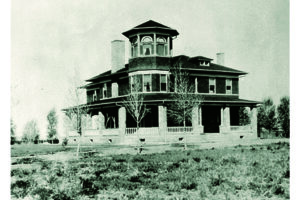
John Okie of Nebraska on the Wyoming border hired a Swedish companion for his ailing wife
Shoes with “serviceable heels”were worn by the Swedish women. They were quiet for bringing tea to employers like John Okies in Lost Cabin, Wyoming, or walking in the graveyard of “Lost Souls”.
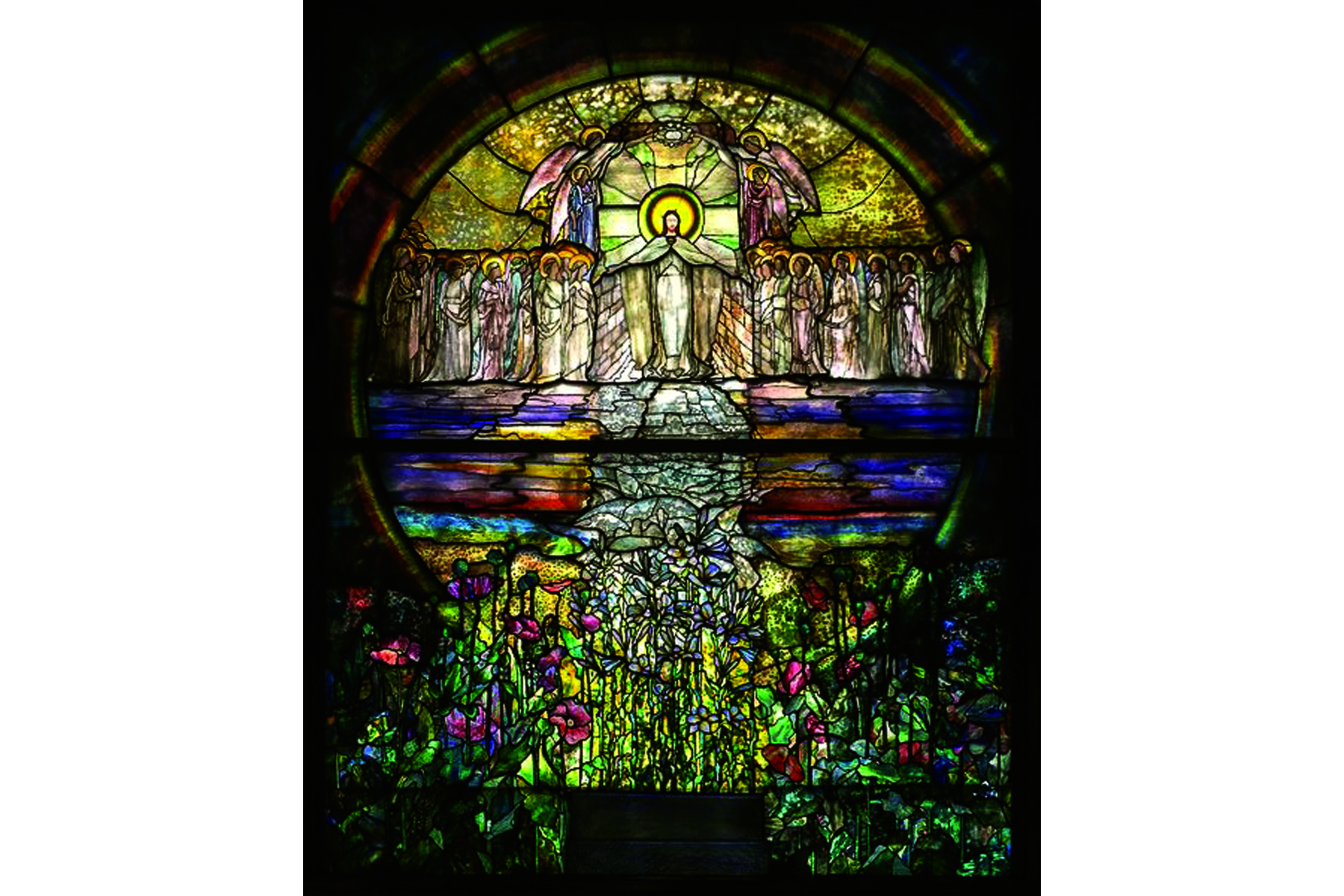
Stained glass depiction of “Lost Souls”
1905
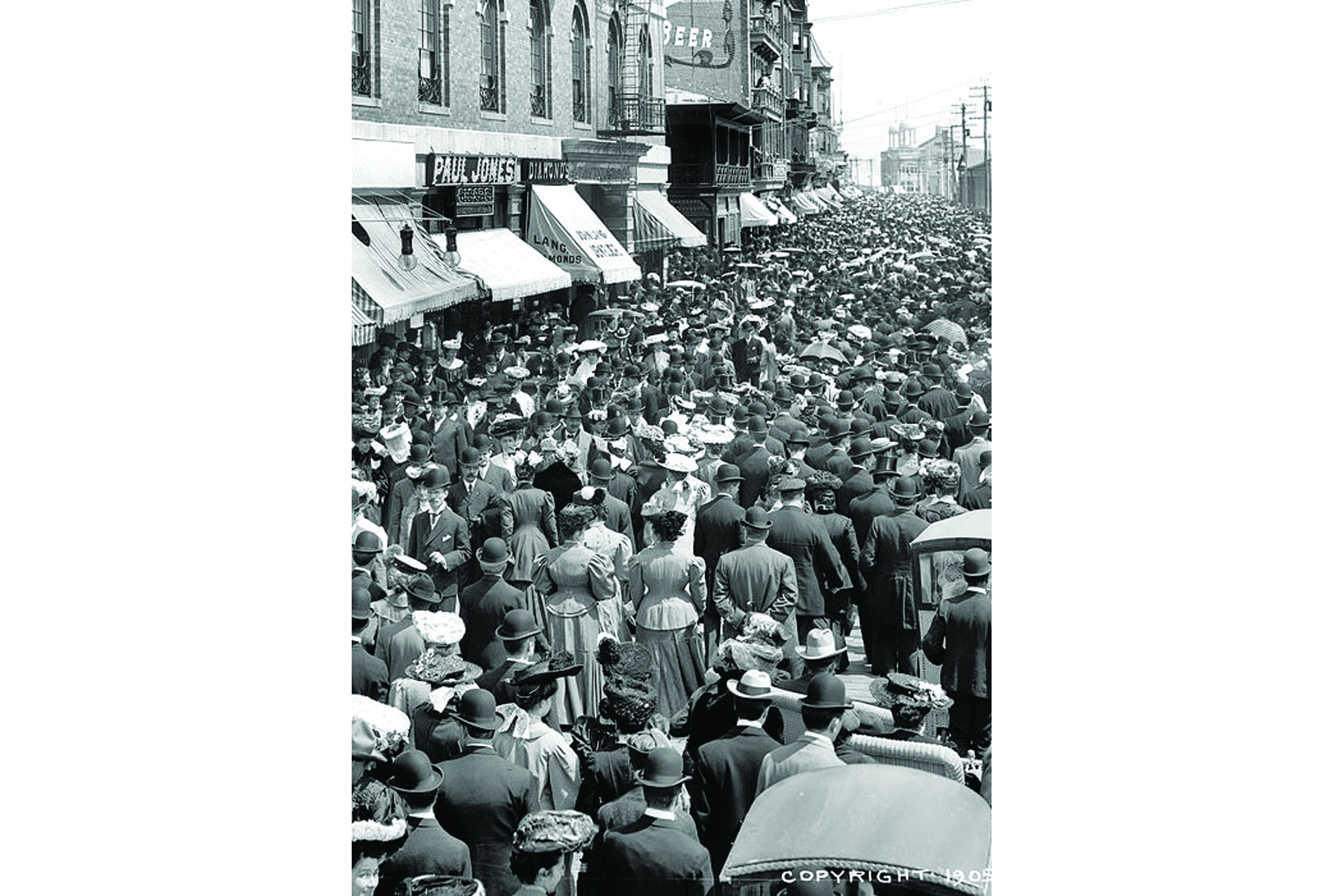
America moved at a maddening pace, with invention of the airplane, racecars, and fast communication networks using telephone and telegraph.
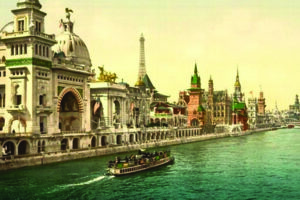
Exposition Universale, Paris
Another type of pioneer – one who goes back to the “Old World” her ancestors came from, was returning home with new skills to add to the American pool of talent.
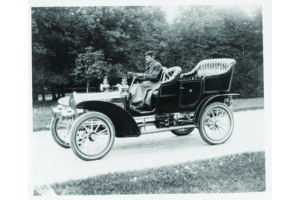
1905 car
The average person made 38 phone calls per year, 14% of homes had bathtubs, and women were now coming and going around the world, as fast steamships and the motorcar shortened time over distance.
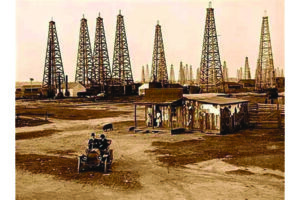
Oil in Texas
The discovery of oil in Texas had speculators heading West. A wealthy industrial class took advantage of a huge influx of immigrants including those moving from farm to city to overflow their factories with cheap workers. The biggest industries were making boots and malt liquor.
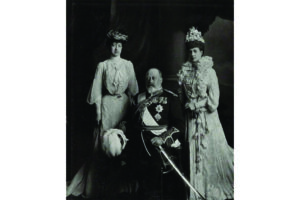
King Edward with Queen Victoria’s Godddaughter and Queen Alexandra early in his reign
It was the “Expansion Era” which introduced the “Century of Women”, as women’s rights, freedoms, and lifespans grew alongside open discussion of issues of the day.
Victoria was dead and the rules for living changed drastically under her son Edward’s rule. Edwardians were a “clique” of people who met the King’s standards of spending all their time drinking and flirting.
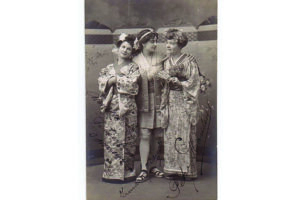
Non-Asian women dressed as geisha
Since ideas and goods now came to America from all over the world: lace from Belgium, silks from Japan, and imagery from China,.almost every ensemble had something imported or mass produced like the new “zipper” on hiking boots (the French would put them in men’s trousers later).
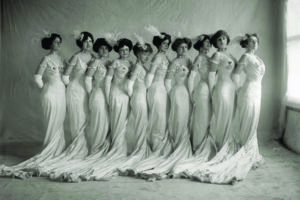
The new monobosum corset silhouette of the Edwardian era
Almost every woman aimed for the same silhouette, which appeared to be all alike at first glance: soft, curvy, and asymmetrical, but in reality with major differences as Edwardian fashion split into 5 main factions:
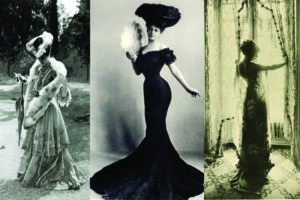
La Belle Epoque
1) La Belle Epoque which catered to royalty;
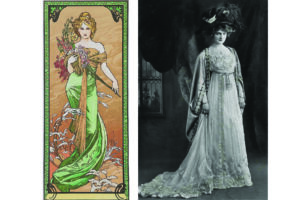
Art Nouveau
2) Art Nouveau; high quality crafted items to contrast with mass produced ones
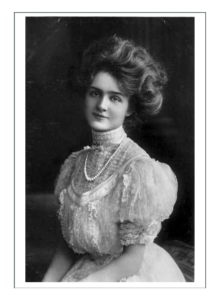
The Gibson Girl
3) The Gibson Girl; a marketing man’s dream of the perfect woman: “The Girl Next Door asks you to come up some time”, she was a large haired, voluptuous, young, strong, intelligent woman capable of anything, yet completely submissive to her man;
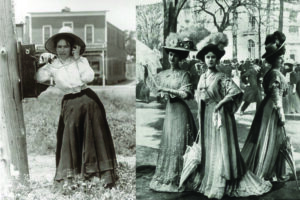
Work and Dame
4) Grand Dames having tea on the lawn and betting on horses, and 5) tailored suits of “Working Women”.
Which makes one wonder if it might have been the women of this fashion era who inspired the Otis company to install electric elevators in public buildings in Wyoming…
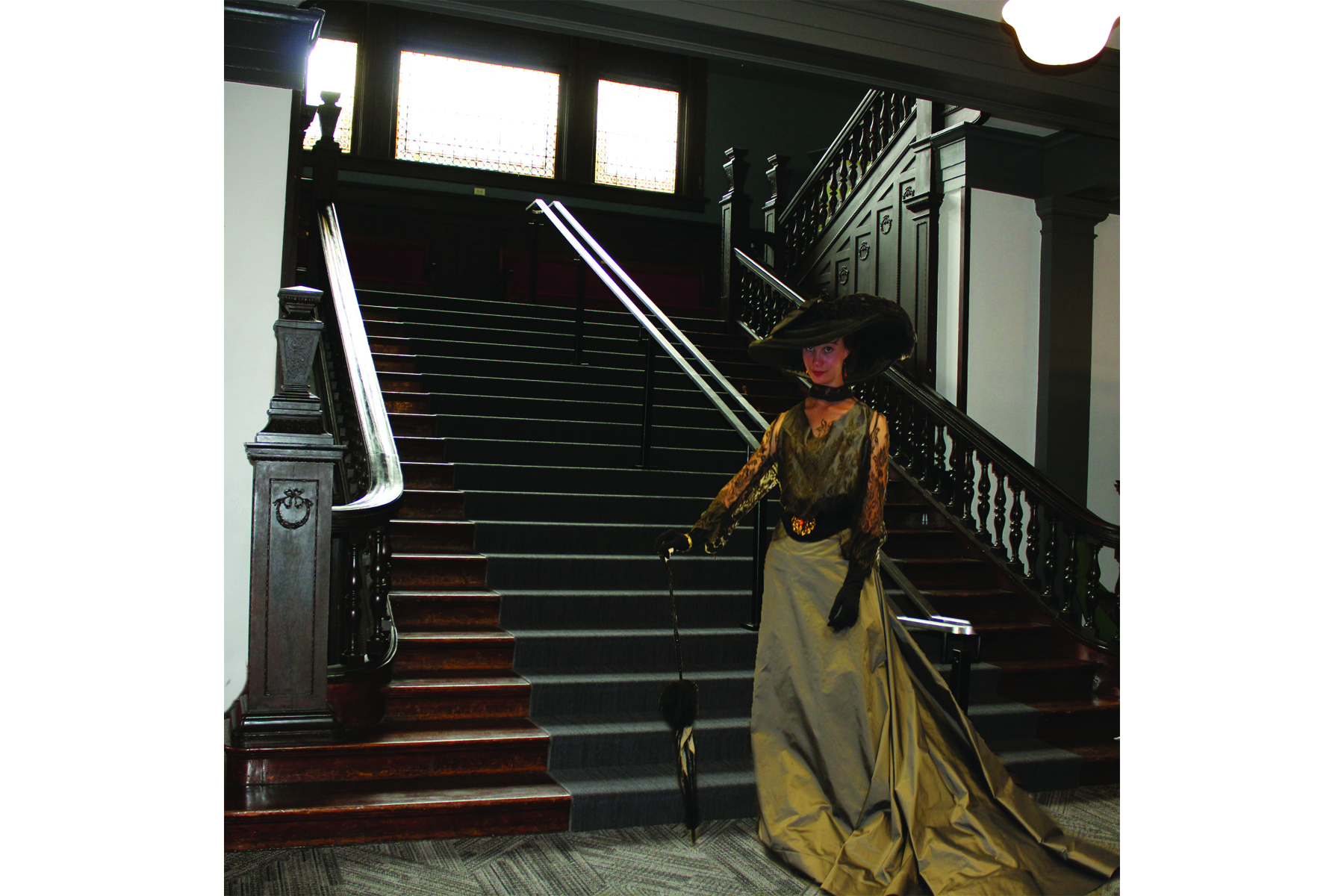
1910
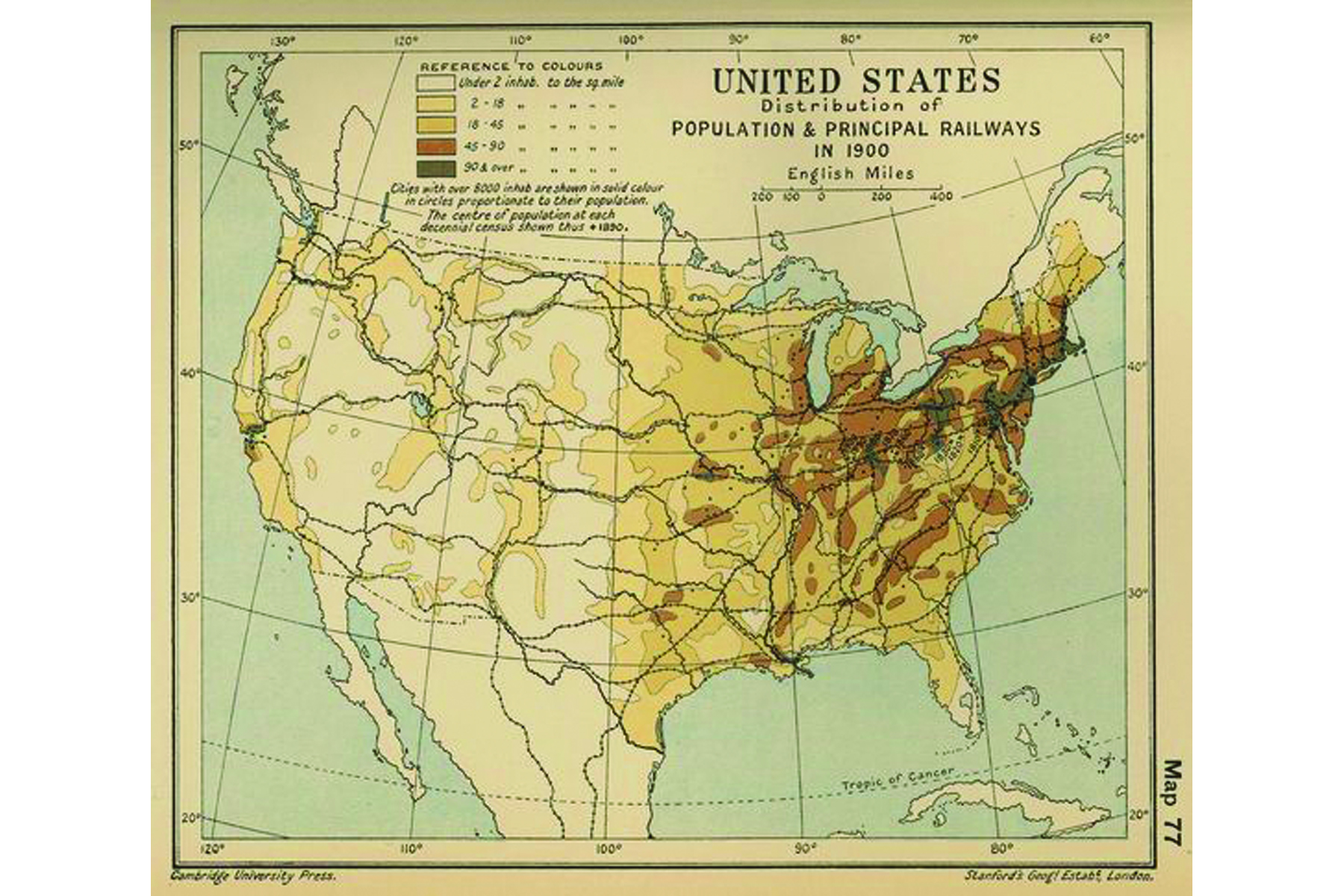
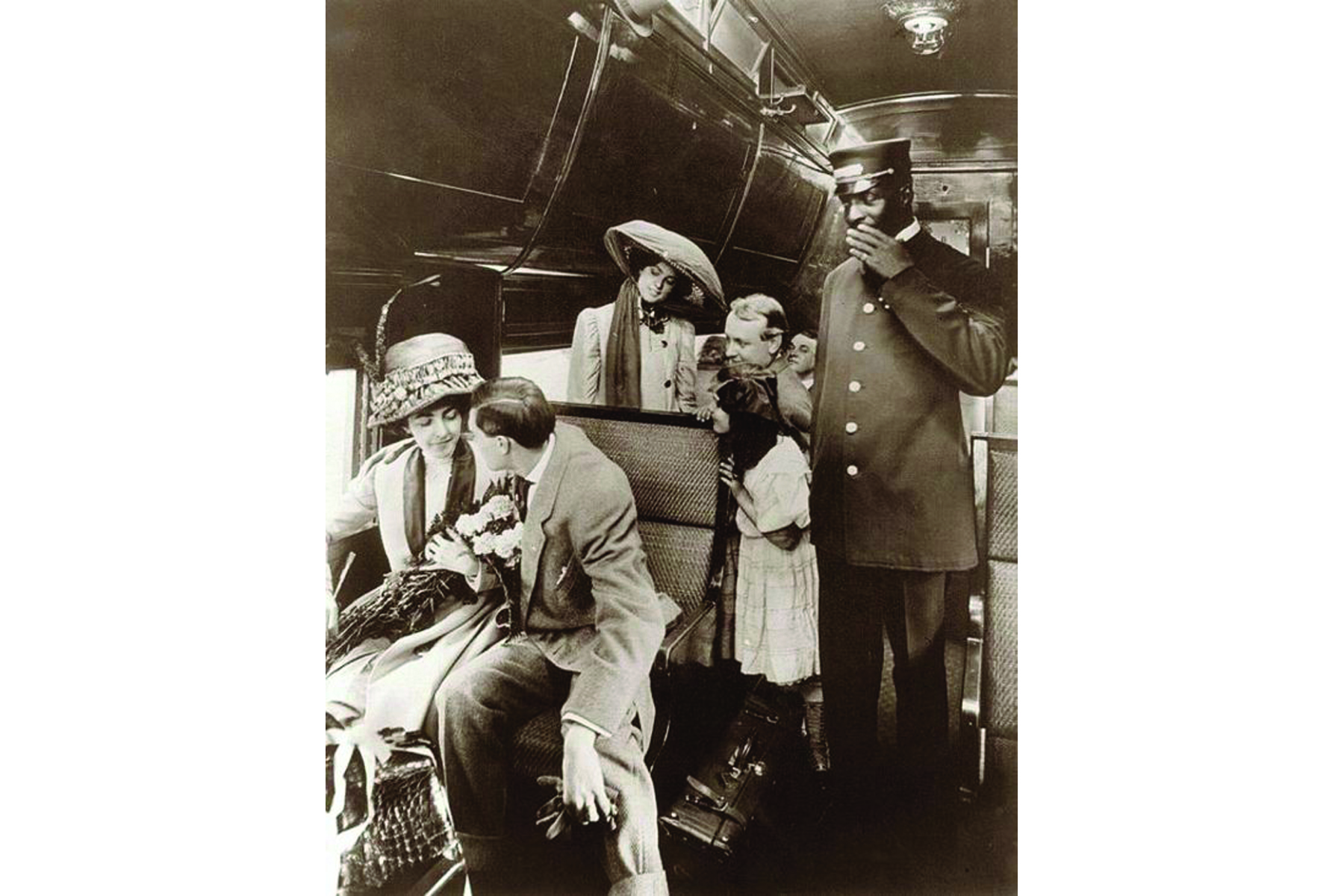
Trains were THE way to travel b7 1910
The population of the US was still almost entirely east of the Missouri River. 8000 cars were on the roads, and the first commercial airline flight delivered for a department store.
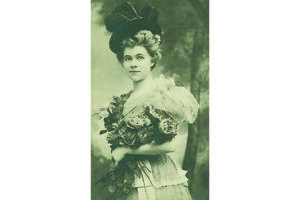
Young Lockhart
Yet another kind of pioneer went West – the woman in search of her identity.
Caroline Lockhart grew up in Illinois or Boston depending on who’s telling the story, lived in Philadelphia, and then moved to Cody, Wyoming, supposedly following a man.
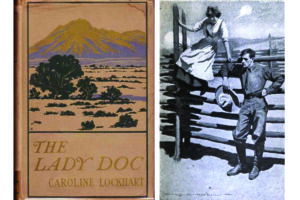
The Lady Doc book covers
Lockhart had been an investigative reporter and attributed her success to actually living the experiences she wrote about. In Cody, she wrote books about local characters and became quite famous with several novels, two of which were made into movies.
Working with partners, she established the local newspaper and the “Cody Stampede” rodeo.
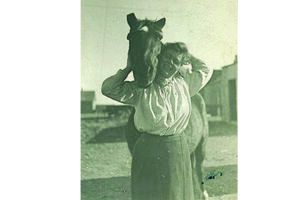
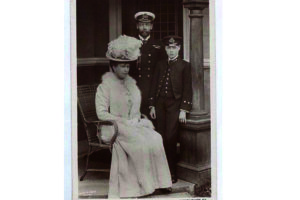
Princess of Wales in 1908
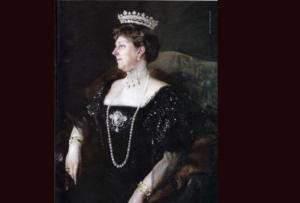
The Last English Princess, Victoria’s daughter Beatrice of Battenburg
1910 was the end of the Edwardian fashion era, as people were focused on events leading to war instead of lawn parties. The influence of European royals dissipated as more and more women went to work.
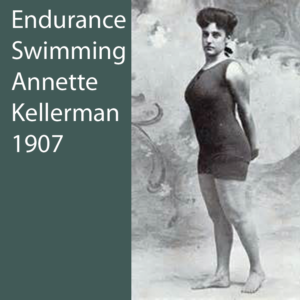
Kellerman in the scandalous knit bathing suit
Women, now having their own income, influence, education, and some political protections enjoyed new forays into worlds previously reserved only for men.
Athletic role models like Annette Kellerman paved the way for sexual freedom wearing her barely-there knit bathing suit.
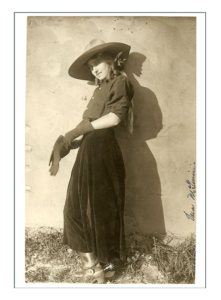
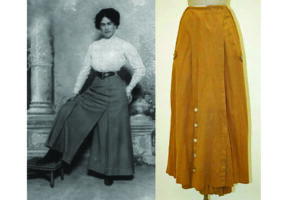
Split riding skirts by 1910 were becoming more common in the West
Split trousers and riding skirts, while still not worn in public except by female sharpshooters and other performers, were privately worn on ranch and farm by women like Caroline Lockhart. (see the section on riding skirts and riding astride in the Kateri Outlaw project).
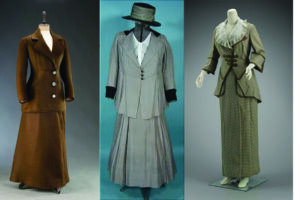
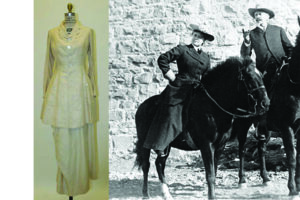
High fashion blended with functional suiting in the West
The suit, made of durable fabrics like Caroline’s gray denim, dominated day wear in the west and the overall look was very masculine. A suit brought a type of equality and blurred class and gender lines as it became difficult to tell the Princess of Russia from a farrier’s wife.
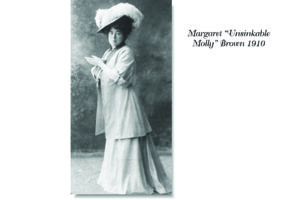
“Unsinkable Molly Brown” Margaret Tobin Brown in 1910
Western wear was designed so the redefined pioneer woman who lived alone could dress herself quickly. Like Colorado’s “Unsinkable Molly Brown”, women like Caroline Lockhart might have started out as followers, but ended up being leaders who kept men afloat – literally.
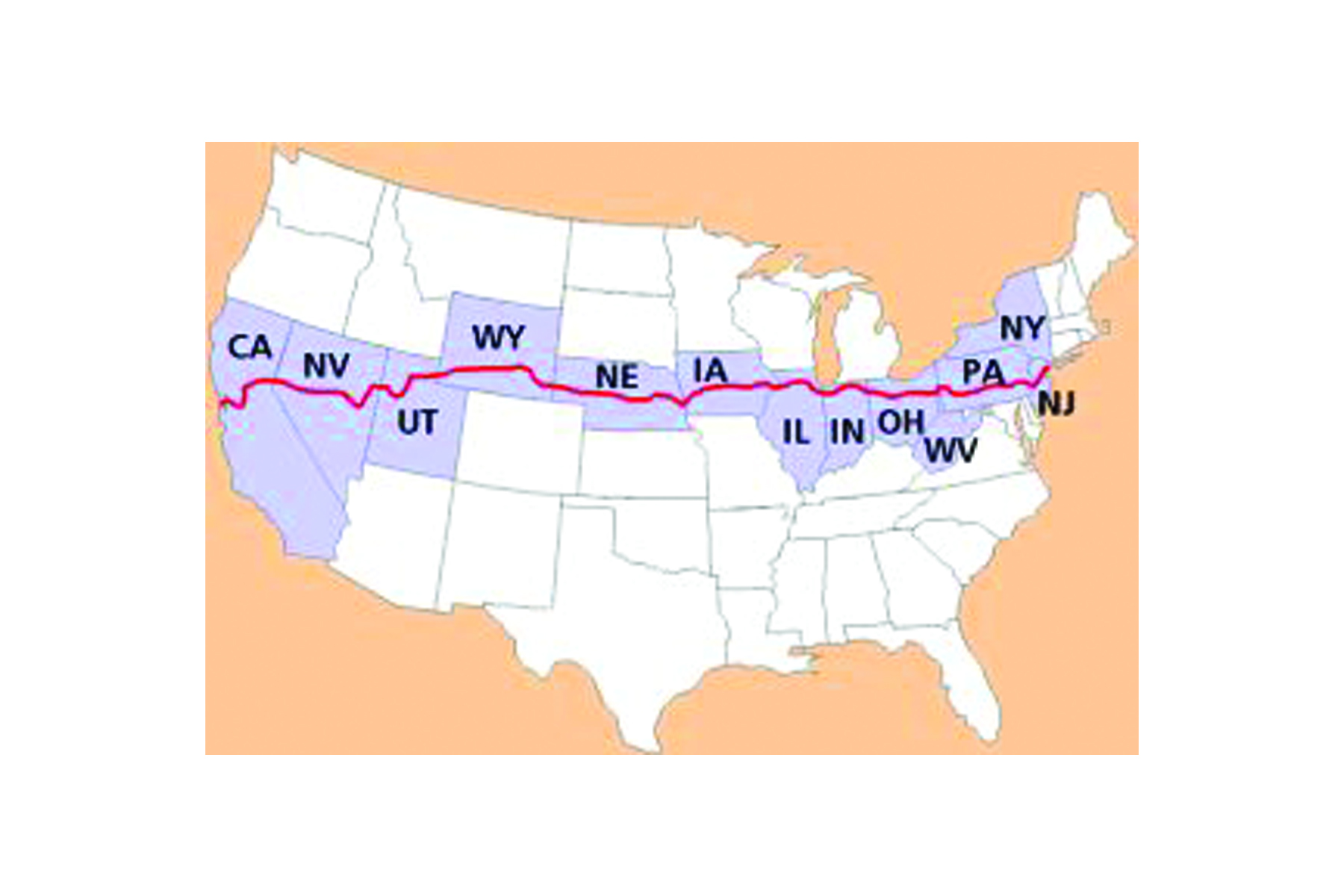
The Lincoln Highway was finished in 1913
The Lincoln Highway, first paved road across the country, was almost completed. Railroads, waterways, steamships, and hot air balloons had people going back and forth across the US and the oceans.
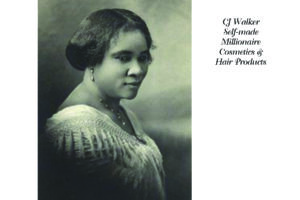
CJ Walker Millionaire
Women were running businesses, and pioneering was now about taking risks in entrepreneurship as female investors of all types and backgrounds from around the world took stock (literally) in America.
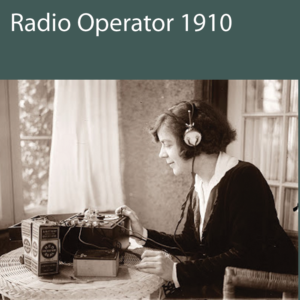
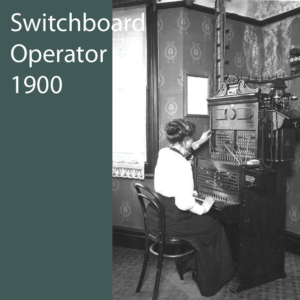
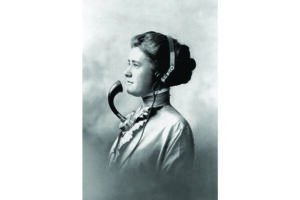
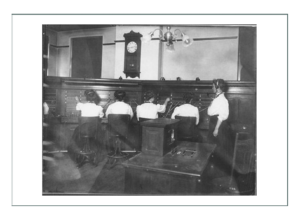
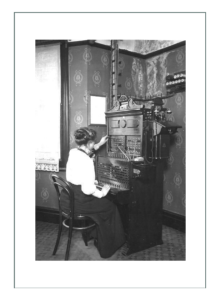
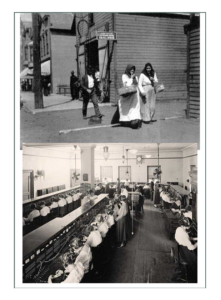
Best paying jobs for single women at the time – switchboard, telephone, and radio operators in the cities
People were not isolated even in remote regions as there were telephones and electrical lines and transportation routes most everywhere. Rural cities could match the culture and refinement of the big ones as they were now well established with schools, libraries, churches, museums, and theaters.
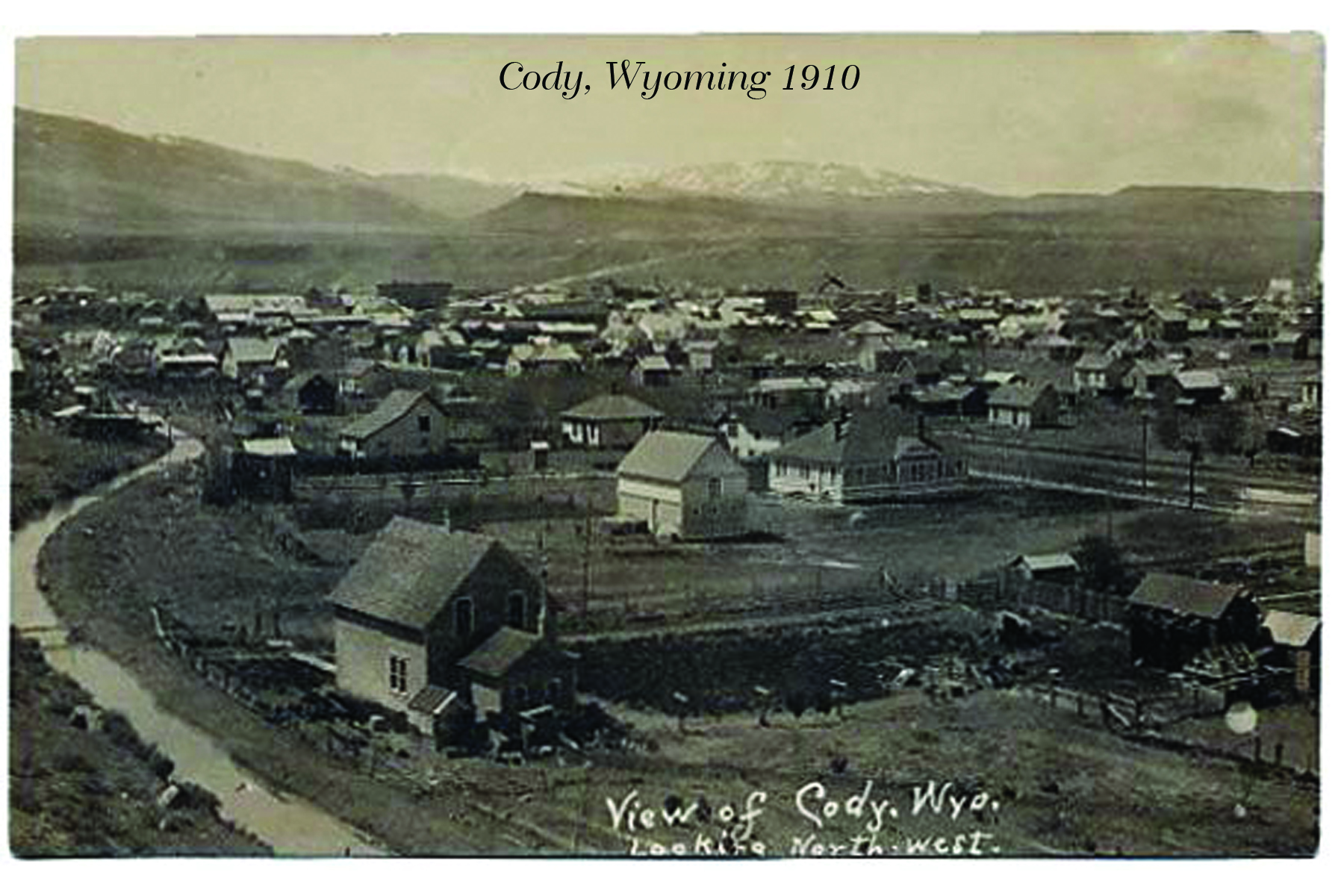
American pioneers had settled down.
1911
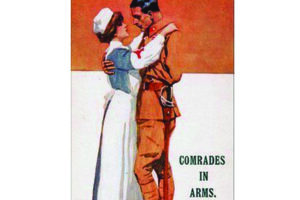
Comrade in arms
It was a “Golden Age” with a bright and happy mood contrasting with wars just ended and those lurking in the near future. Frank Lloyd Wright built his first Prairie Style,
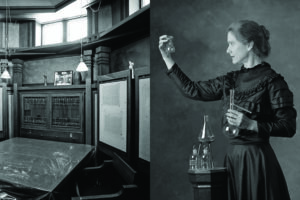
Curie and Wright
Madame Curie won the Nobel Prize for chemistry, and the cure to typhoid was found; unfortunately after “Typhoid Mary” escaped quarantine and caused a New York epidemic.
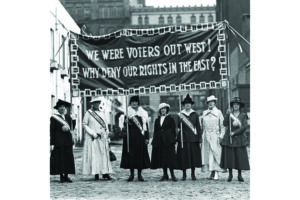
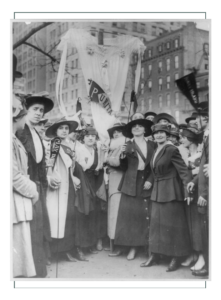
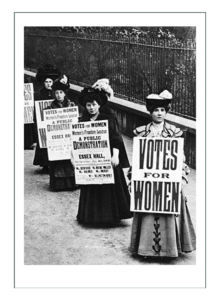
Suffragettes
The youthful American spirit pervaded science and fashion. Women were now active members of society, and women of all classes worked, although still limited to gender specific jobs like nursing.
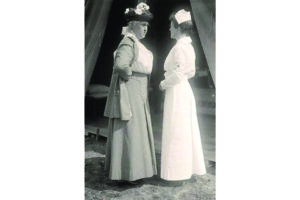
Boss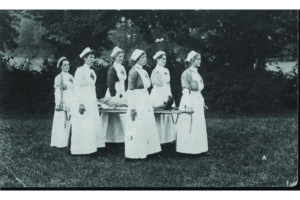
American Nurses in France
Nursing in the US had evolved from its ancient origins with nuns and herbal healers to become organized in cities to help urbanized society deal with industrial strife. Class disparity, in parallel with society at the time, divided the nursing profession into:
High low nurses
“Heroic” and popular “Lady Nurses” like Florence Nightengale who is credited with establishing the profession as we know it today, who performed “scientific” work such as giving medication or carrying out complex wound dressings, while “Working Class” Nurses did the “dirty” work, were anonymous, and had society’s contempt.
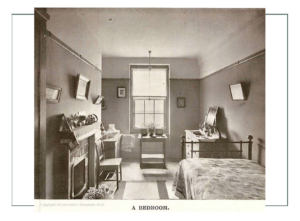
Most nurses who worked for large institutions lived alone in apartments on the campus of the hospital for which they worked
These young nurses were yet another type of pioneer who ran straight into danger with their white caps signaling their location to those in need because they believed it was what God intended for them to do.
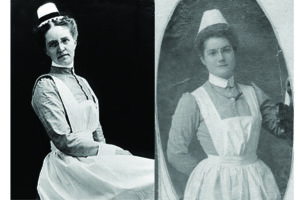
Mabel MacIntosh (left)
Captured by the Germans, real WWI English nurse Edith Cavell summed up the character of the war time nurse in her final words as she faced her executioners: background silent here:
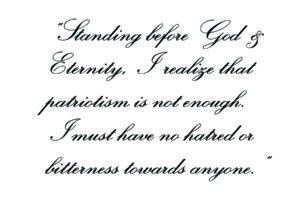
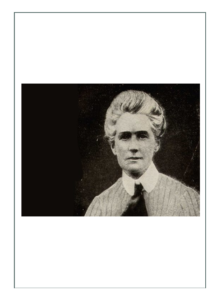
Cavell Quote and Edith Cavell in suit
“..standing before God and Eternity, I realize that patriotism is not enough – I must have no hatred or bitterness towards anyone.
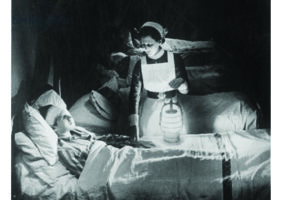
A new world awareness opened the curious eyes of Americans. Travel abounded for Americans of means to explore the Asias and Europe.
1912
Cotton Mill Massachusetts 1912
The US was the leading exporter of cotton, wheat, and farm products, and by the next year, would also produce 32% of the world’s manufacturing output.
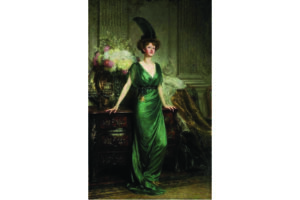
Mrs.Emmett of Ireland
The Titanic era was part of the “Lost Golden Age”, a MOOD that expressed the epitomy of beauty in contrast to horrors of war – for those who could afford it. The “Titanics” came out of a specific market geared to royalty and political or financial leaders.
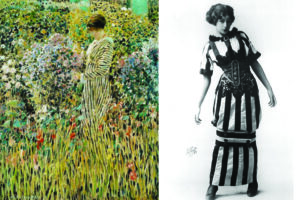
Impressionism
Those who had money wanted to forget the “bad stuff”, and were drawn to light entertainment like casinos and cabarets. The ARTS flourished, with Masters of Impressionism rising to stardom. Developments in cinematography brought movie starlets and their behavior into the public eye.
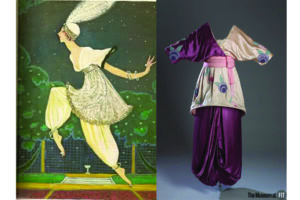
Titanic is a “feeling” in Poiret turkish trousers
“Titanic Fashion” was a “feeling” and not a “style. It originated in the fashion houses of Paris who were trying to create luxurious grace and femininity as an expression of women’s new and daring place as thinking individuals.
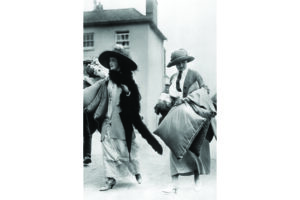
At the Regatta – it took many trunks of clothing to dress the fashionable Titanic woman
“Titanics” were custom ensembles with amazing detail and superb construction. It was a good time to be a tailor because customers typically took 18 trunks of gorgeous clothing on a road trip.
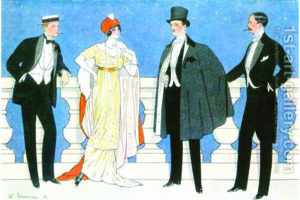
l’homme elegante
Worth and Poiret fashion houses were particularly noted as “Titanic”. Both drew influence from the orient and middle east in the use of rich silk fabrics with intricate embroidery and trim.
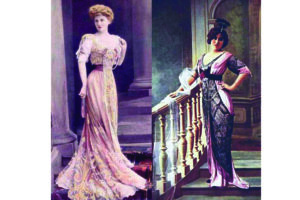
Worth elaborate costumes
Worth used copious amounts of beads, jewelry, fringe, lace, and braids in his designs. Performing artists liked them so much they wore their stage costumes out in public.
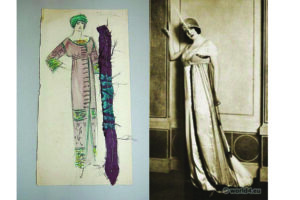
Poiret Empire
Poiret brought back the “empire” waistline and under his leadership the ideal silhouette became rounded with hints of curves at bust and rear end so that what first appeared to be long and slim, was really about the luscious sensuality of the wearer.
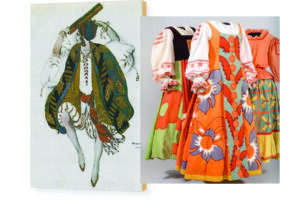
Ballet Russe
Sensitive to the mood of society and bold Ballet Russe costumes, Poiret used lovely rich fabrics to give wearers the look of harem girls. He brought saturated colors and brilliant hues at a time “sweet peas “were being worn by other Edwardians.
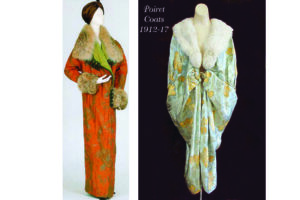
Cocoon Coats
“Orientalism” in fabrics, patterns, and colors worked well with new synthetic dyes and print processes. It is “Orientalism” that distinguished “Titanic” fashion from other Edwardian fashions.
The world for women would be very different and a bit scary in the next years,
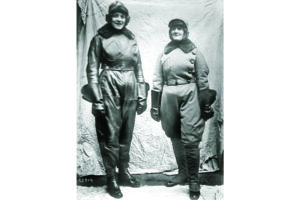
1912 Women in Pilot Suits
…so “Titanics” worked hard to lift the spirits of all they met as they explored the world on luxurious steamships.
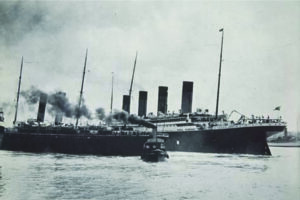
The USS Titanic loading up for its maiden (and fatal) voyage
SUMMARY
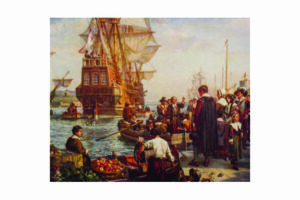
Pilgrims
They came TO America..and moved to places within; then west and further west.. until there came a time they went back – across the country; then back across the ocean…
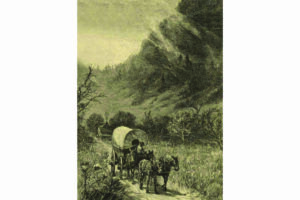
Boone on Wilderness Trail
As each generation of westering women came, they left with more freedoms and opportunities.
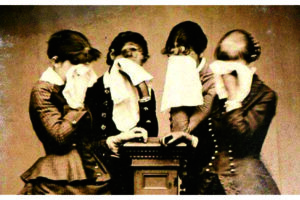
Mourning
We have touched on the lives of a few women who reflect the diversity of America and yet reveal certain common traits –
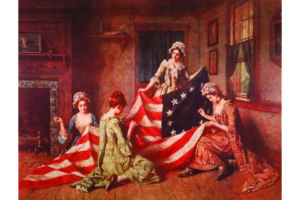
Sewing the flag
-individualism, independence, and a sustained dedication to a dream pursued with immense energy and courage.

Suffragettes
In this they were alike as pioneers of the spirit, people who created and shaped the America we live in today and made the footprints for us to follow.
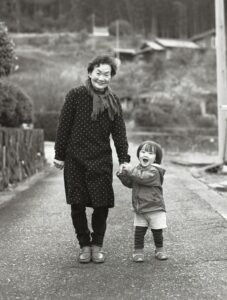
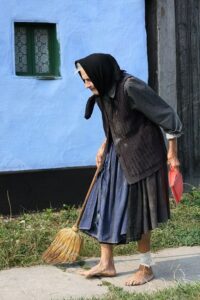
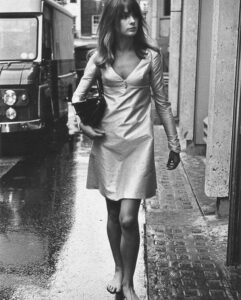
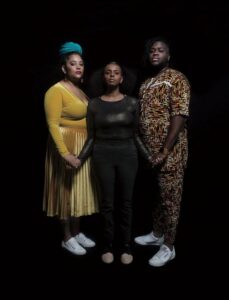
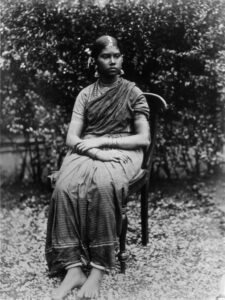
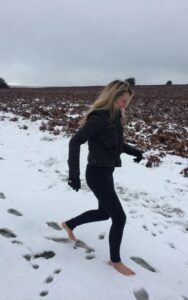
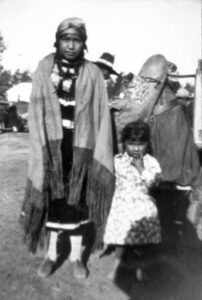
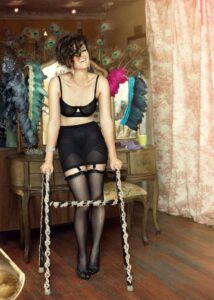
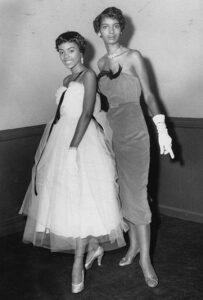
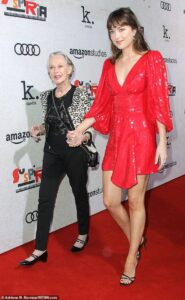
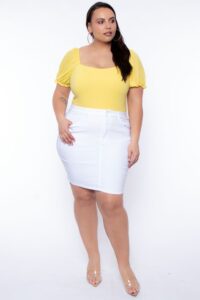

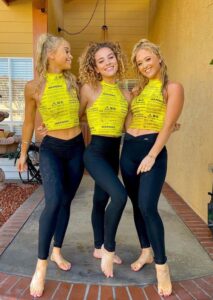
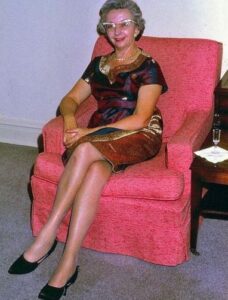
A Collection of modern women

